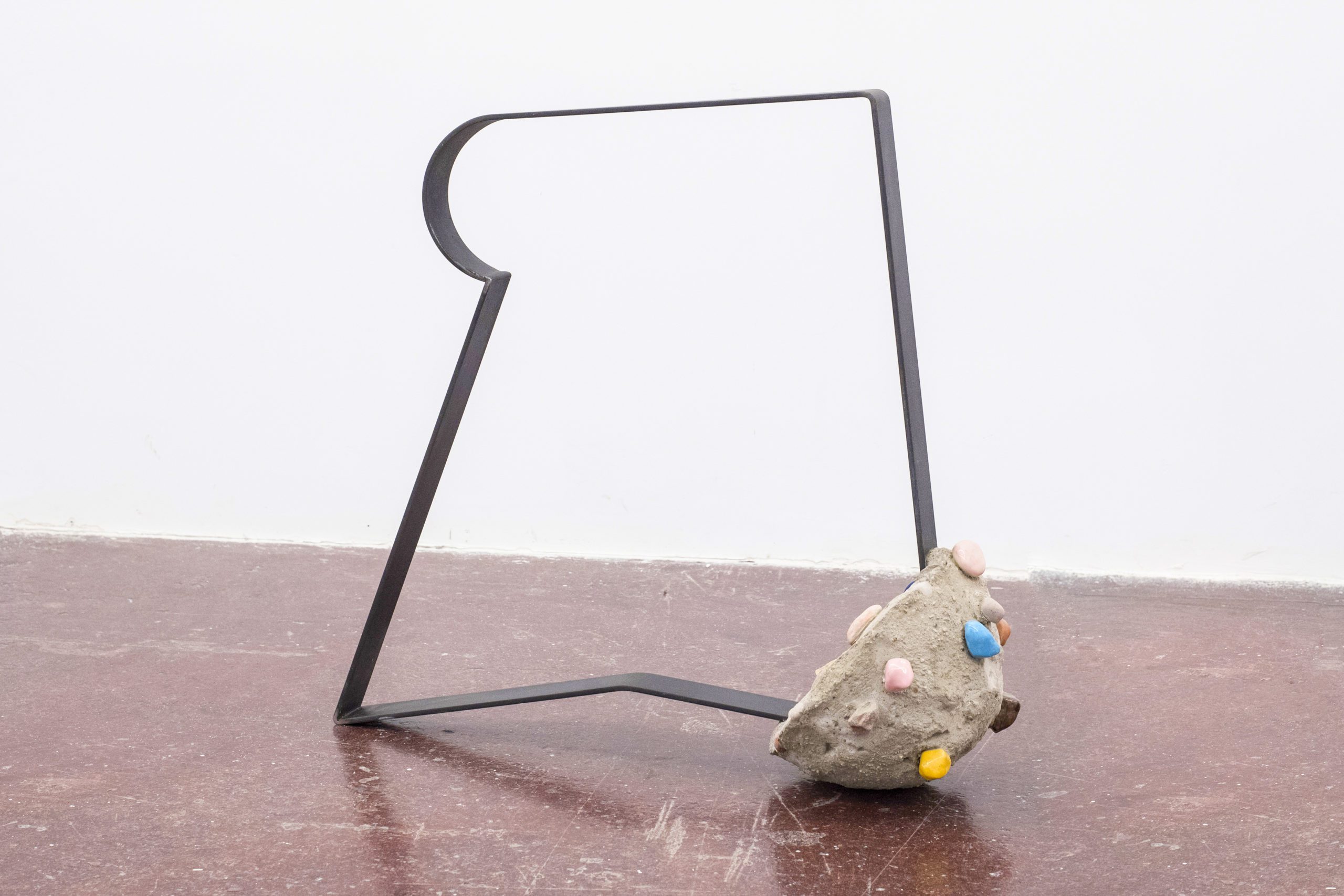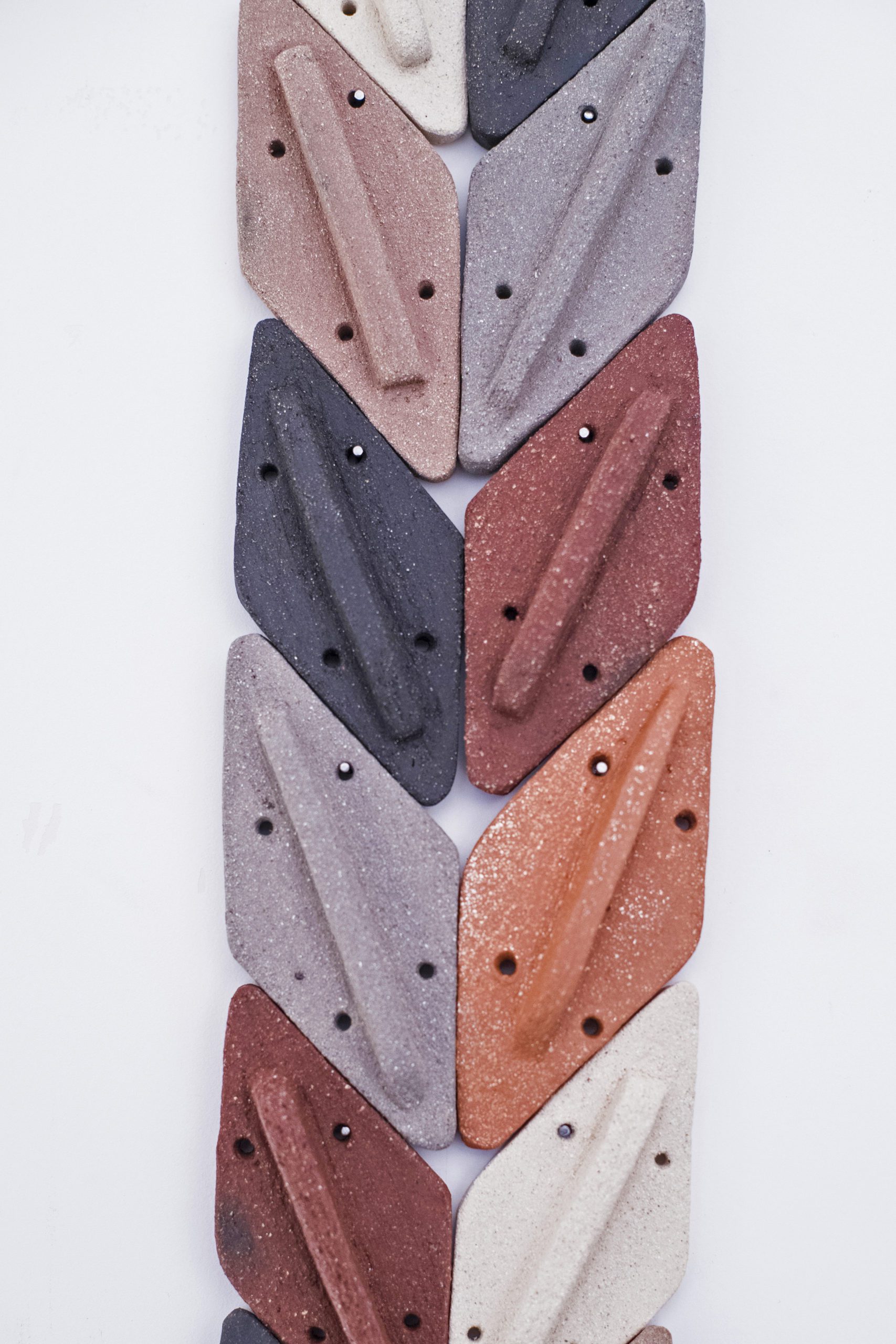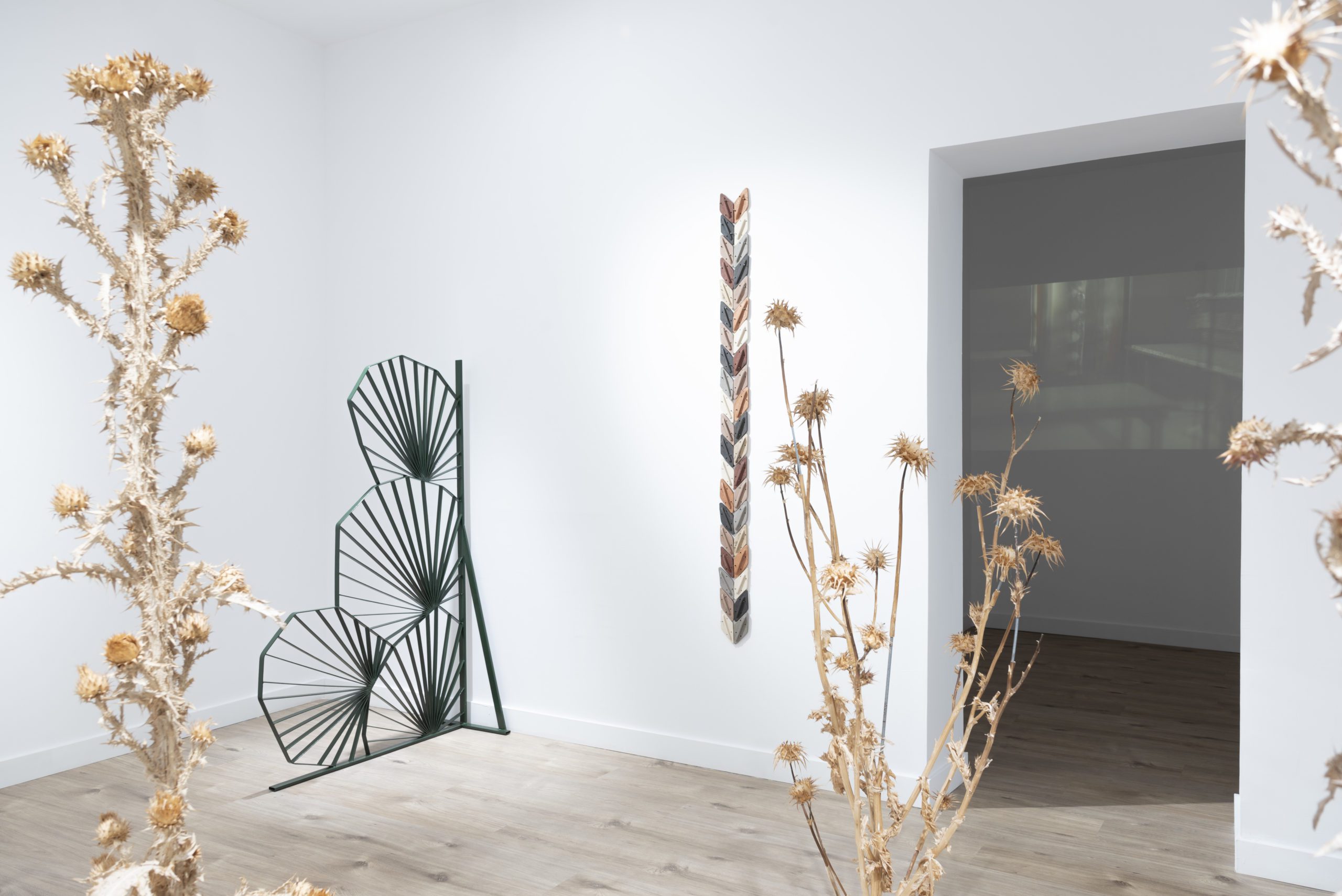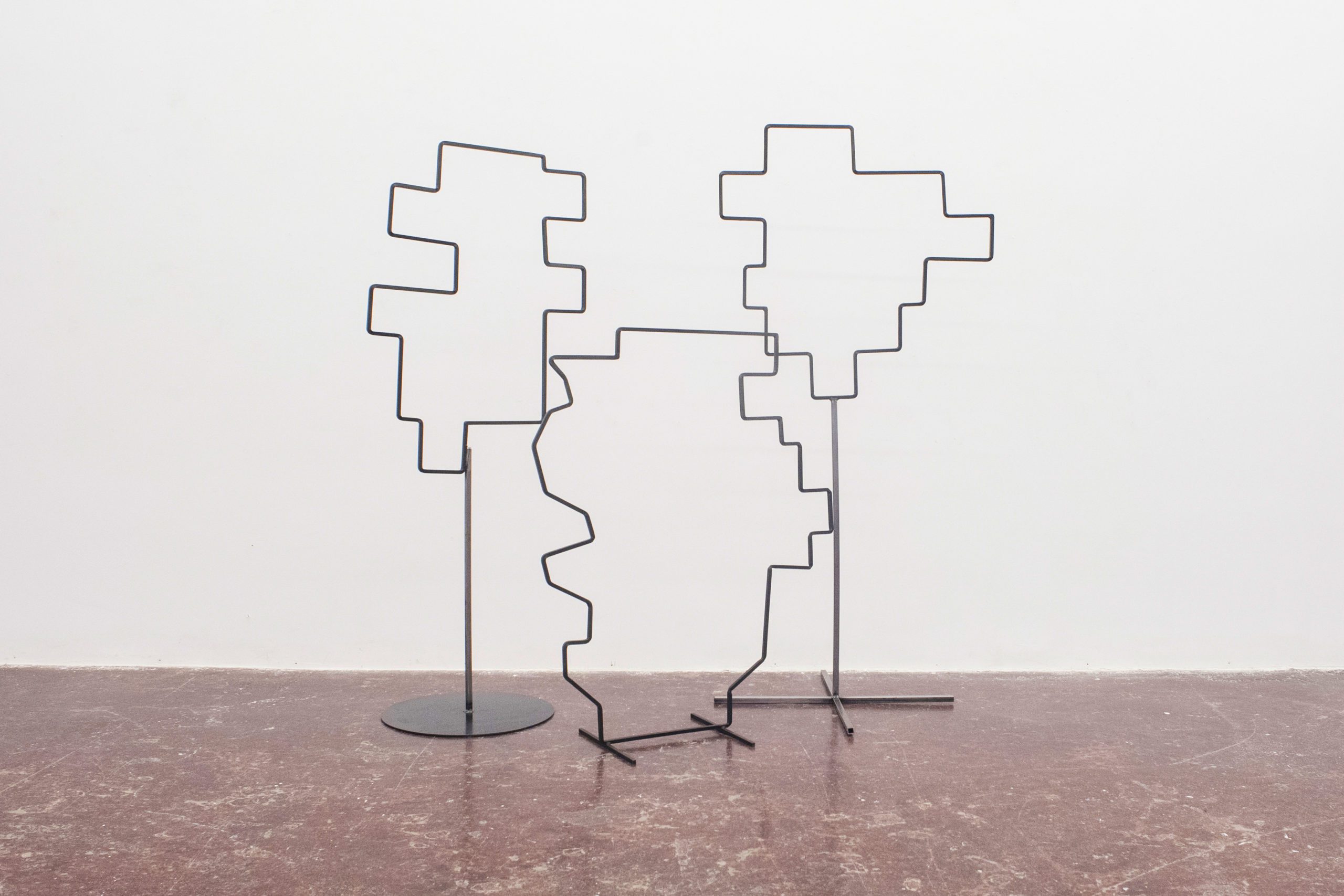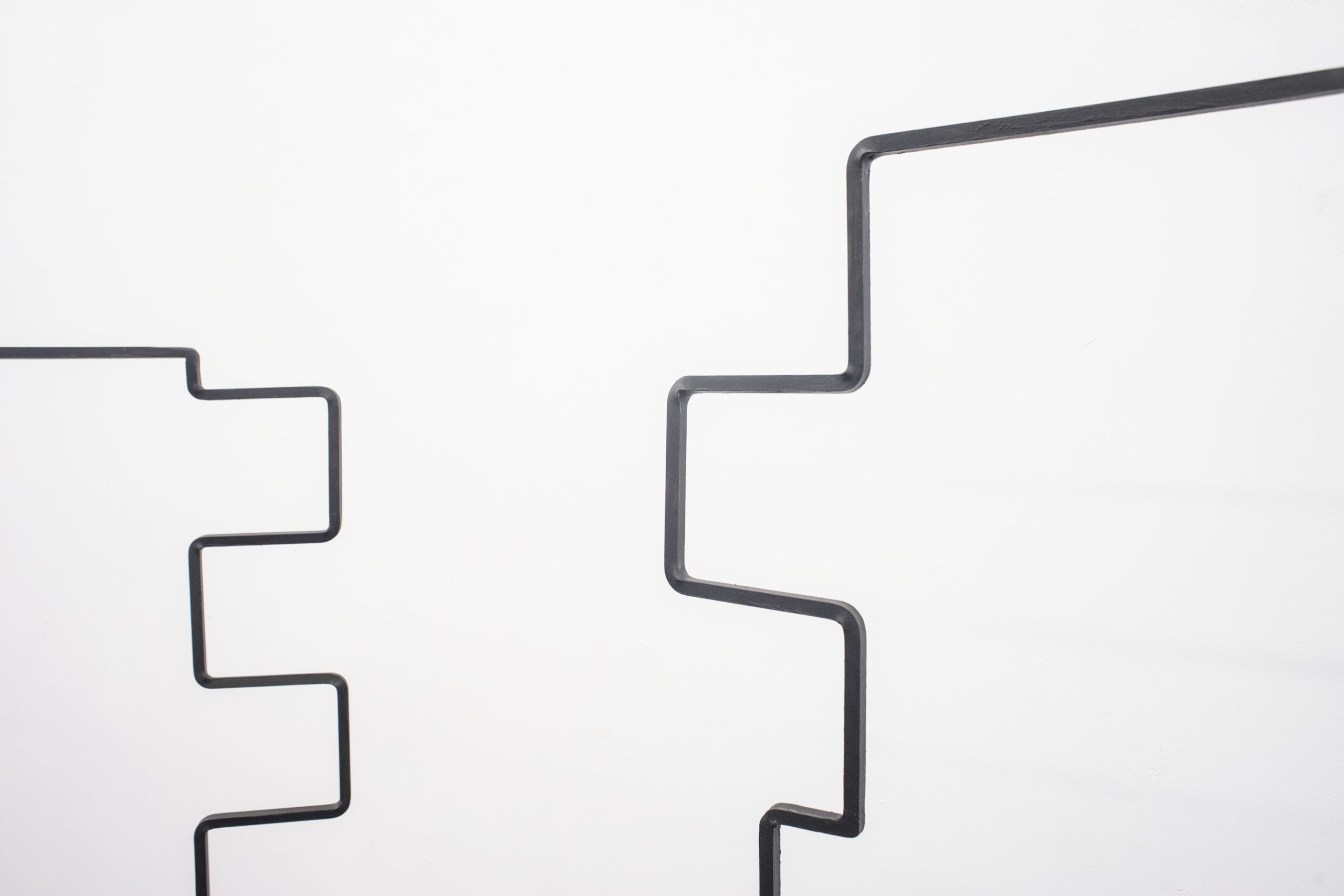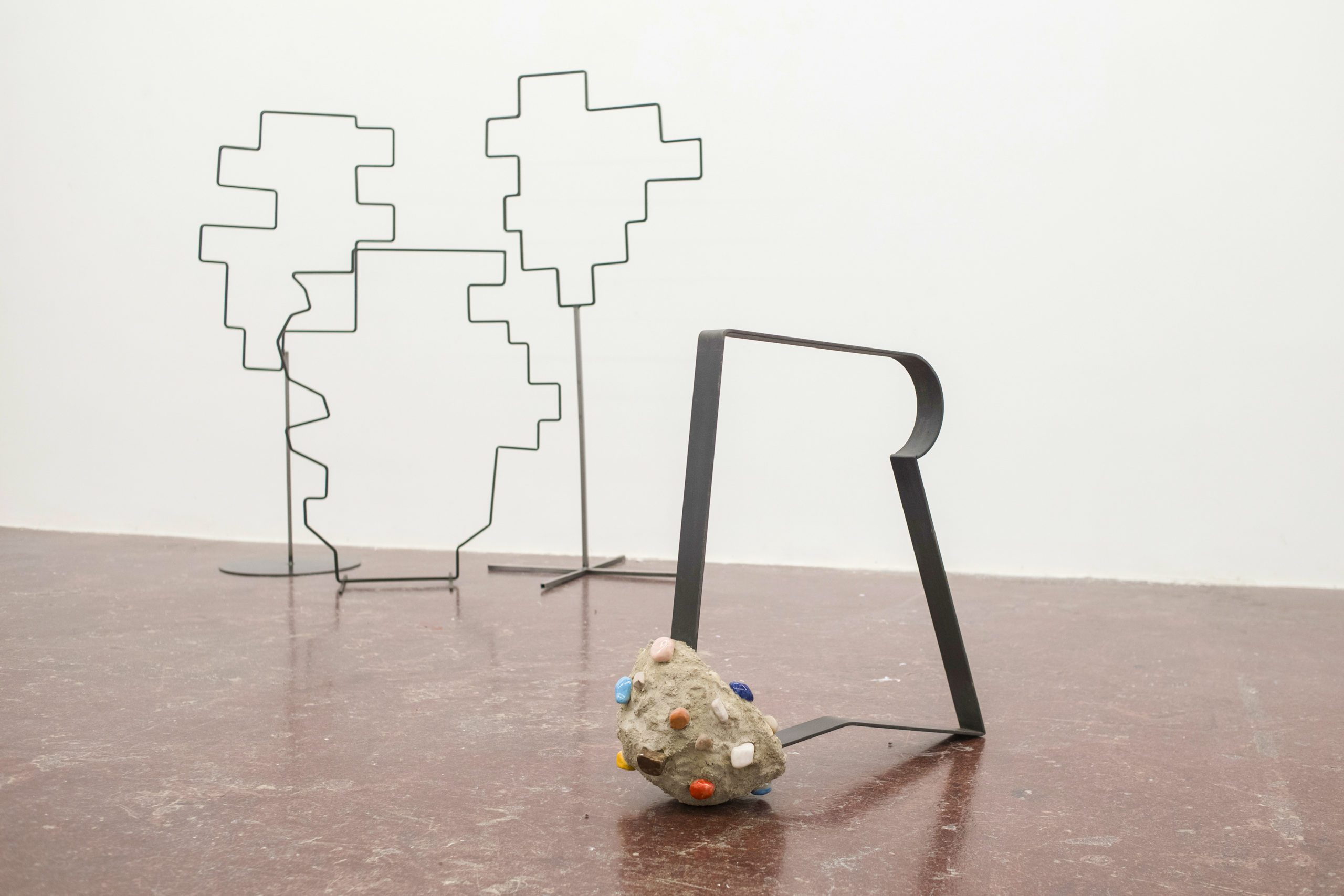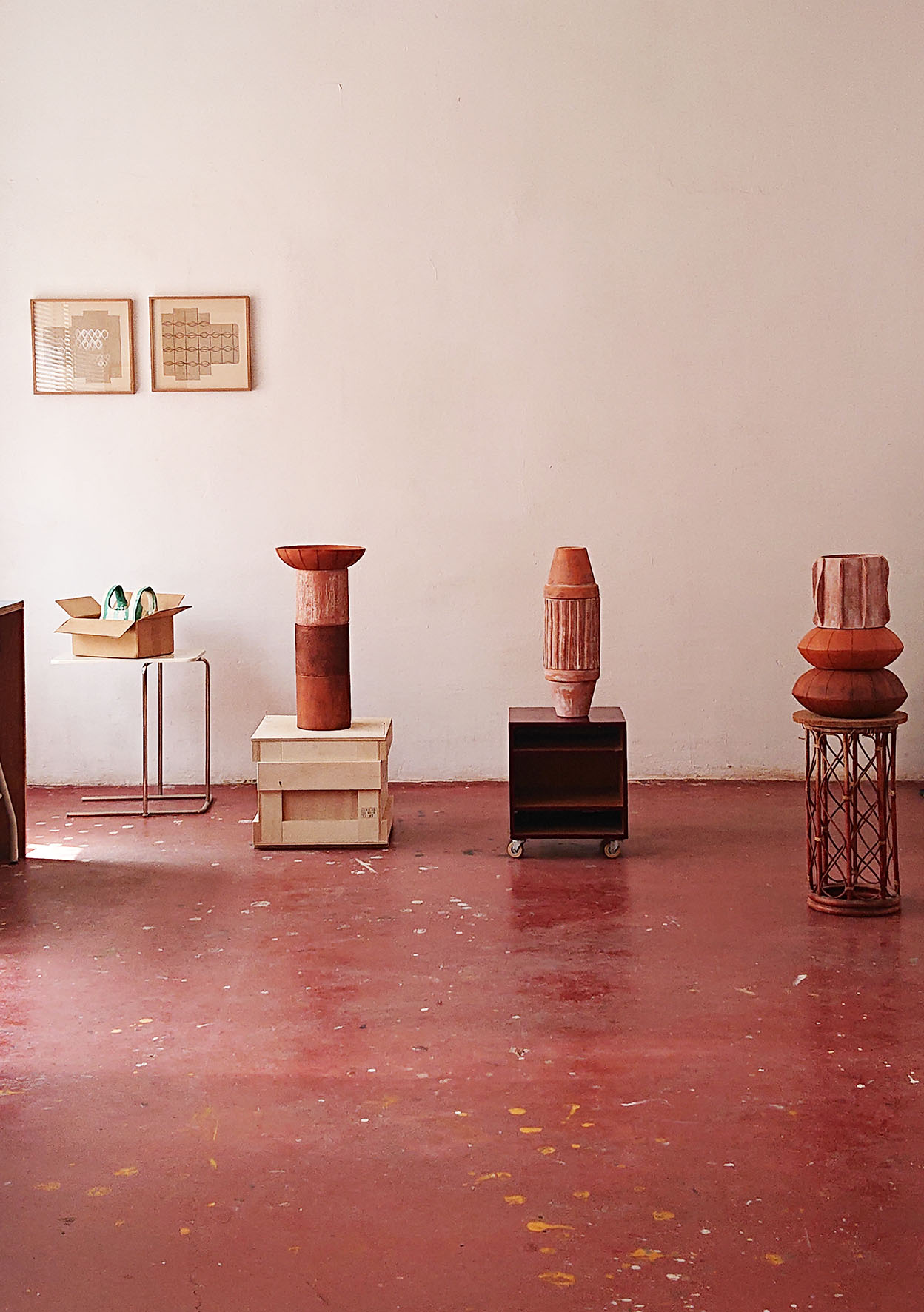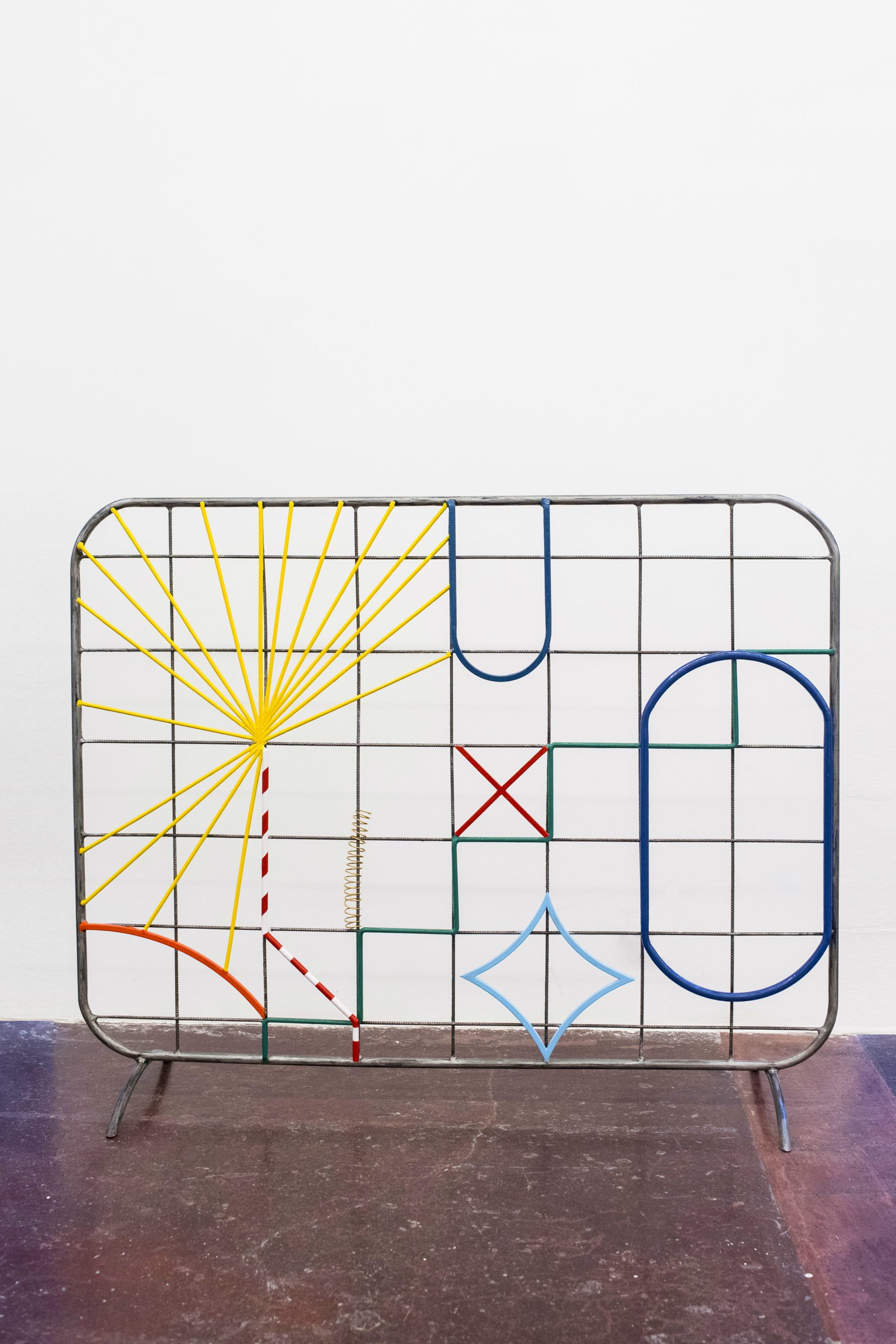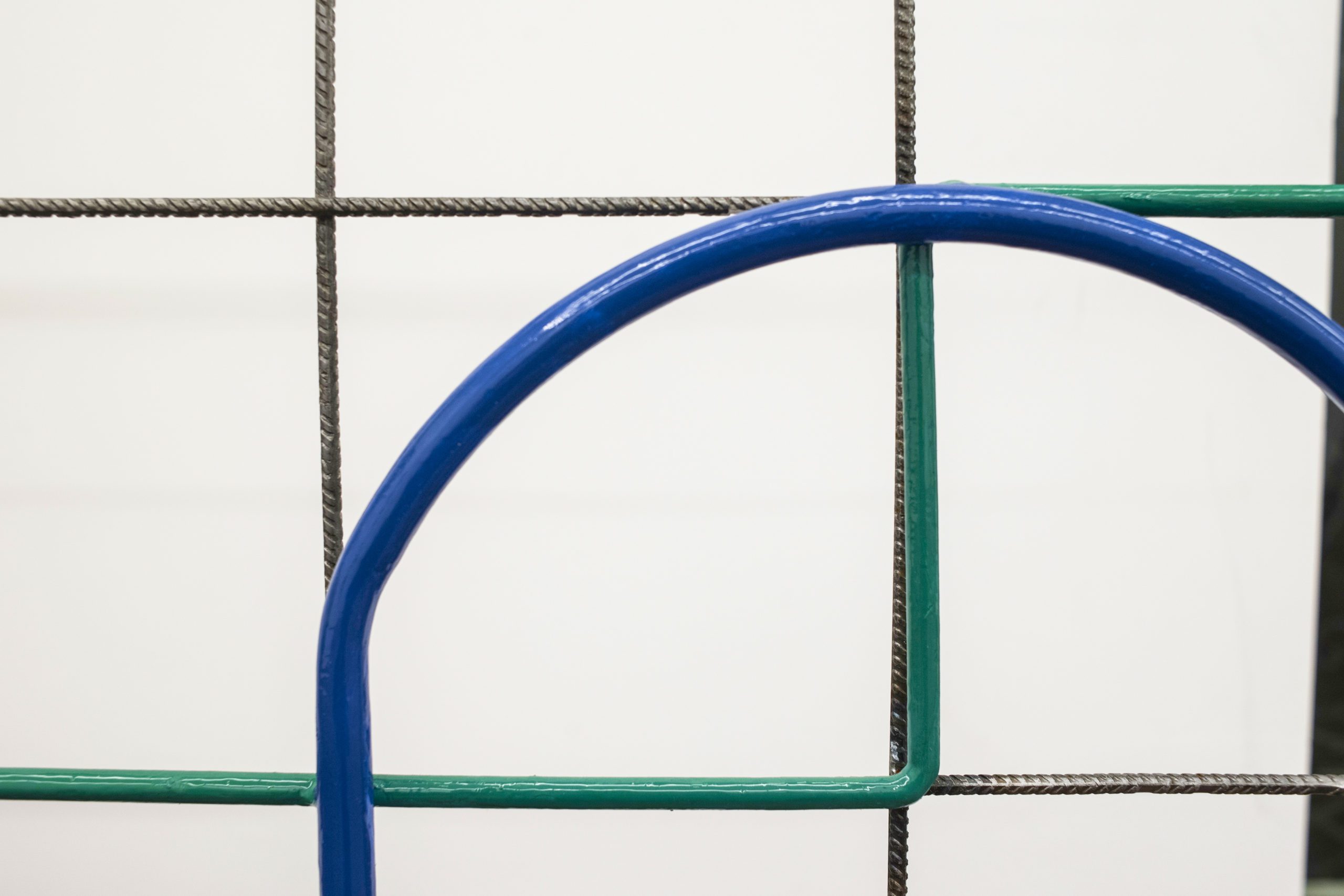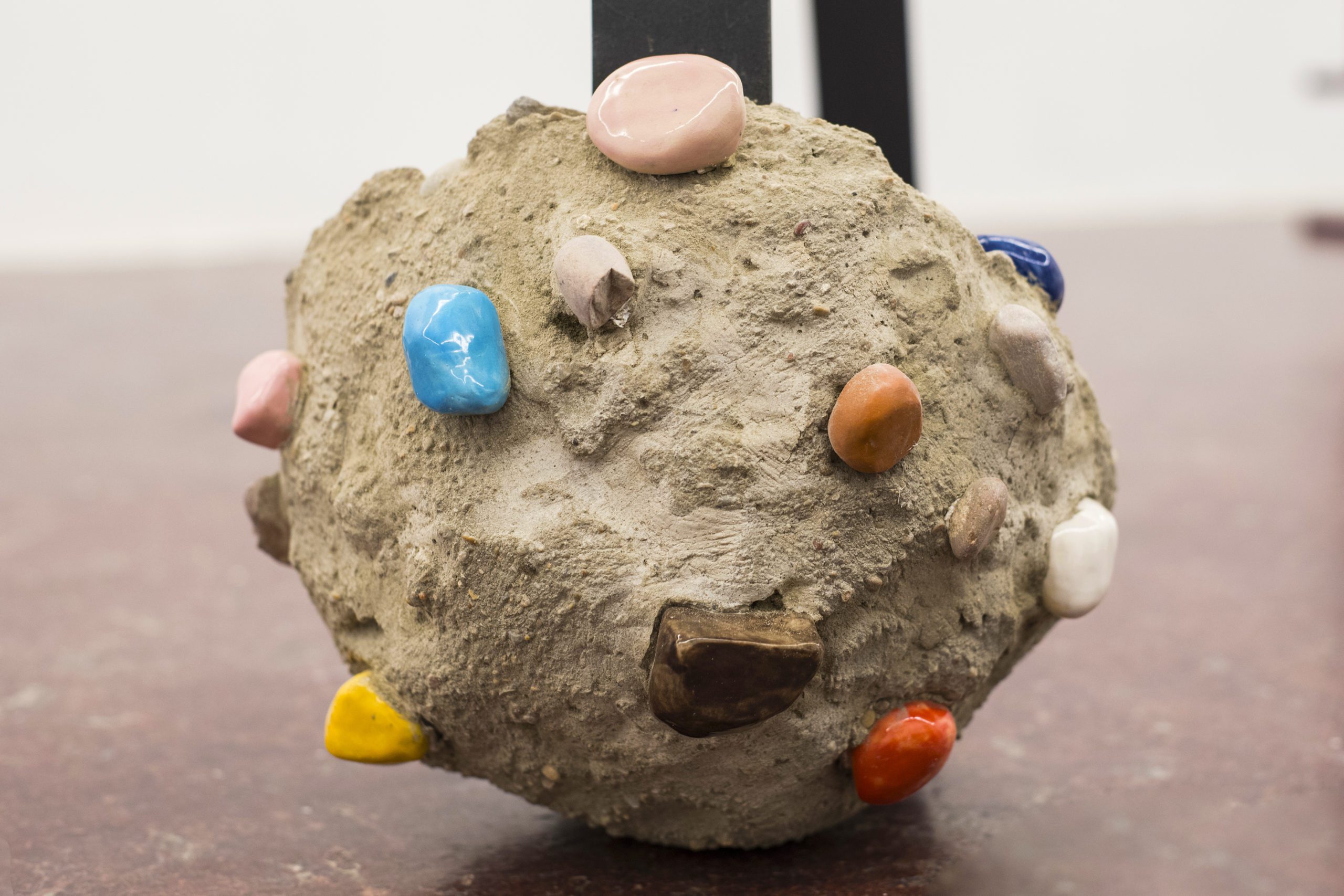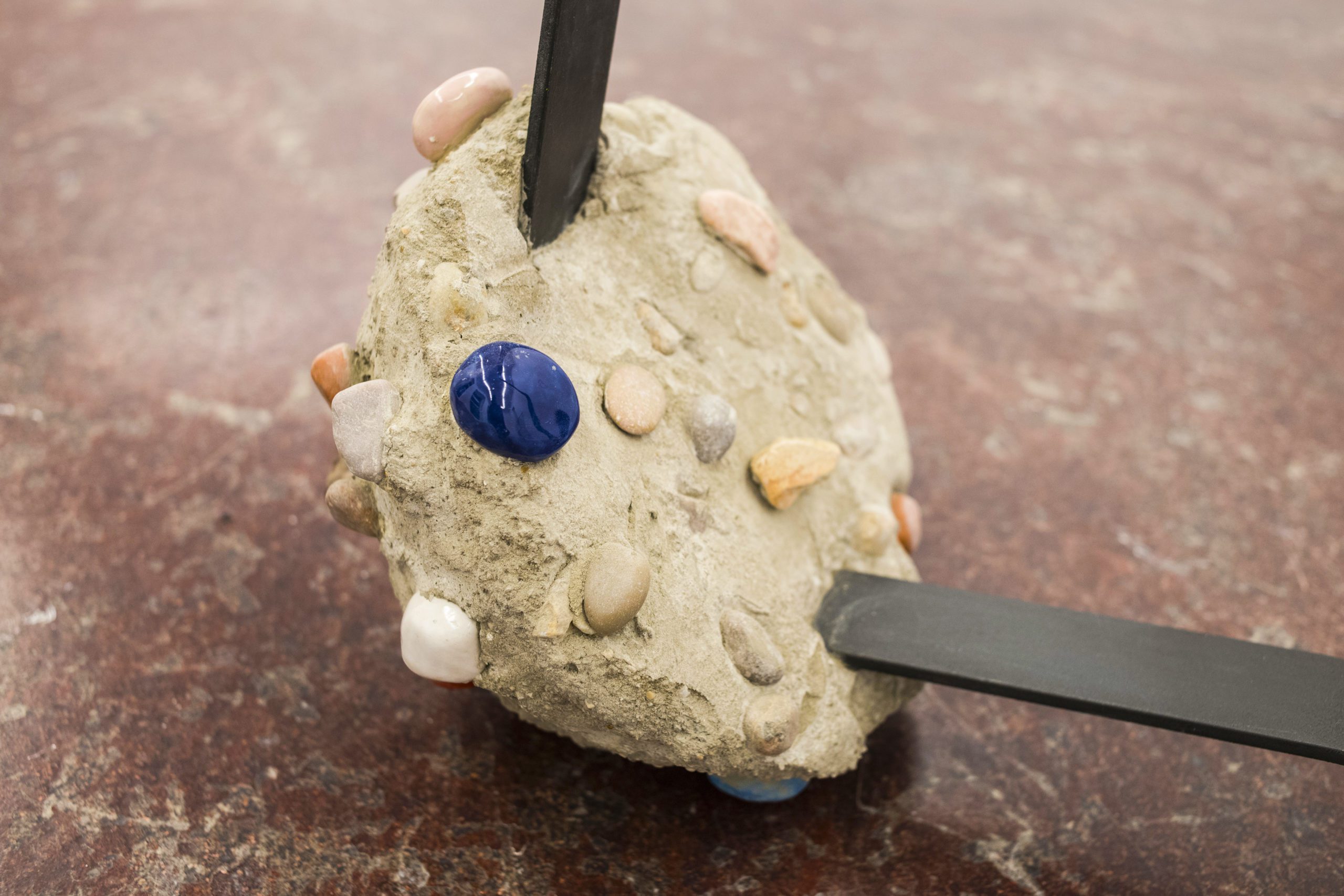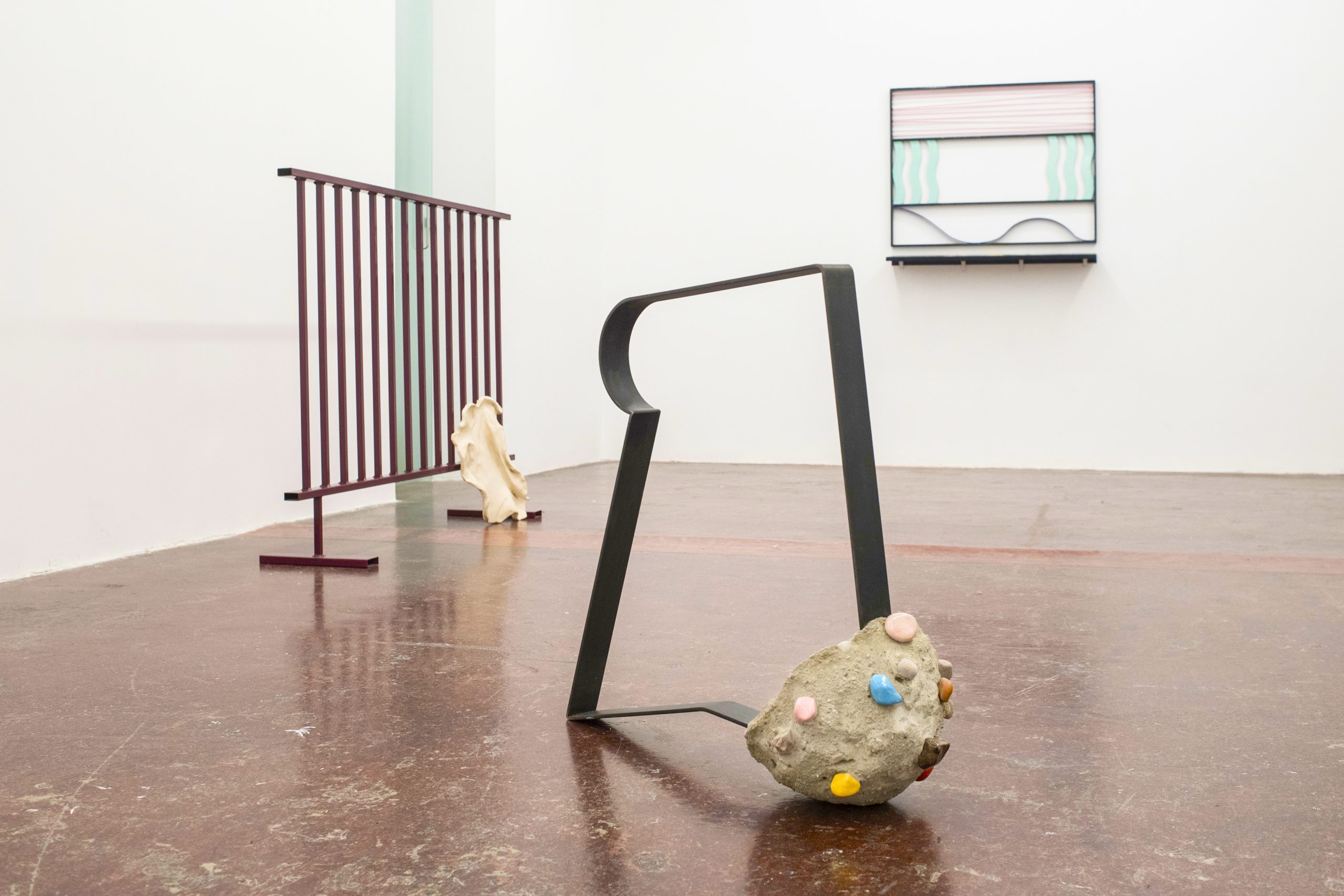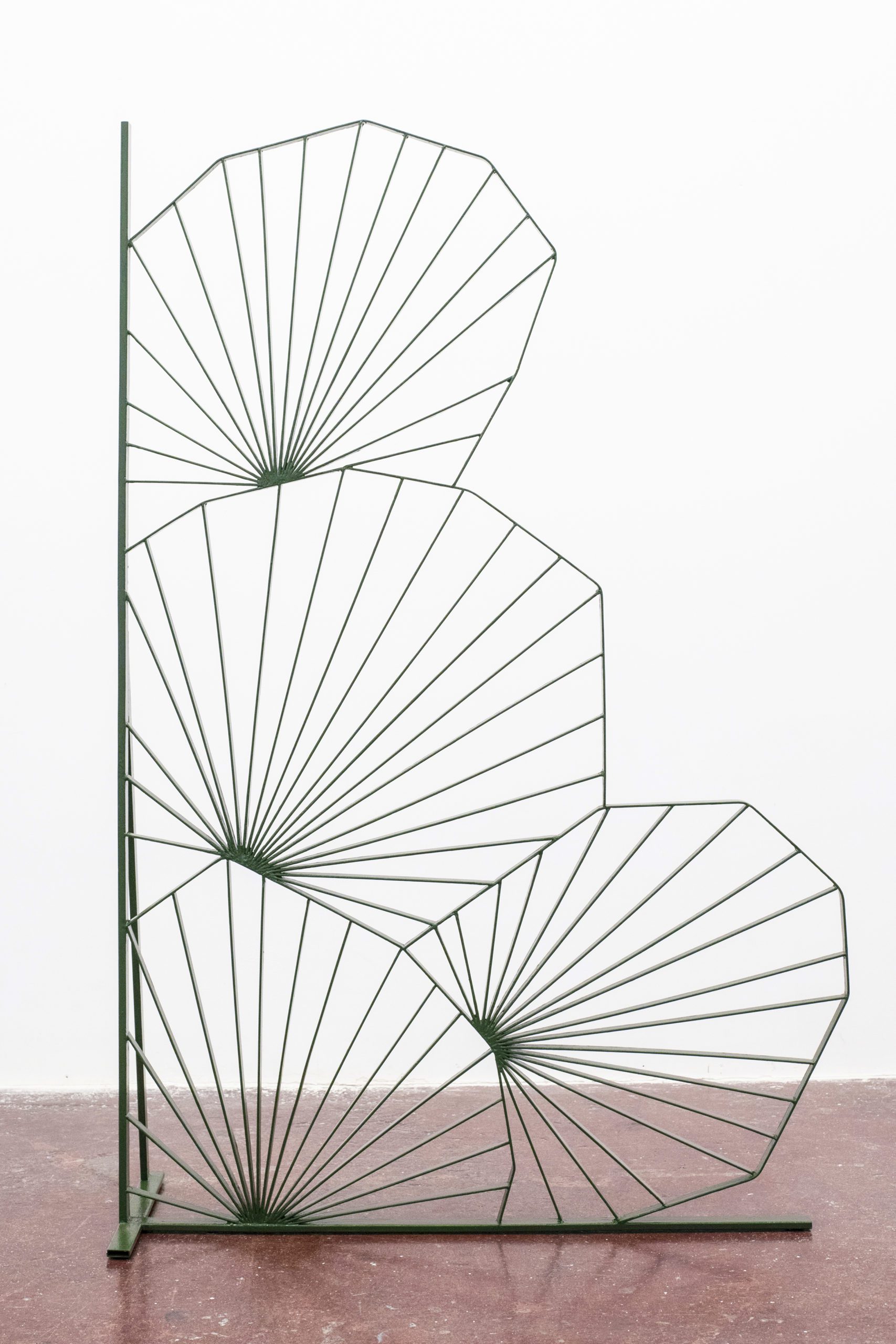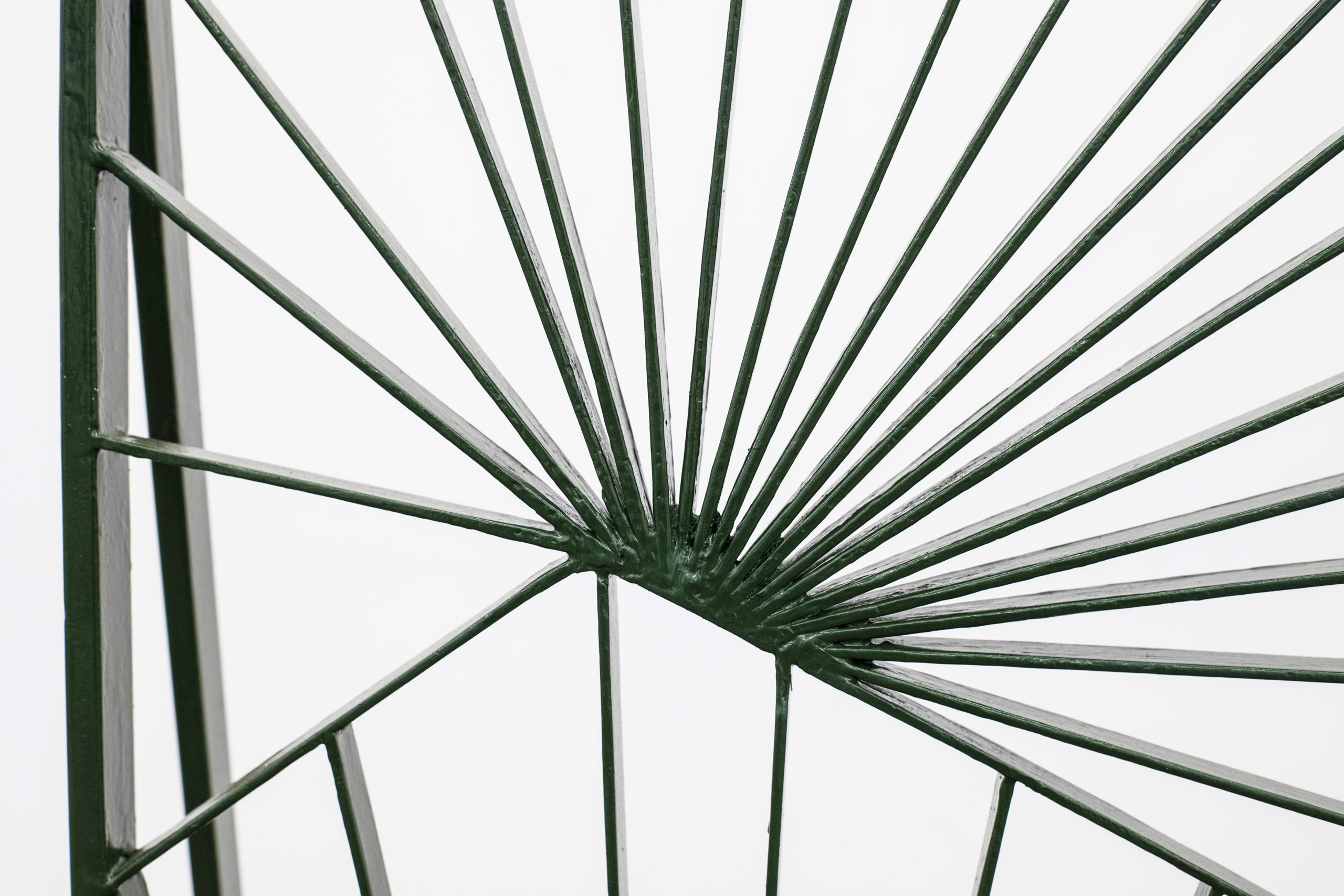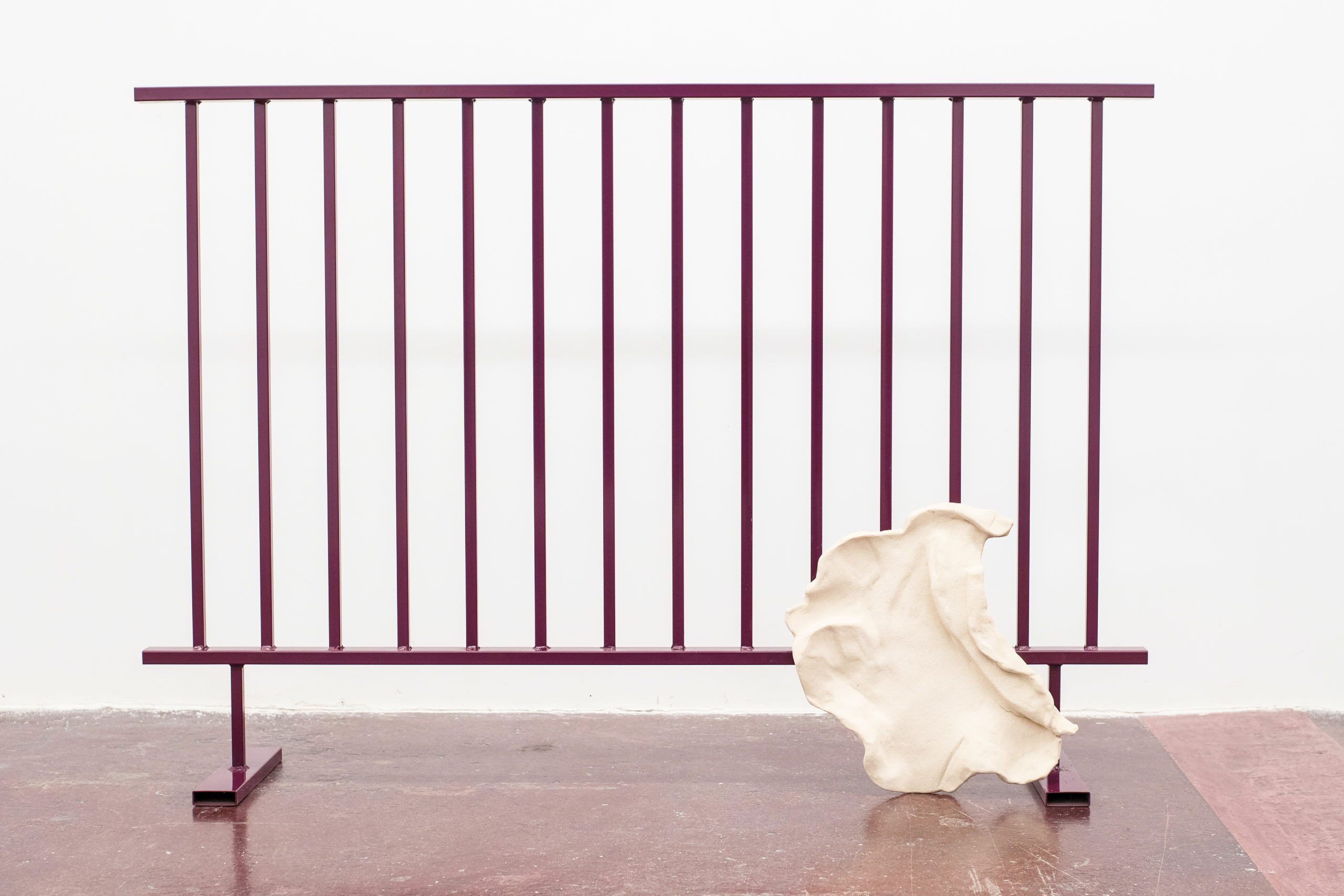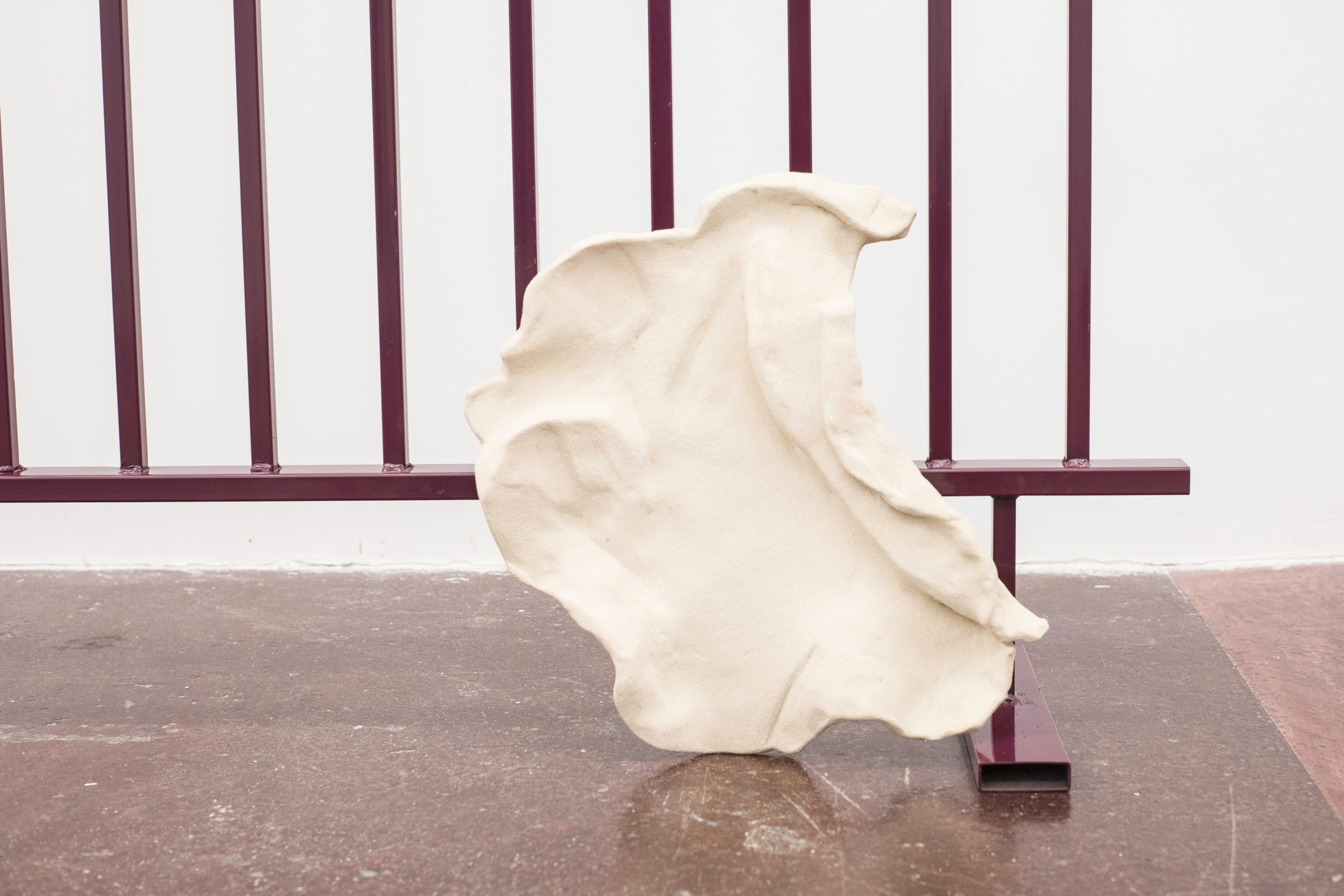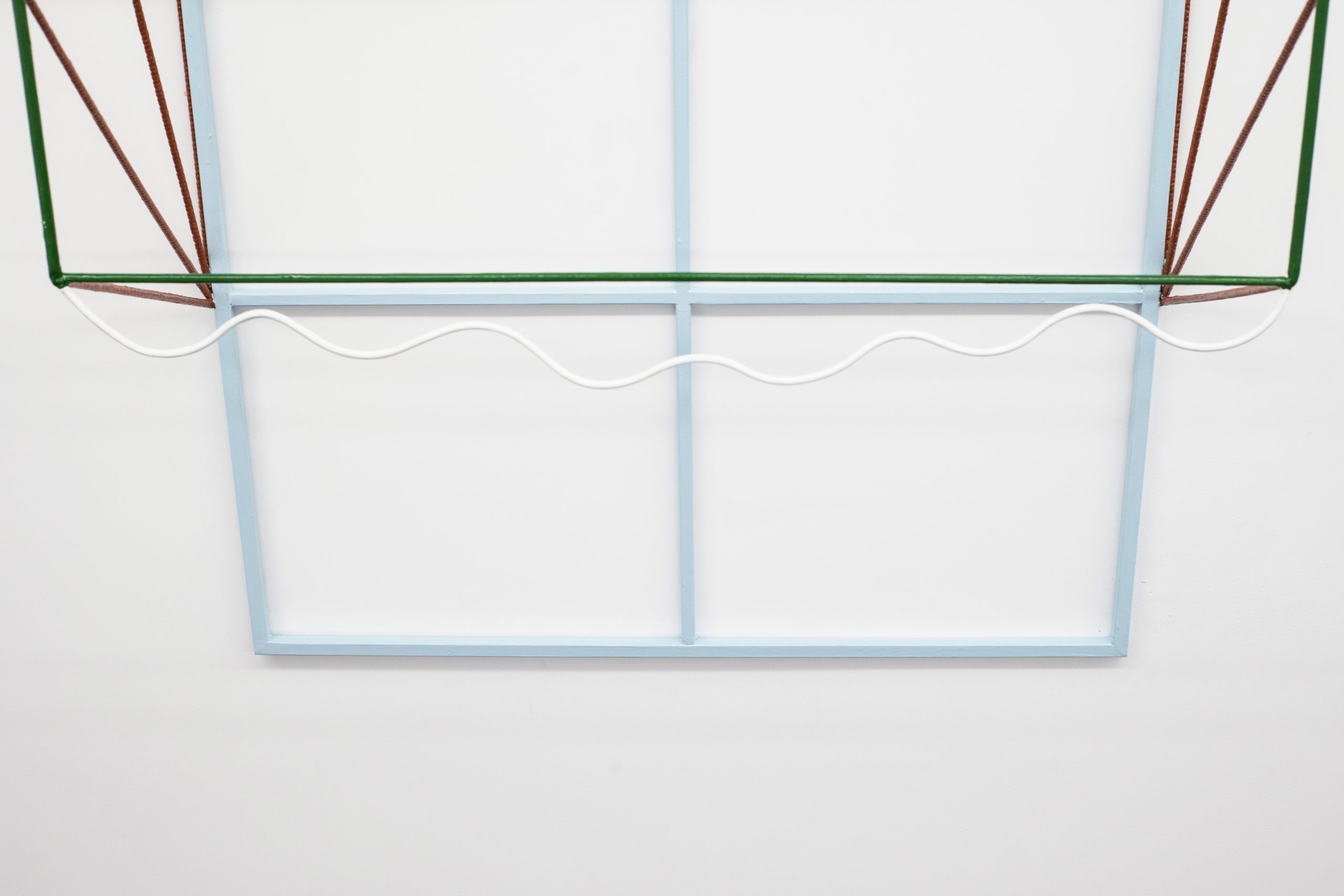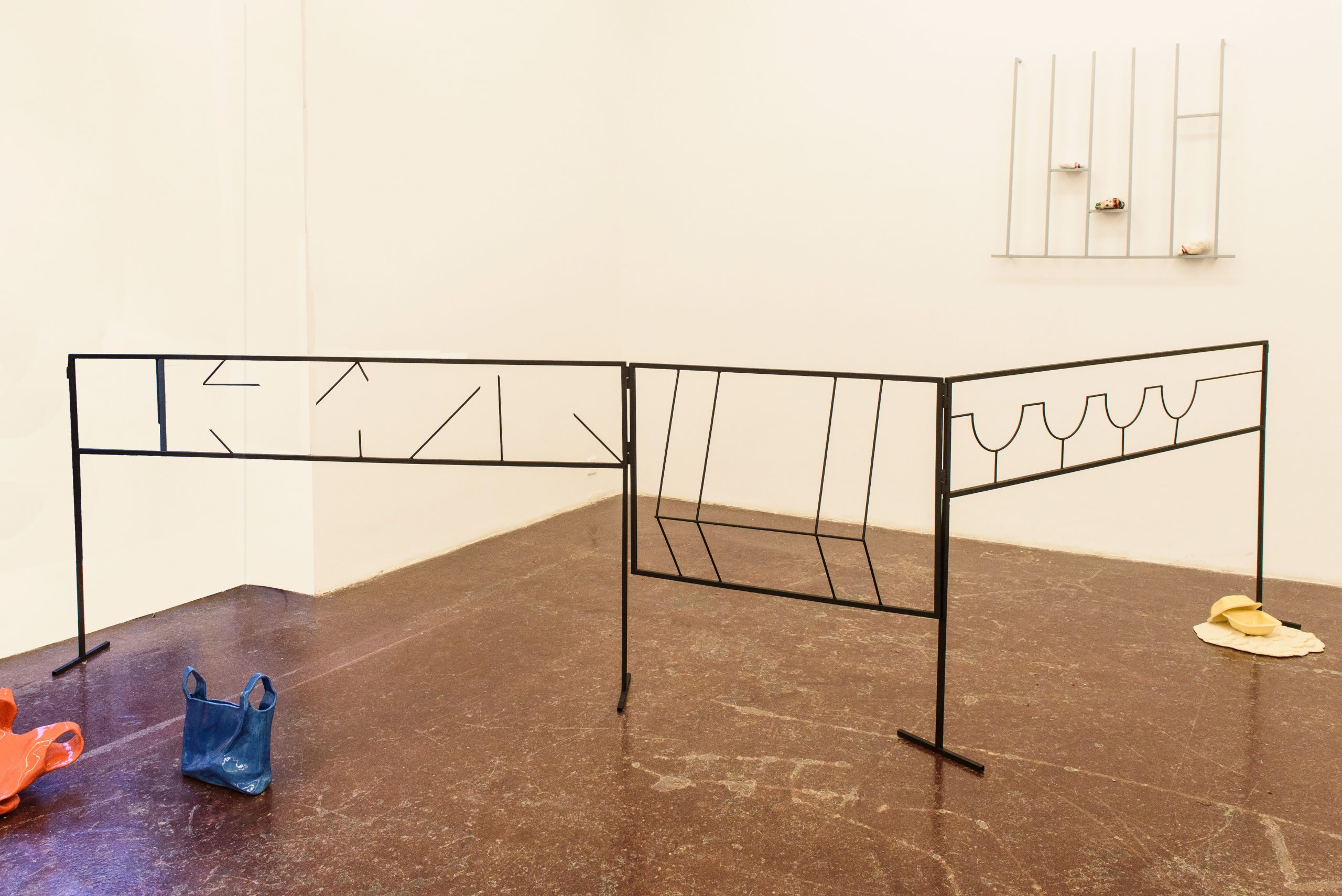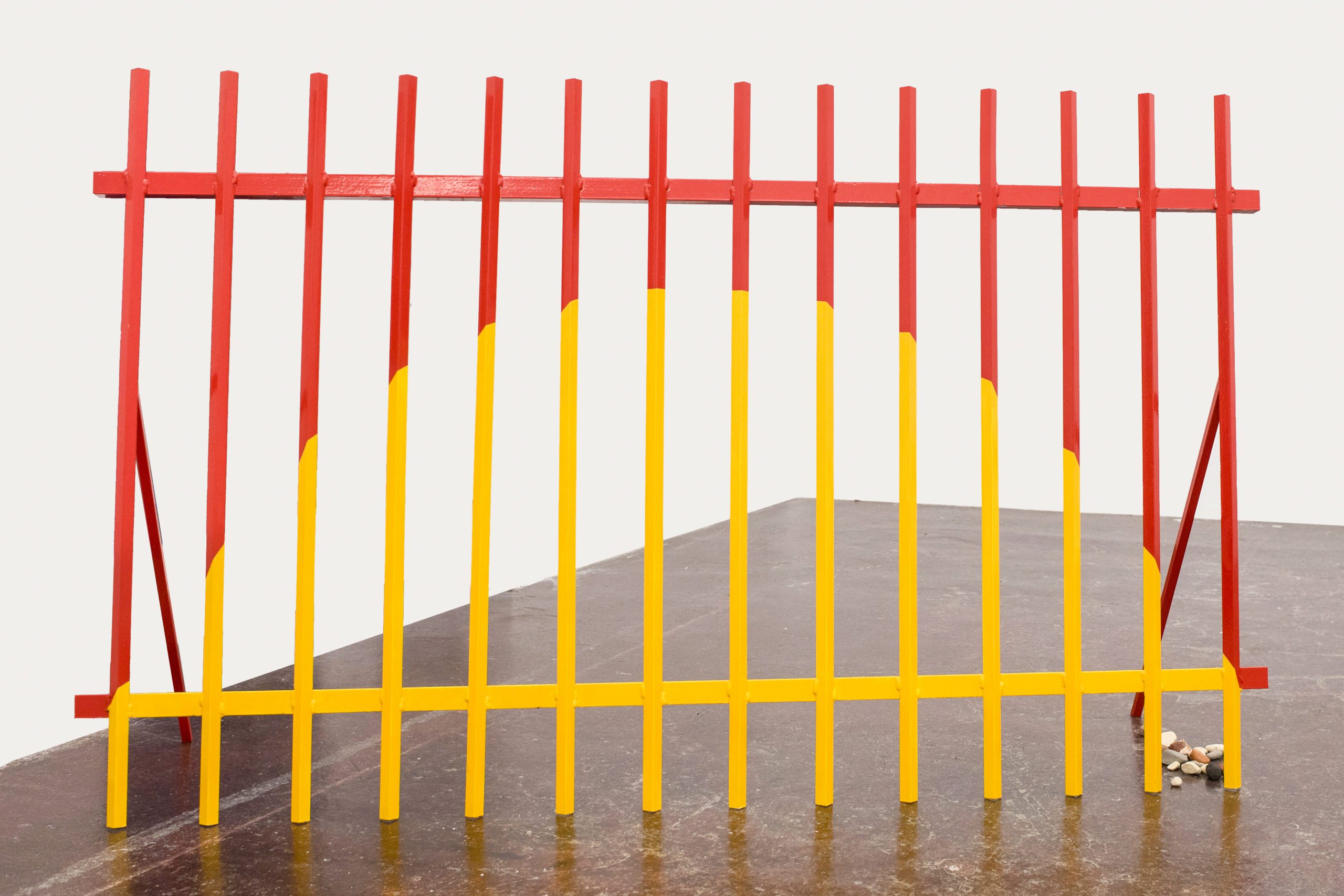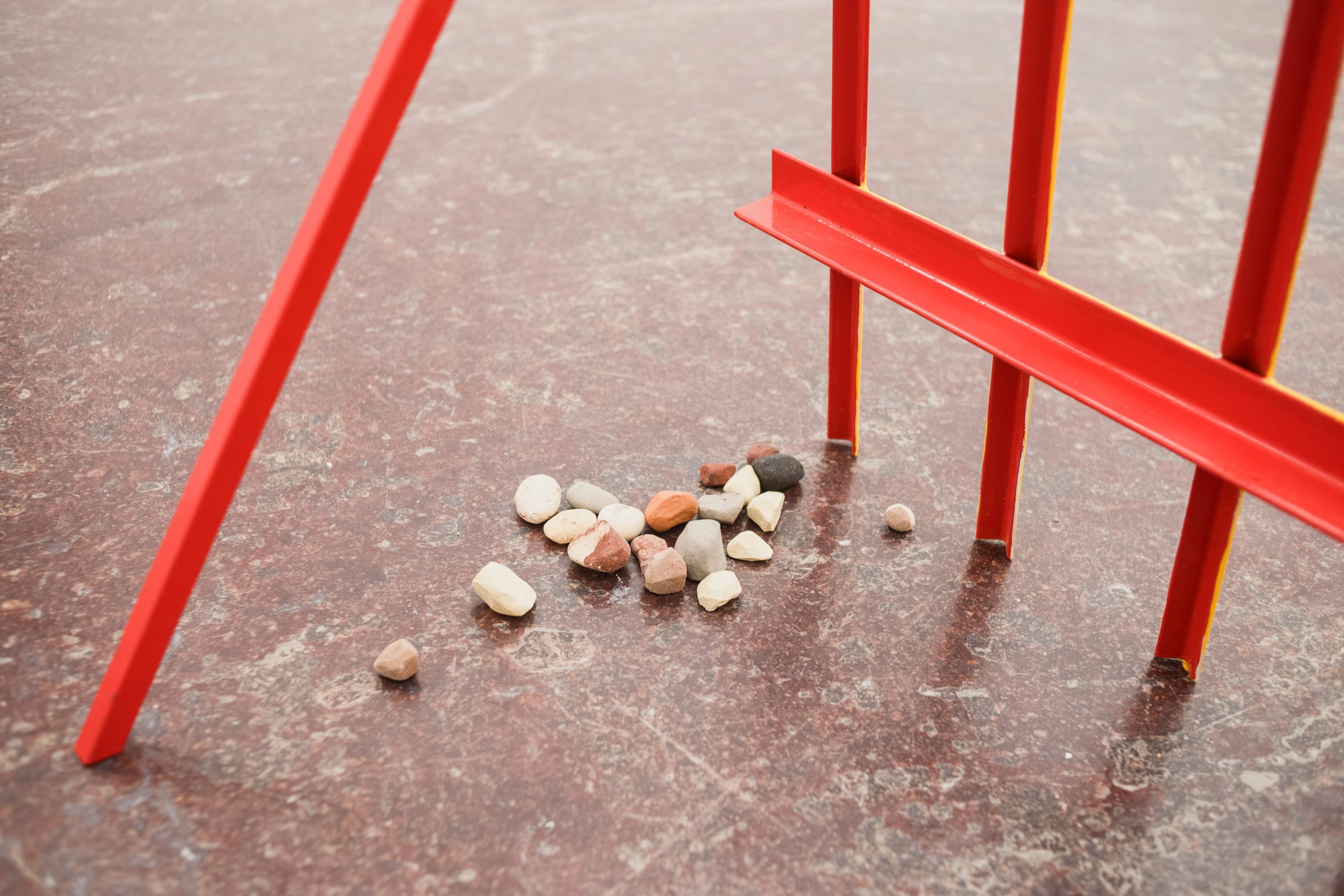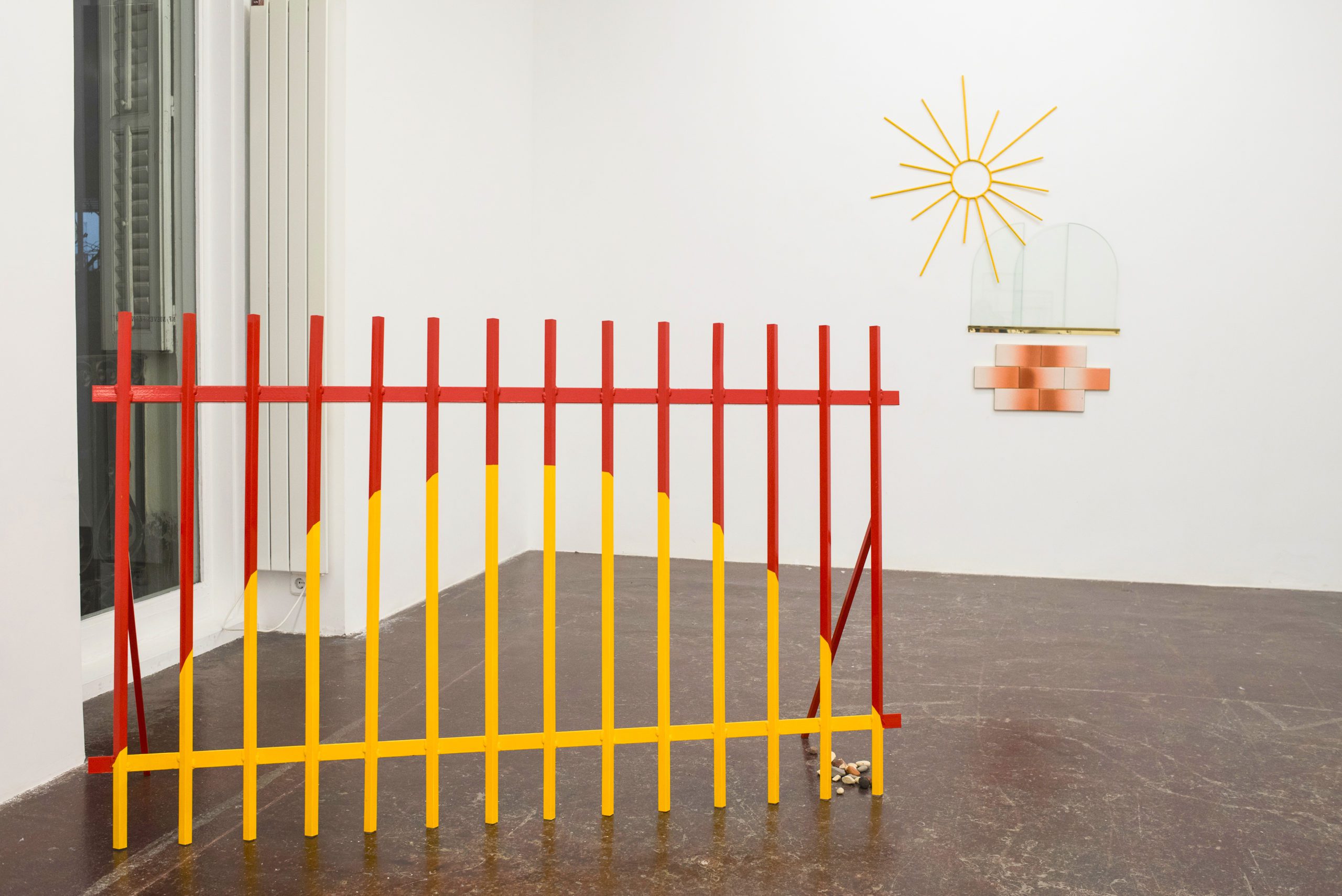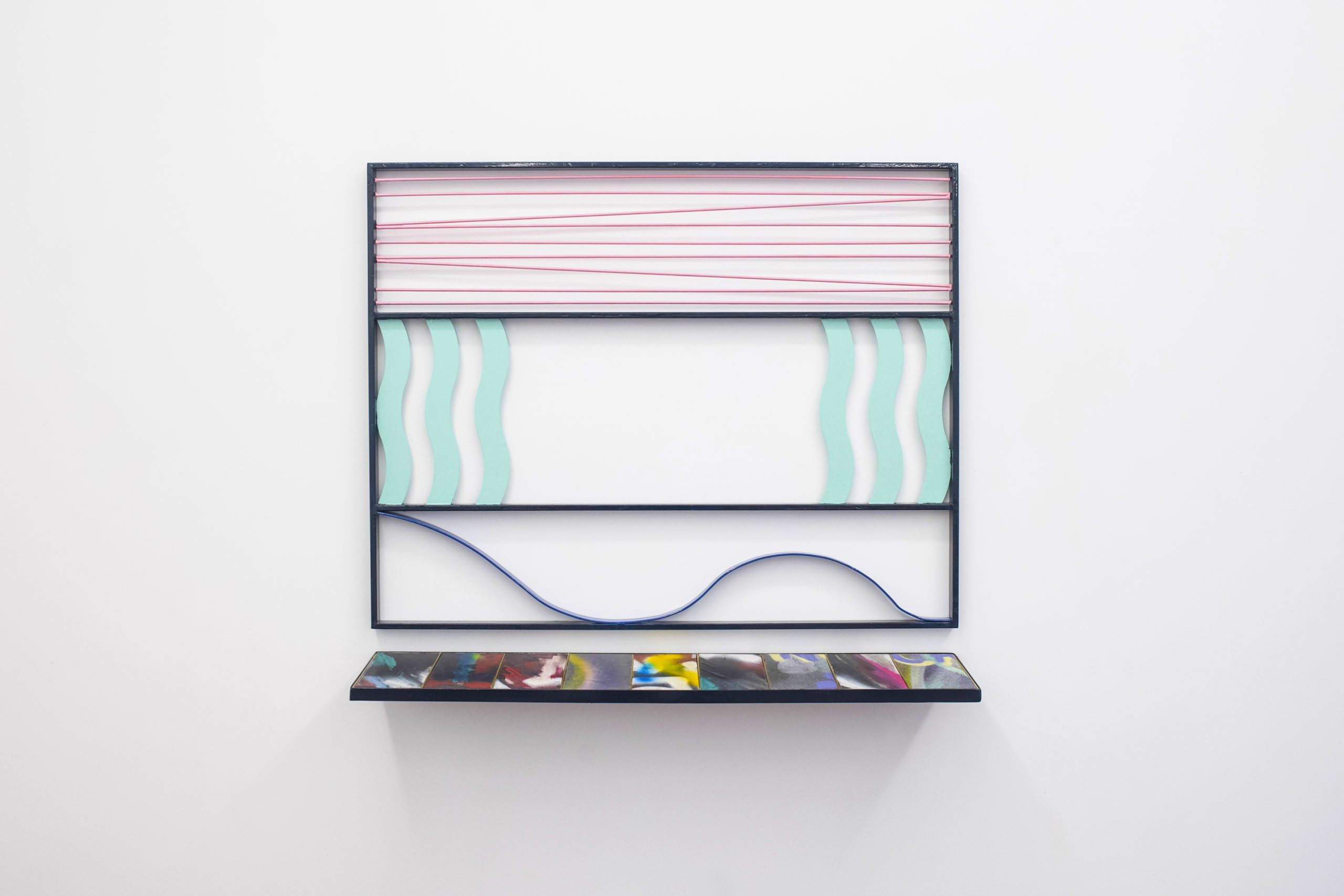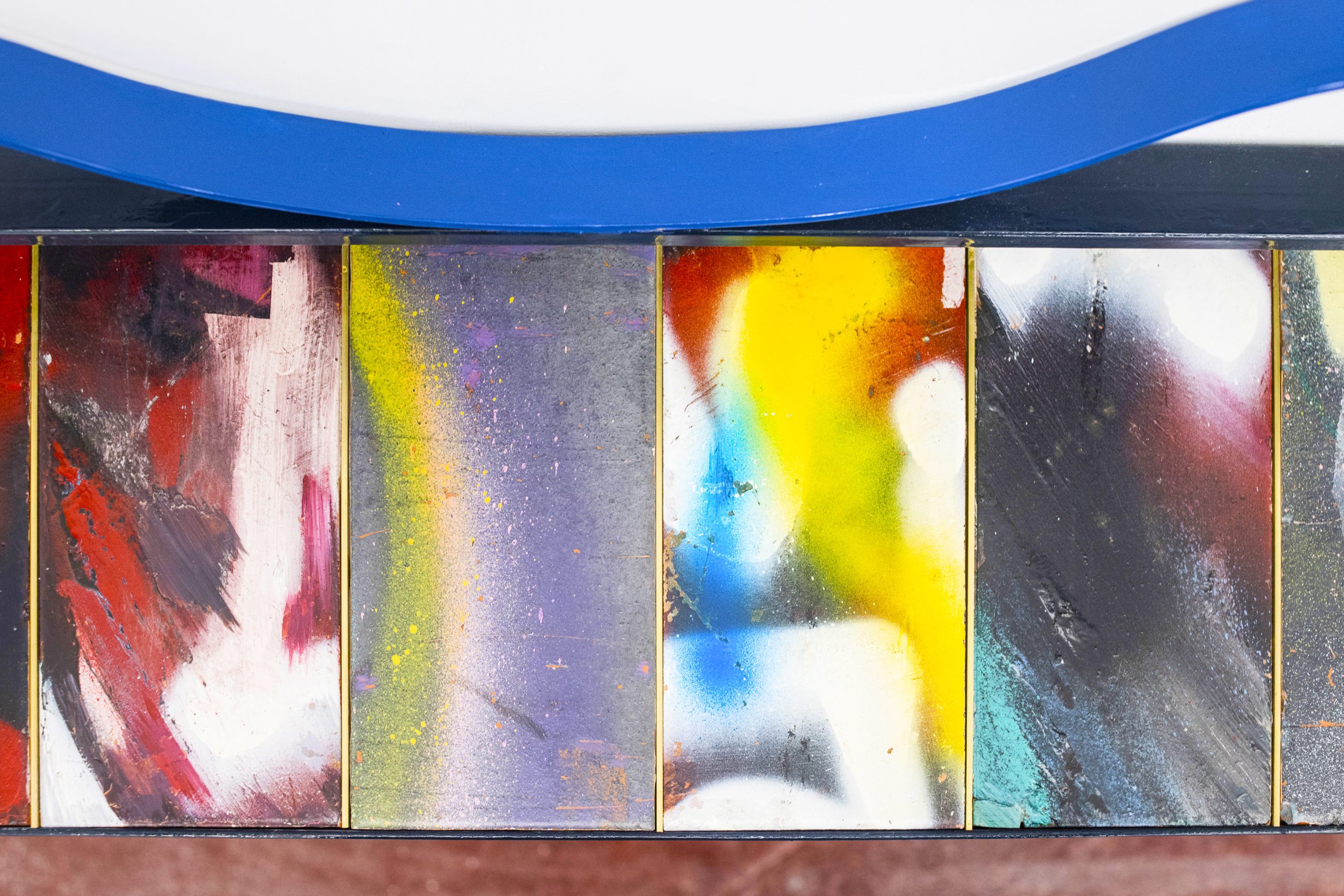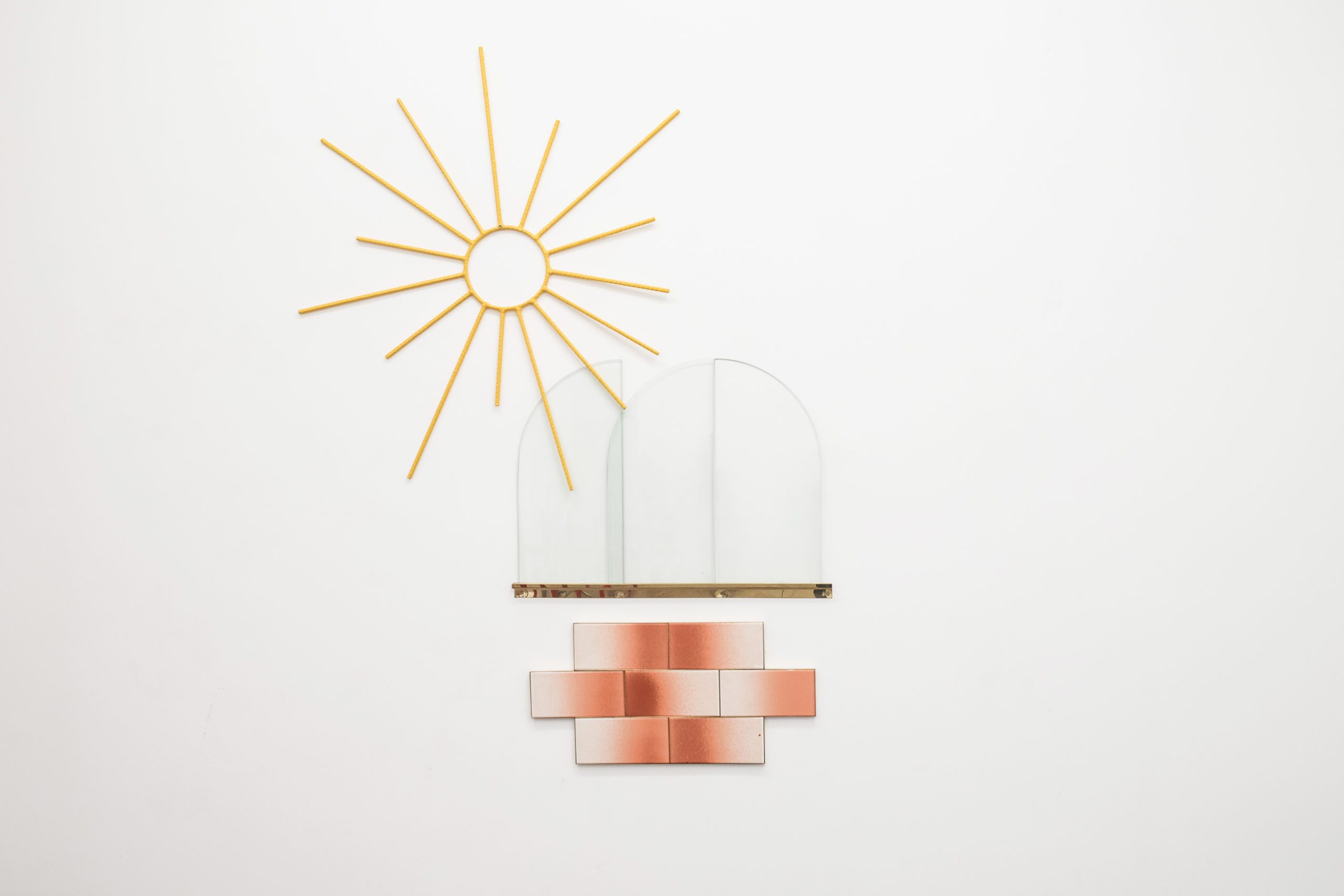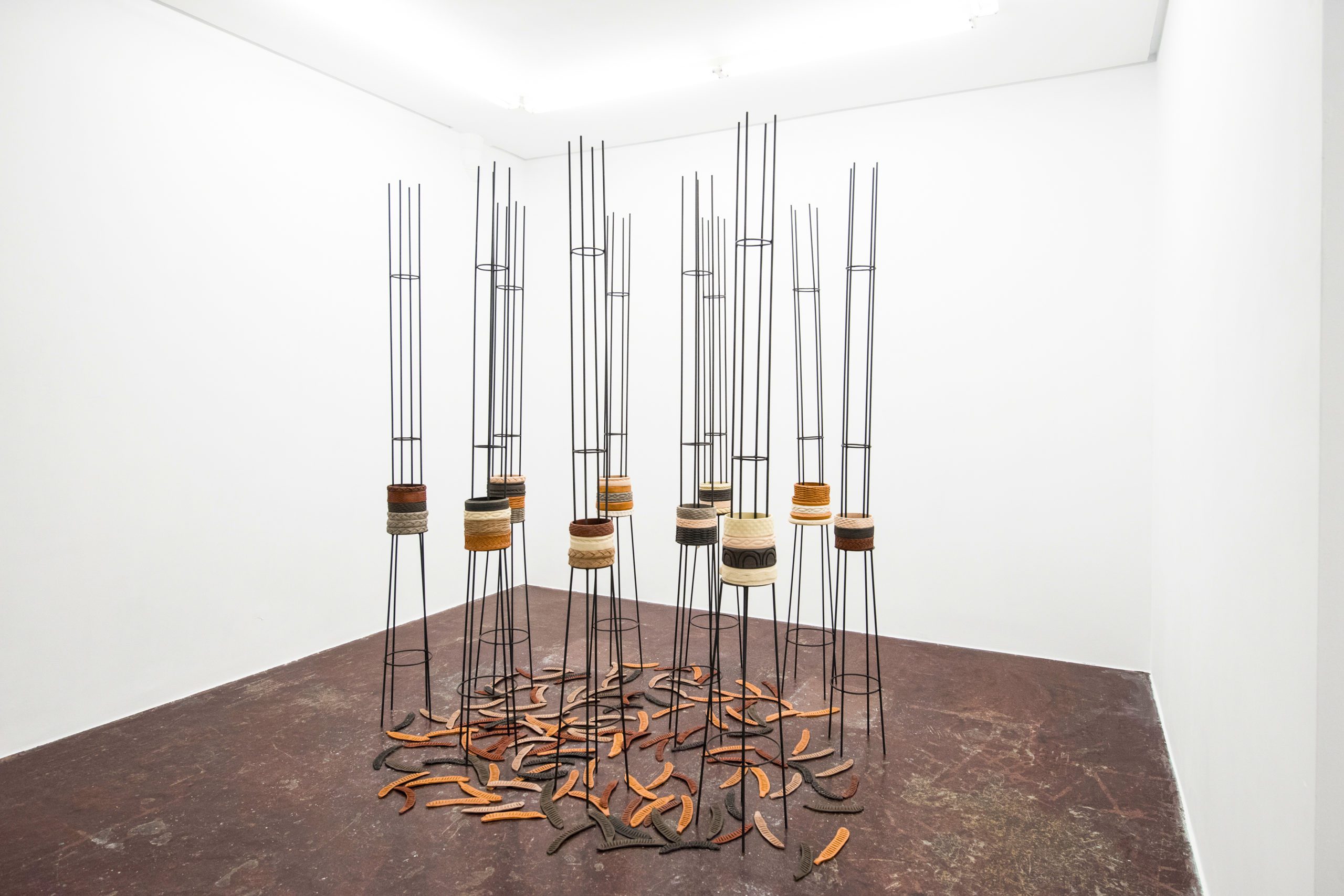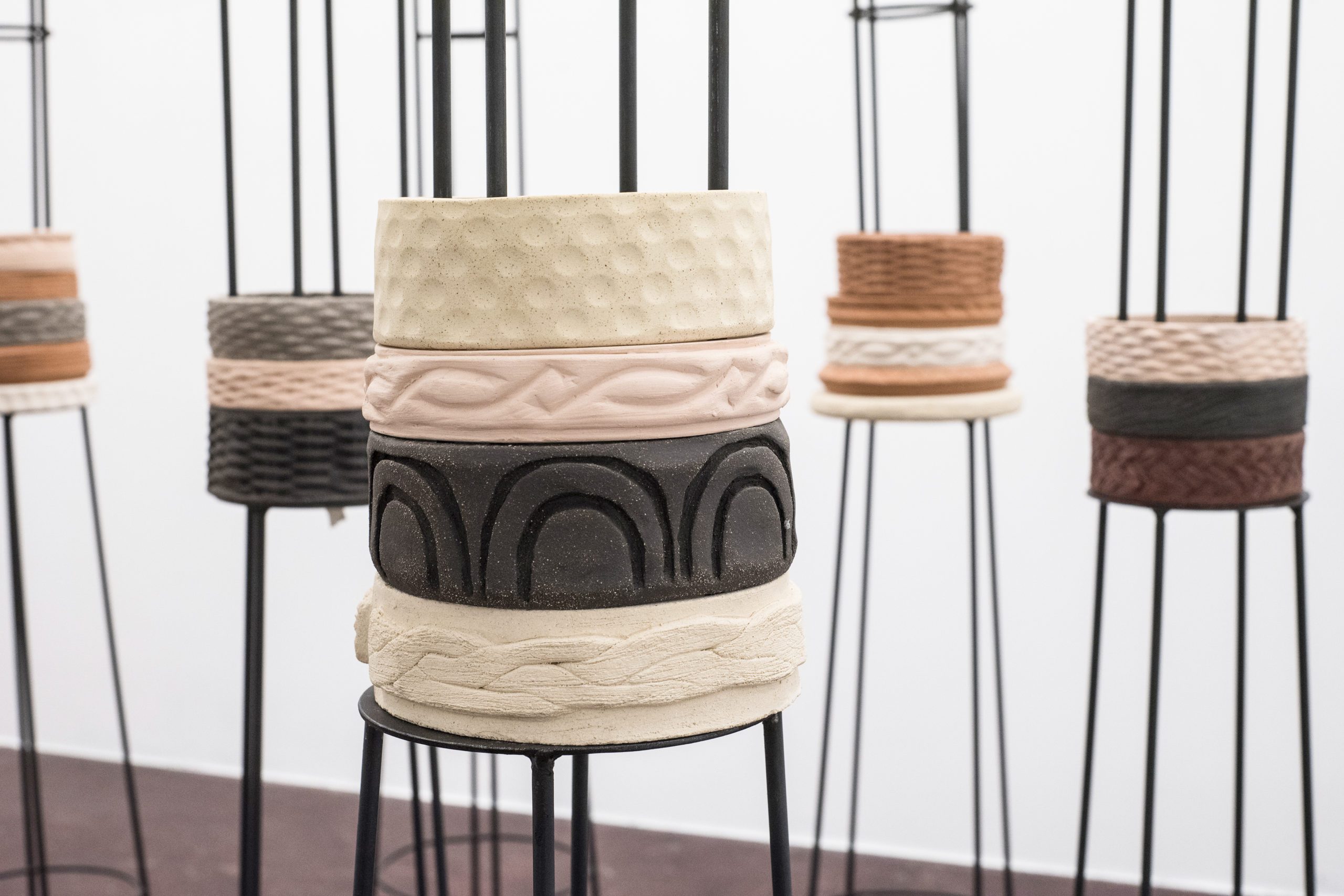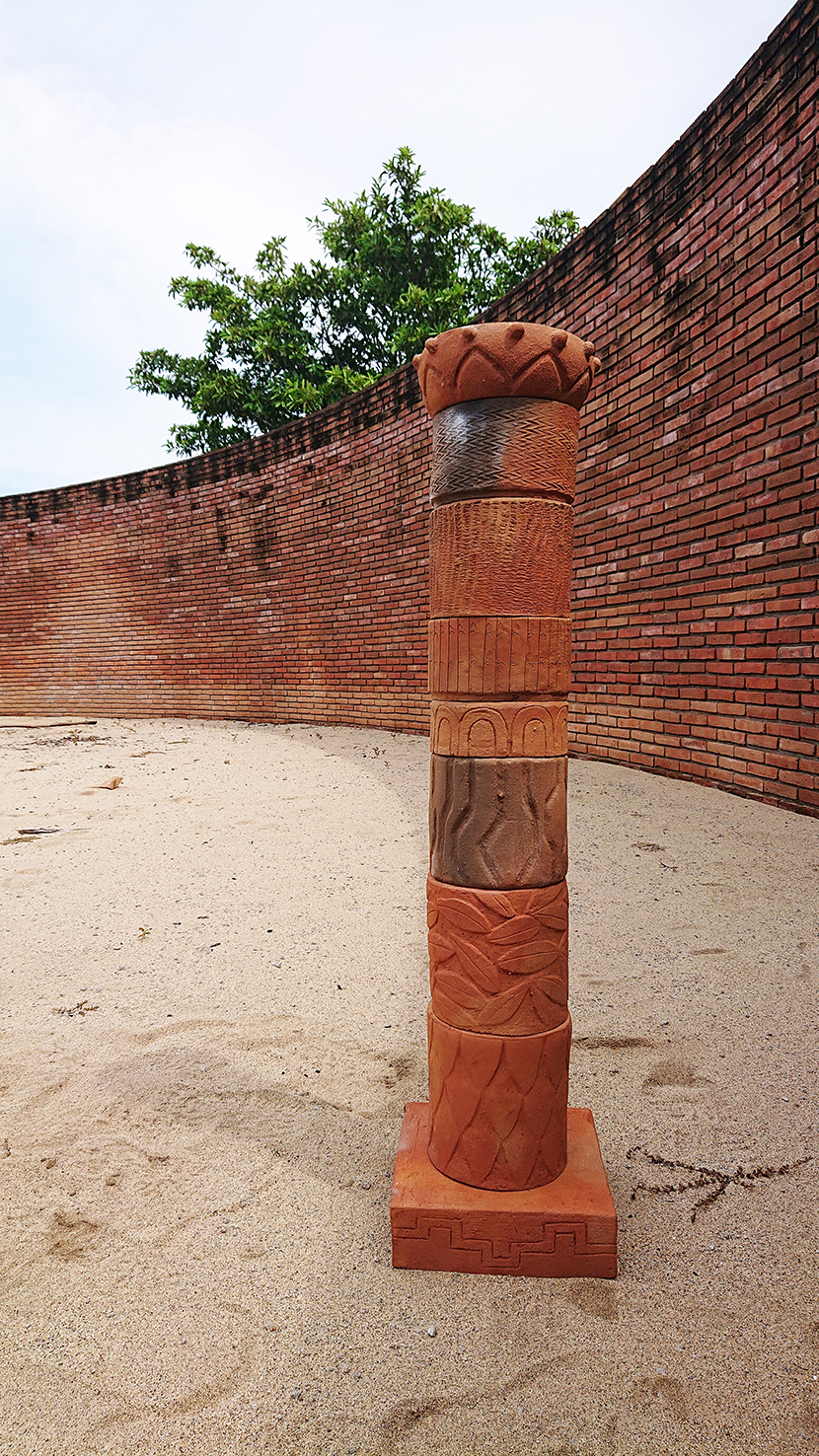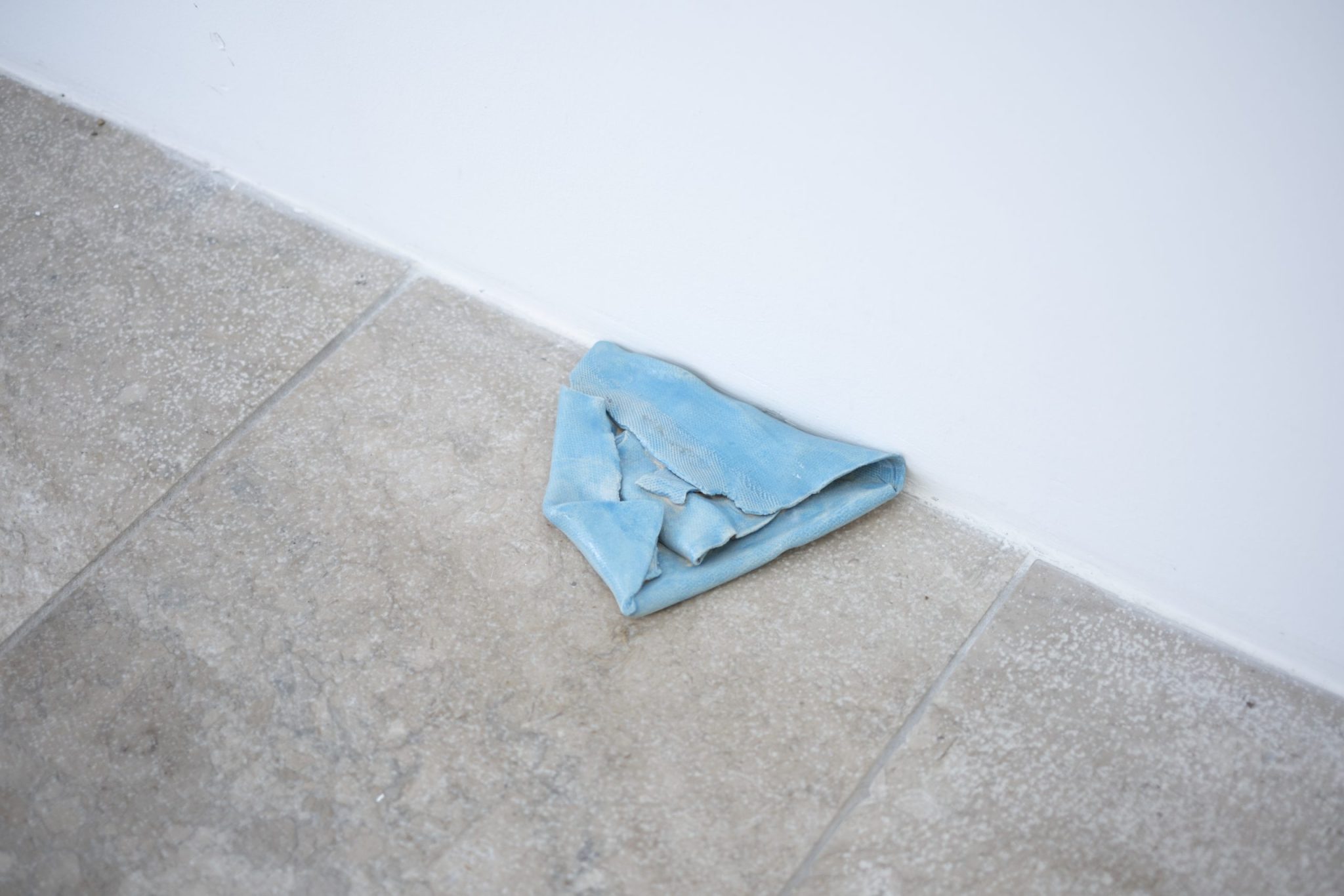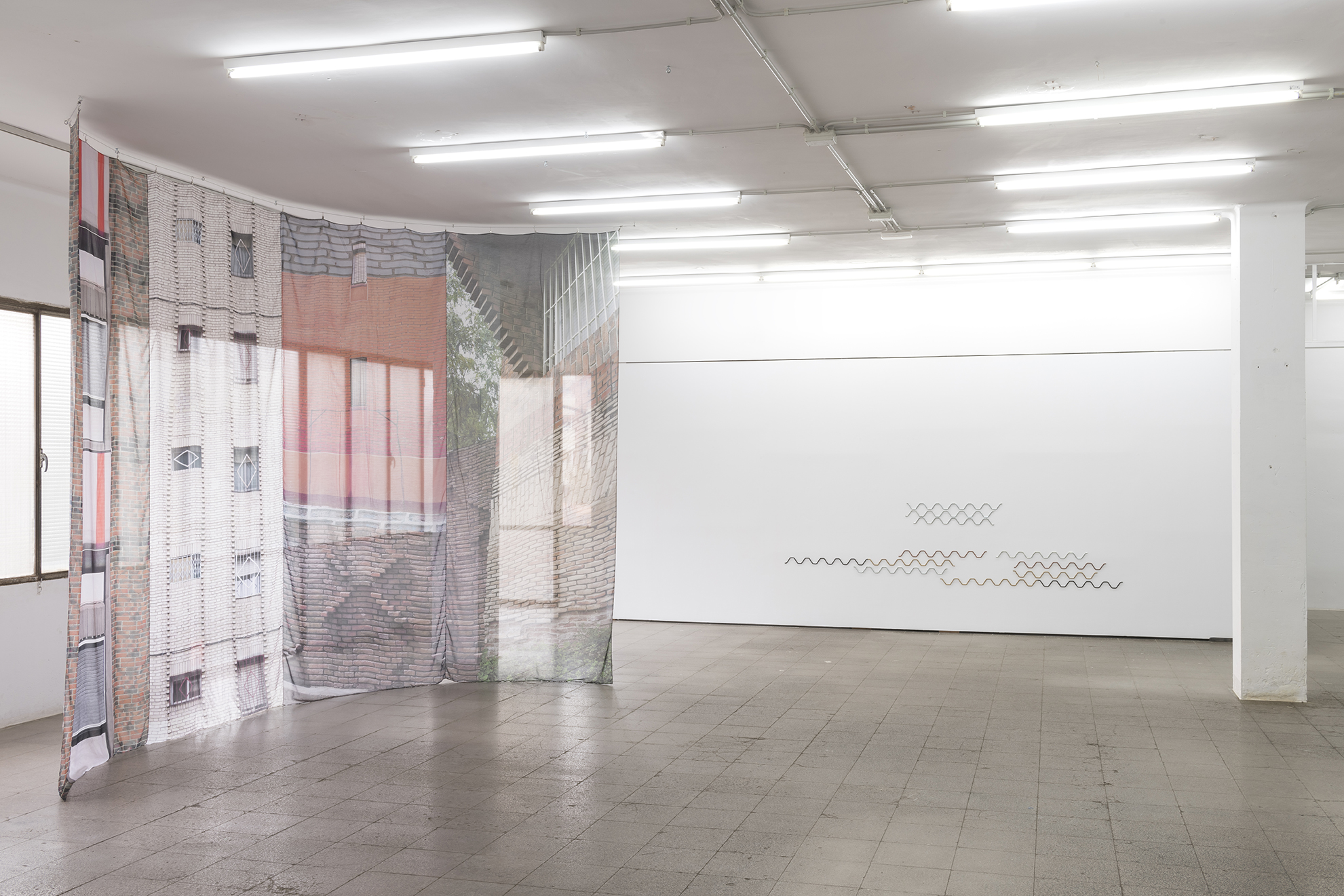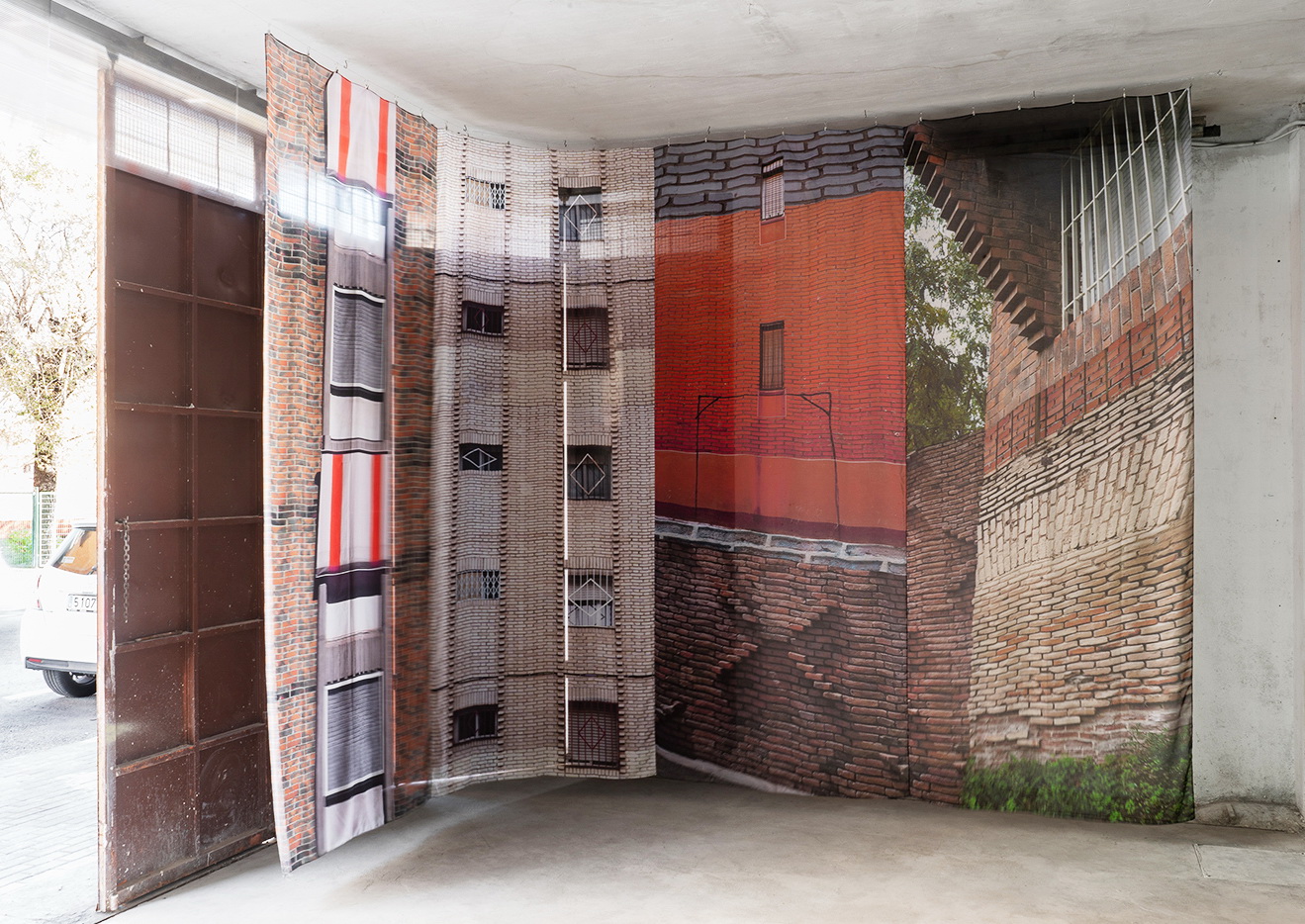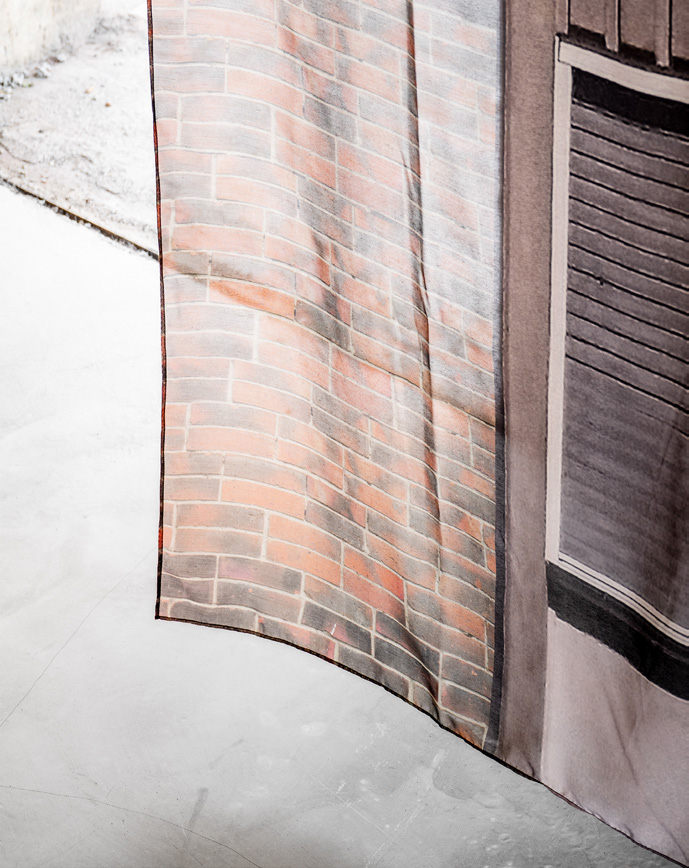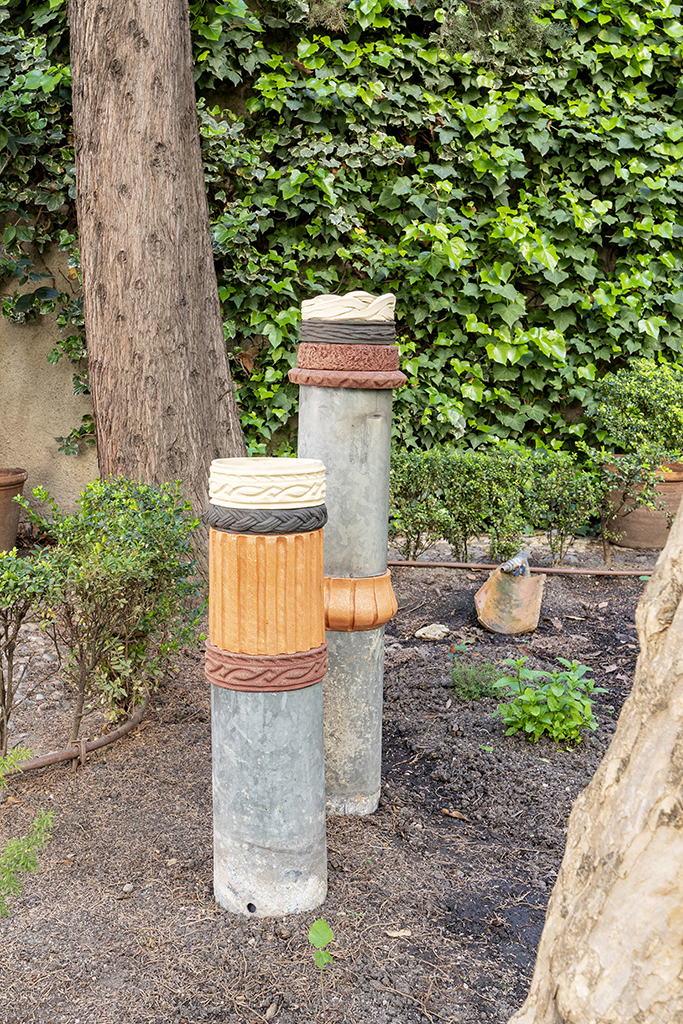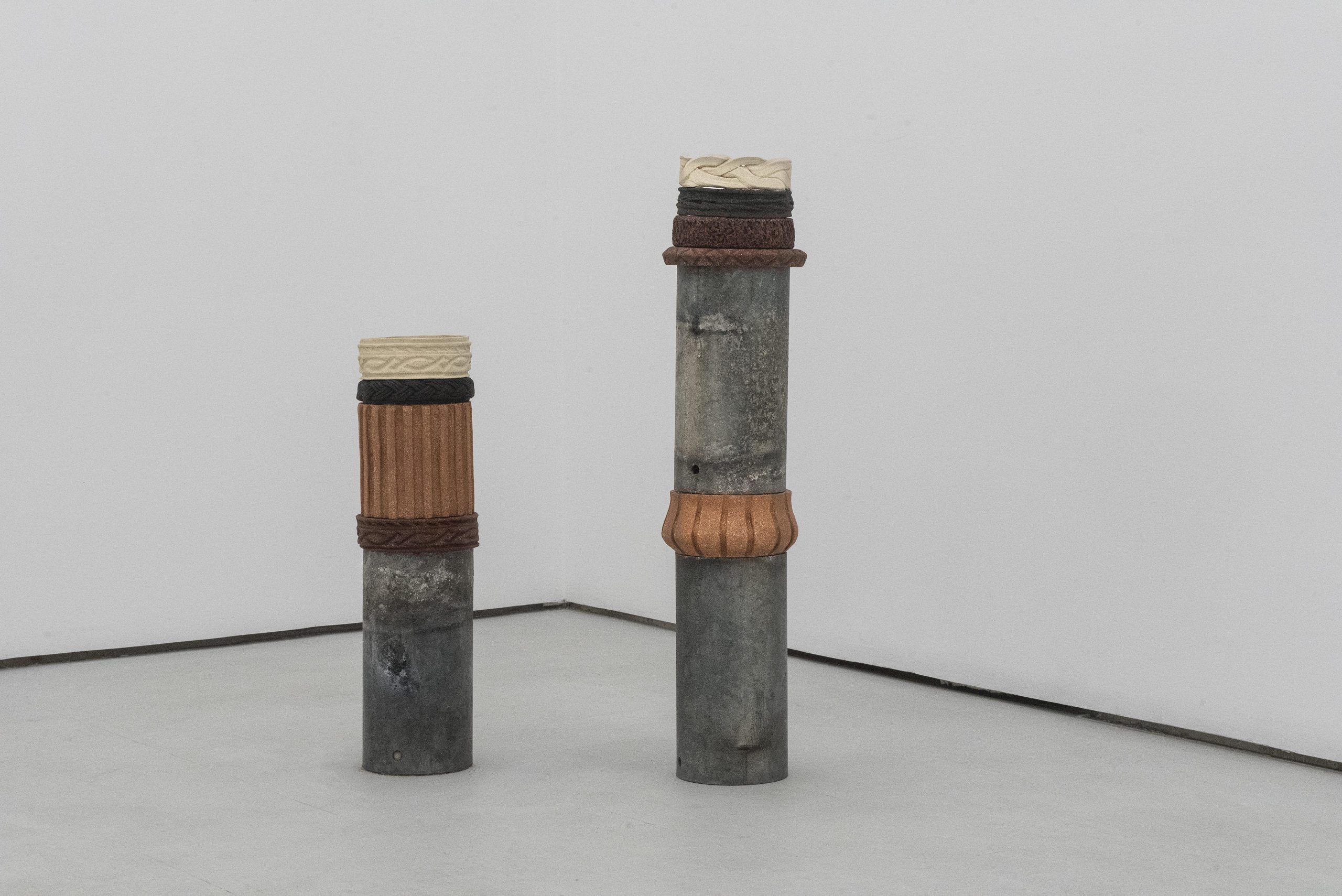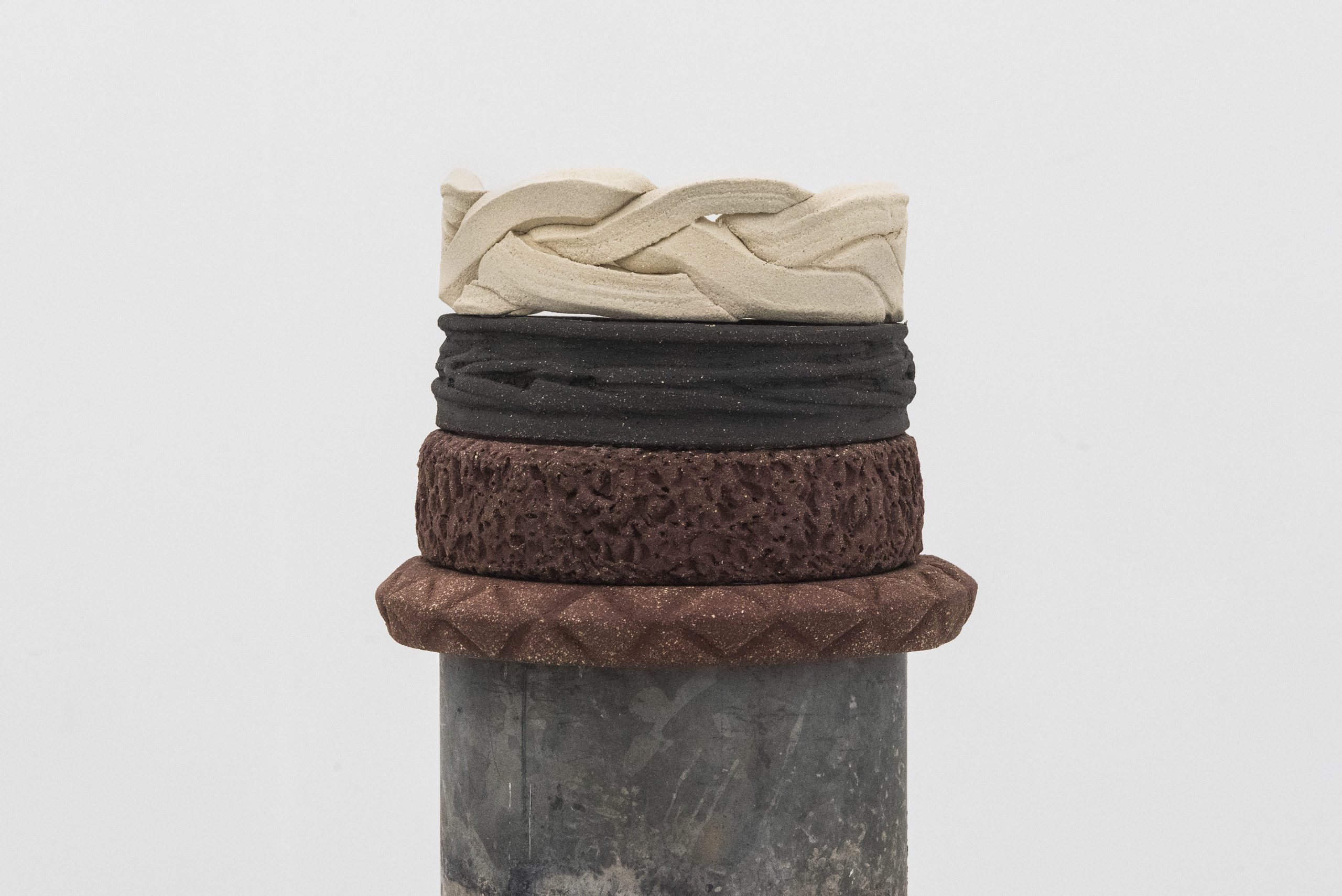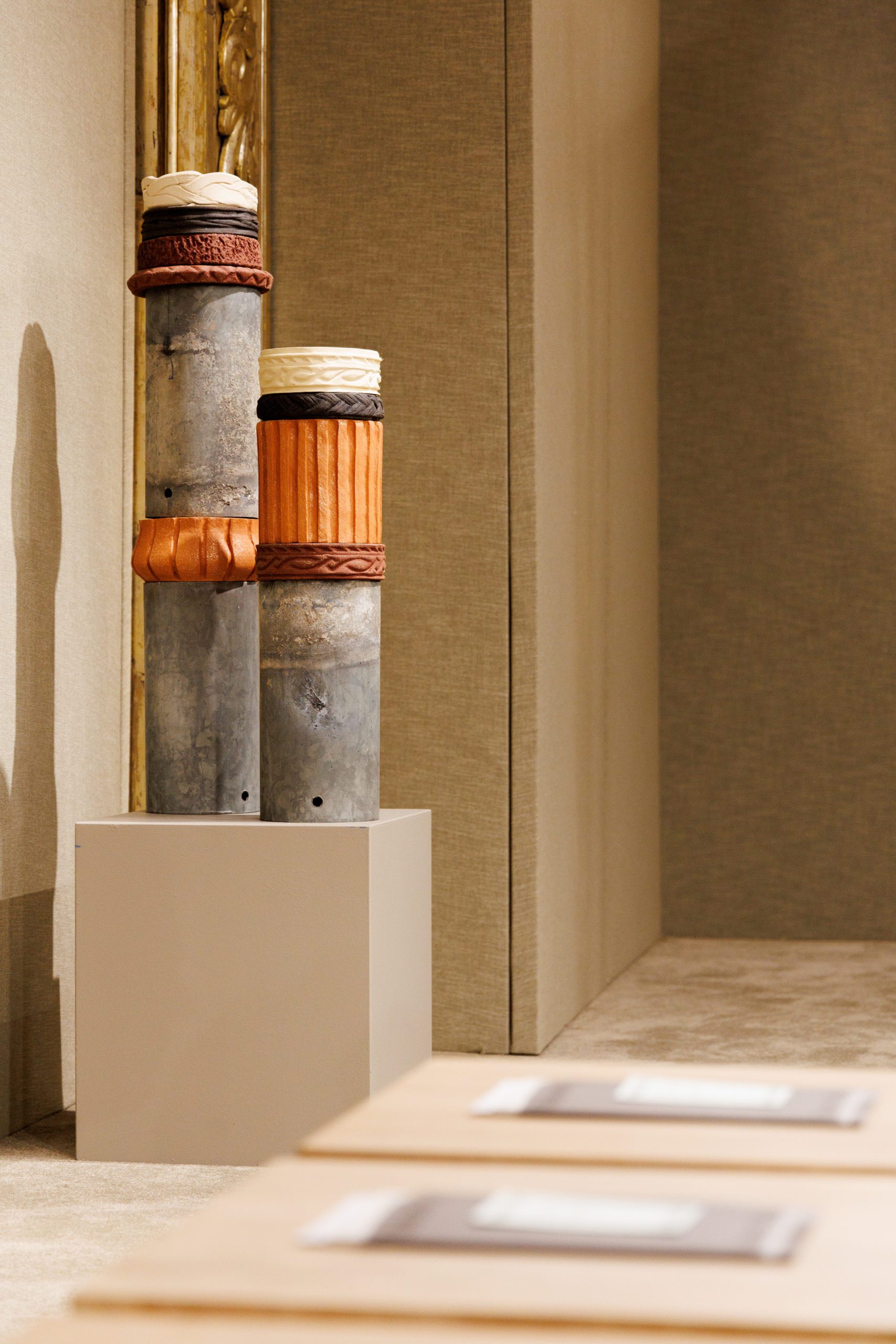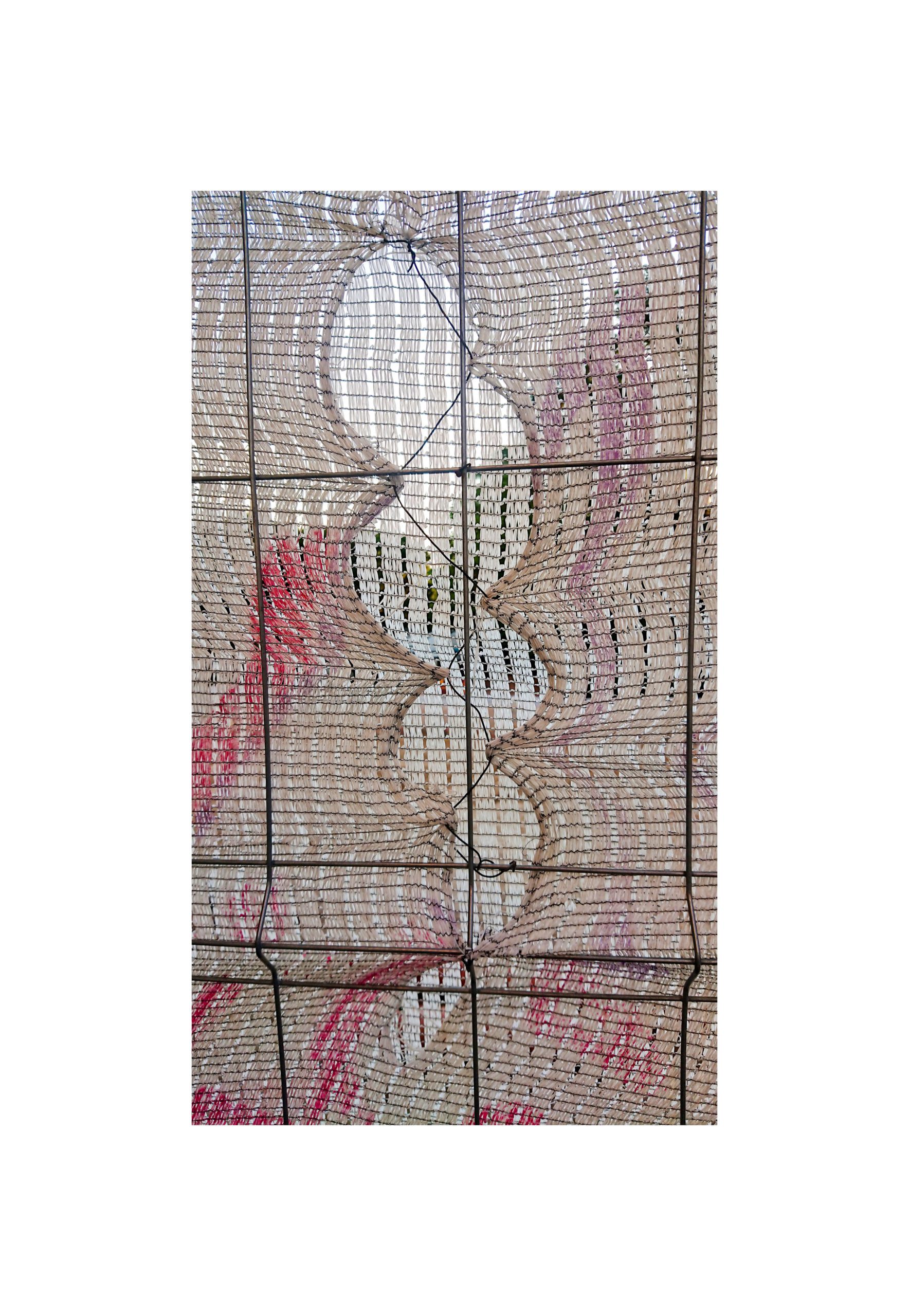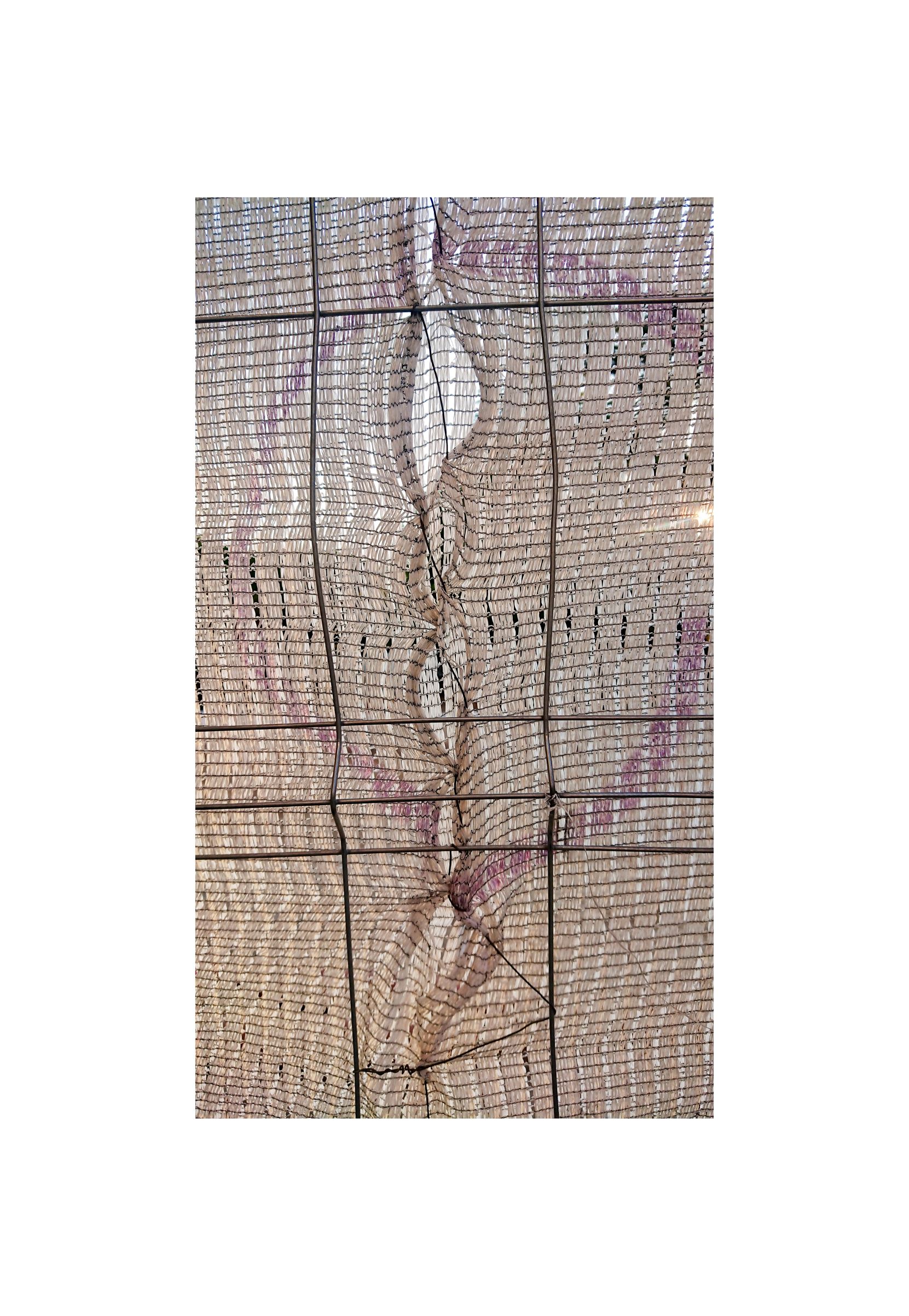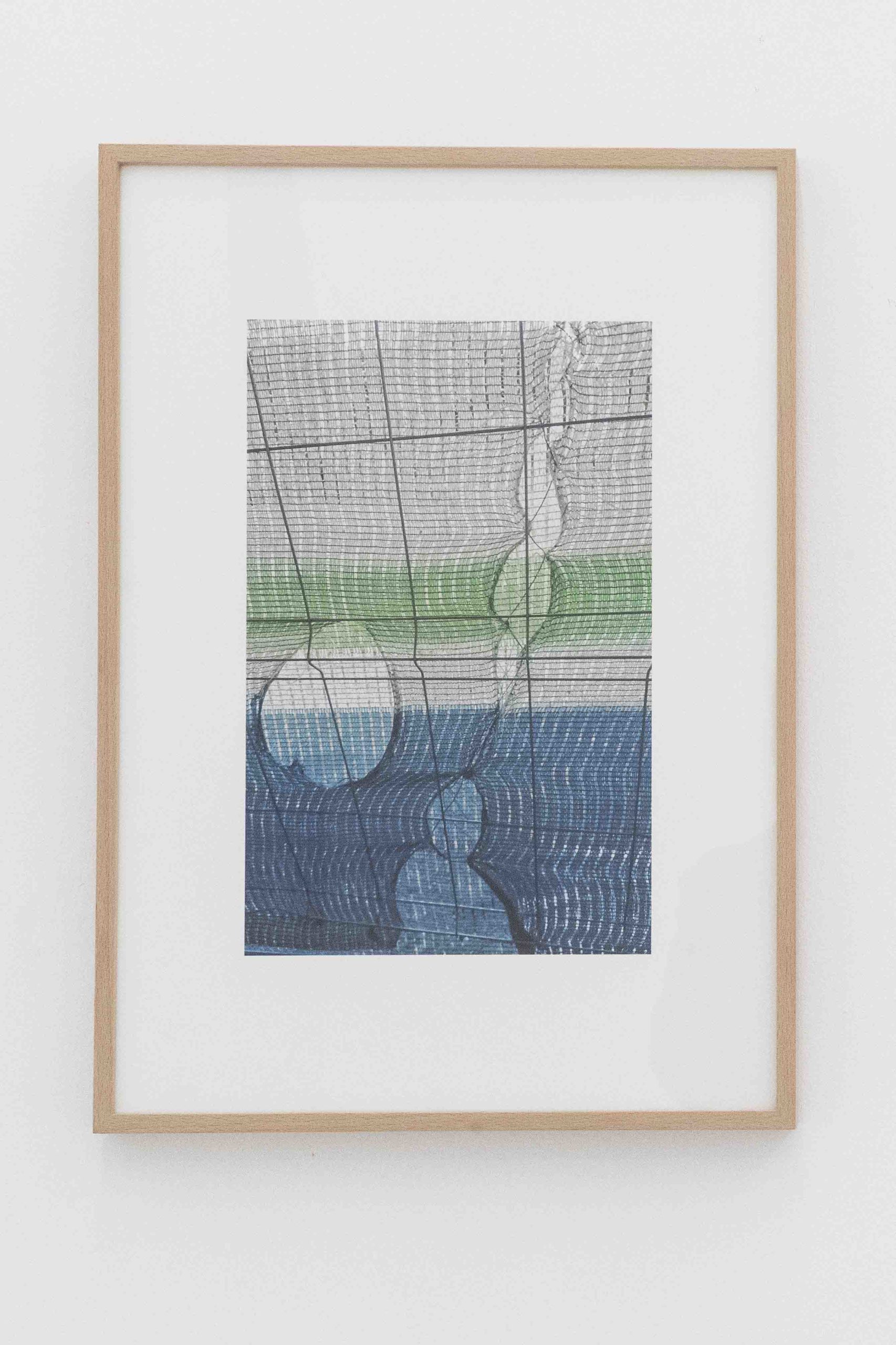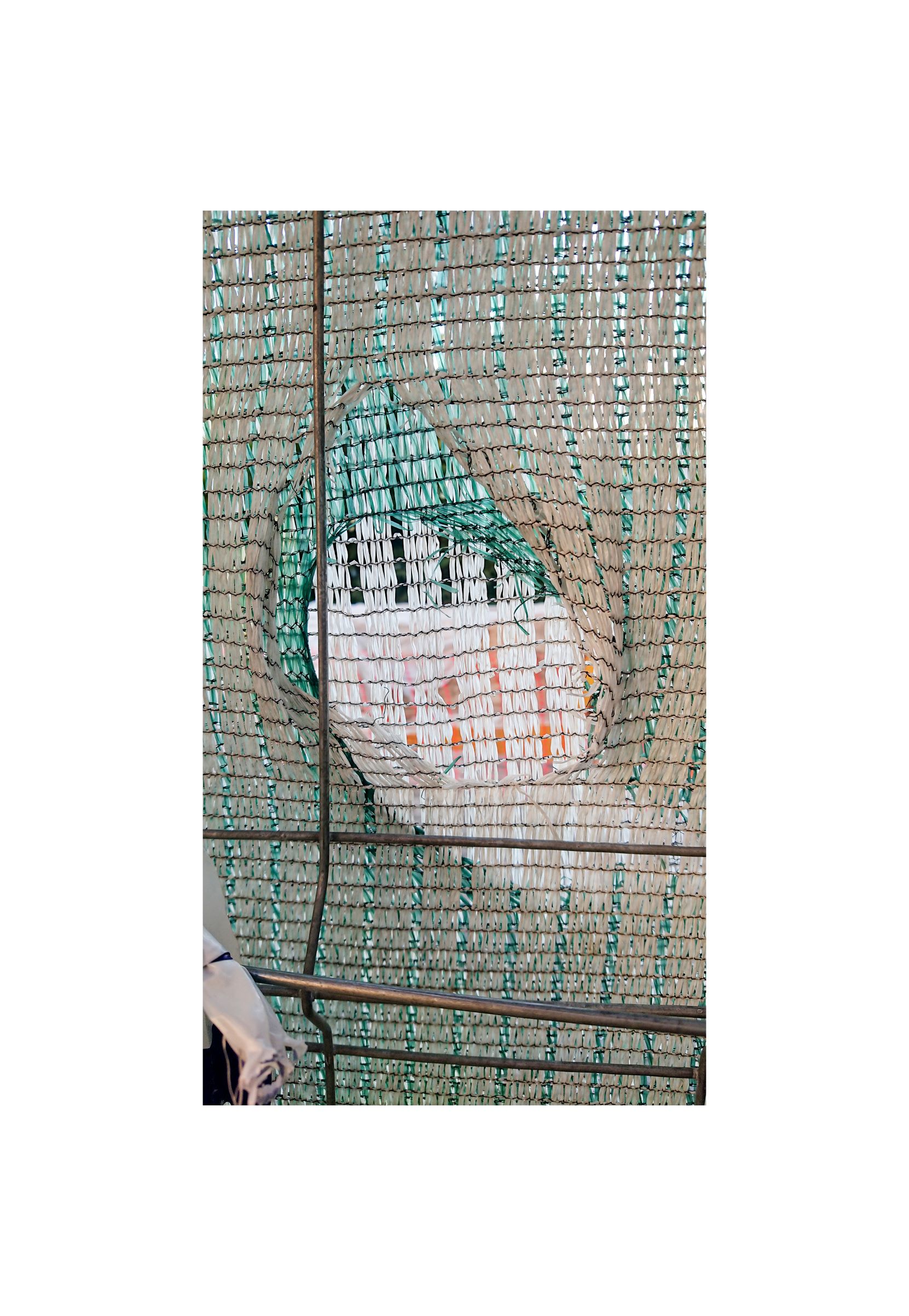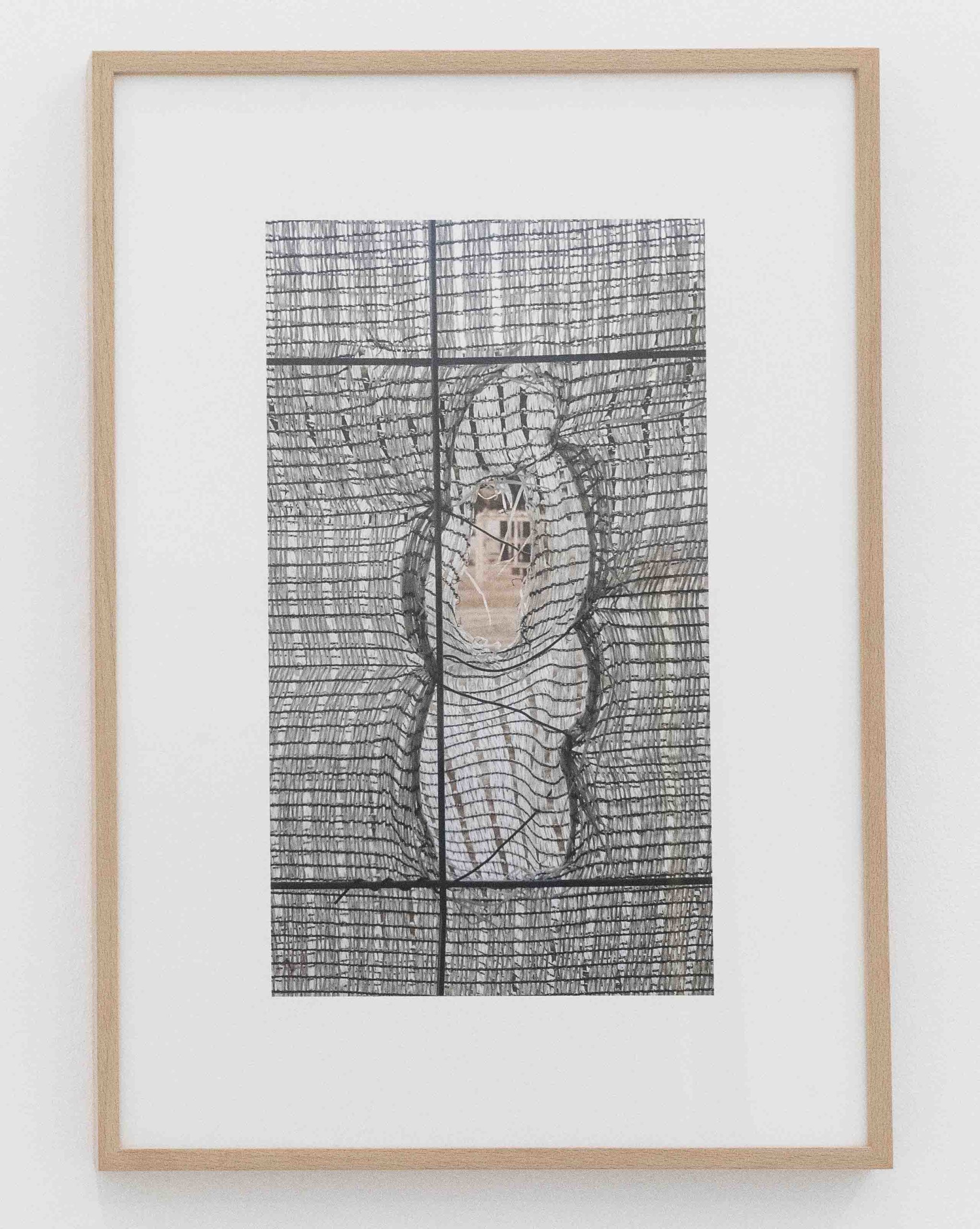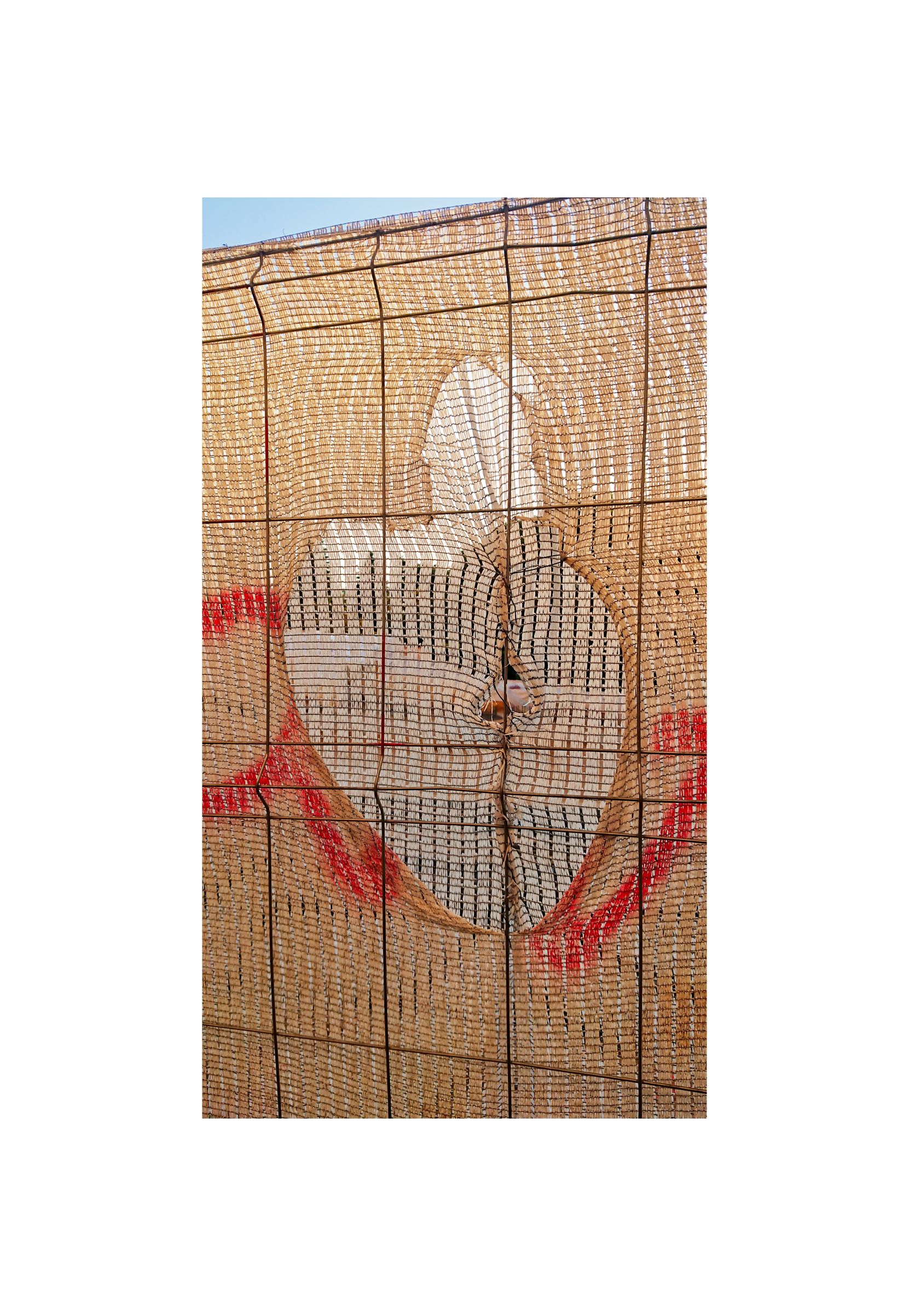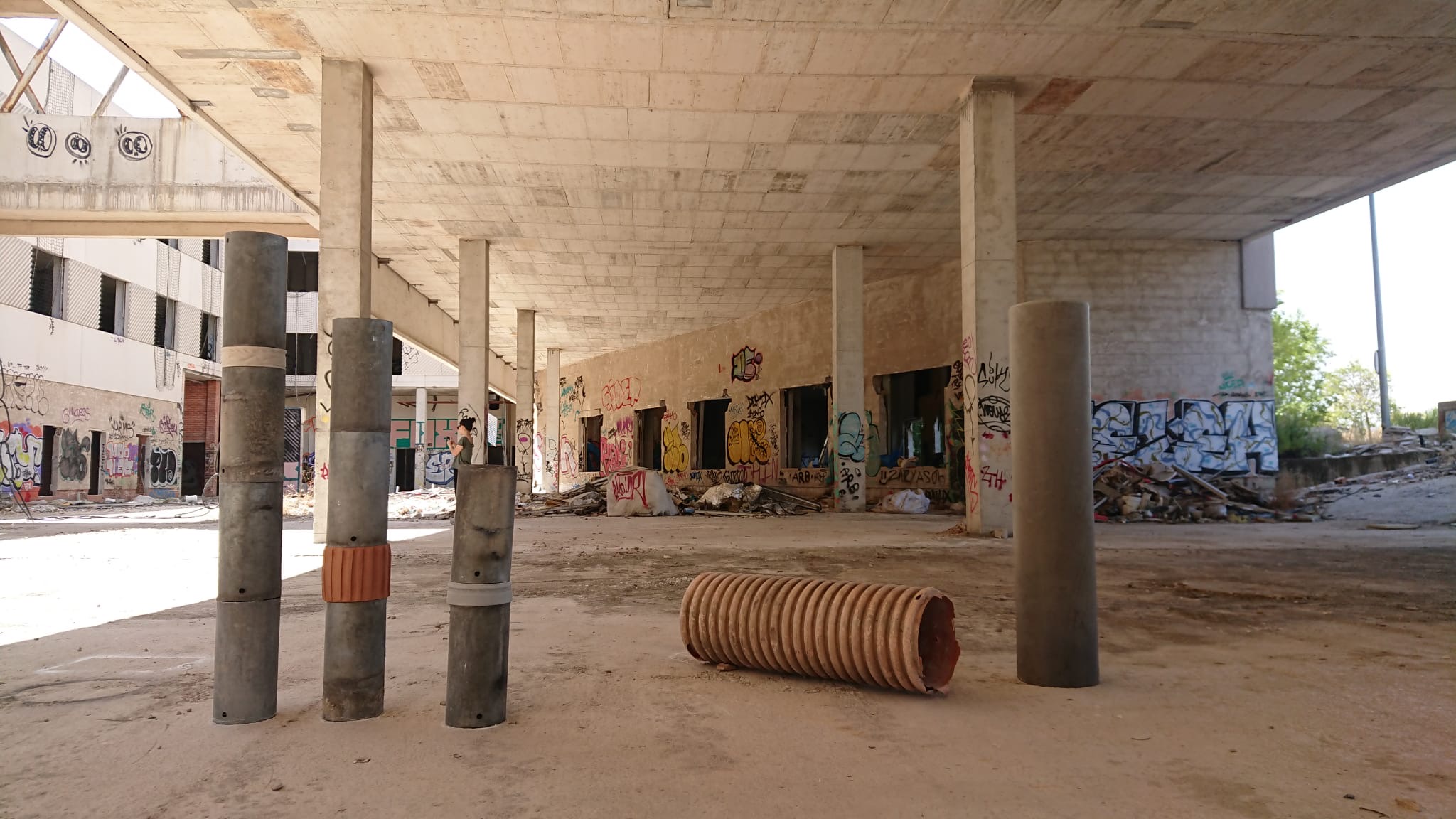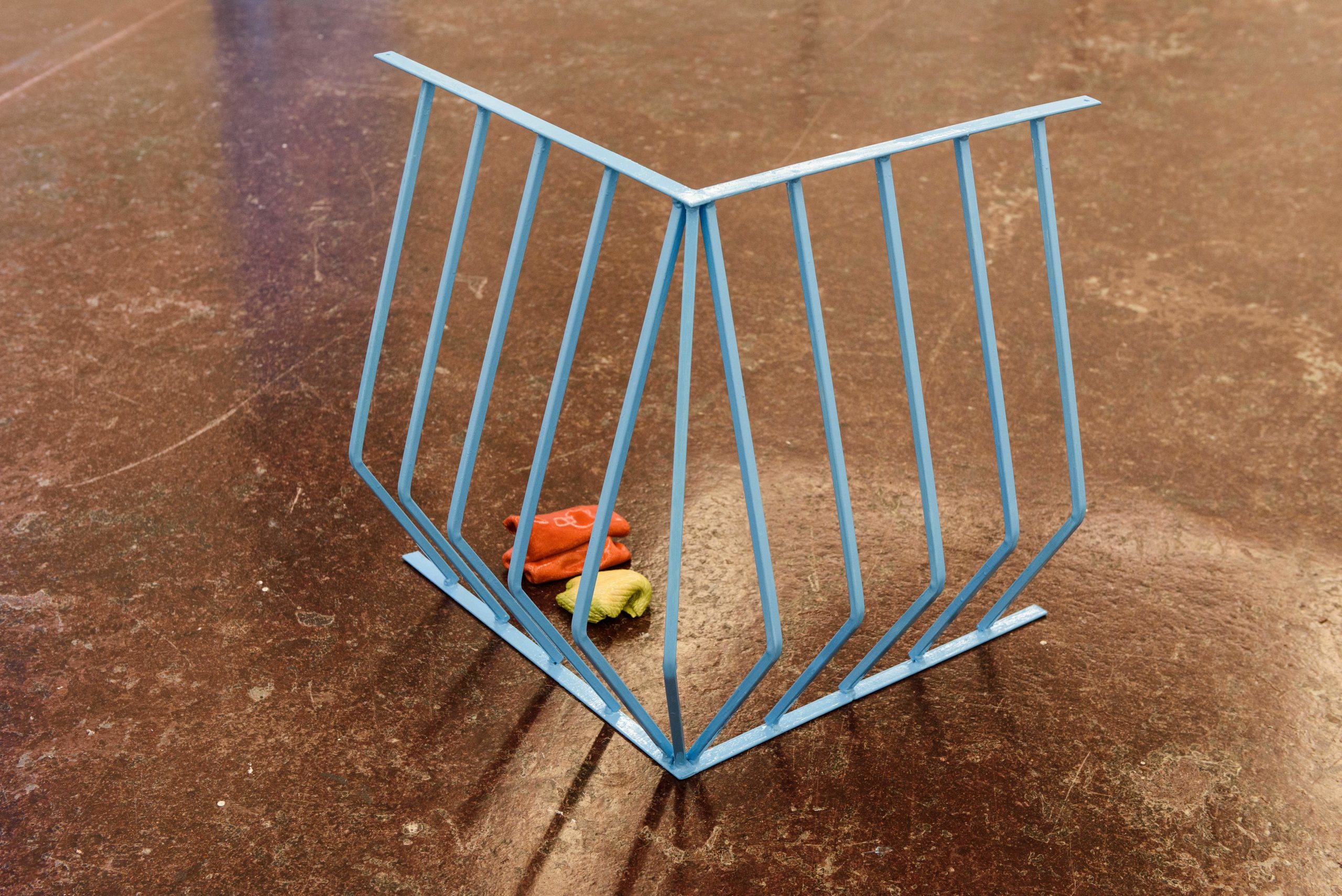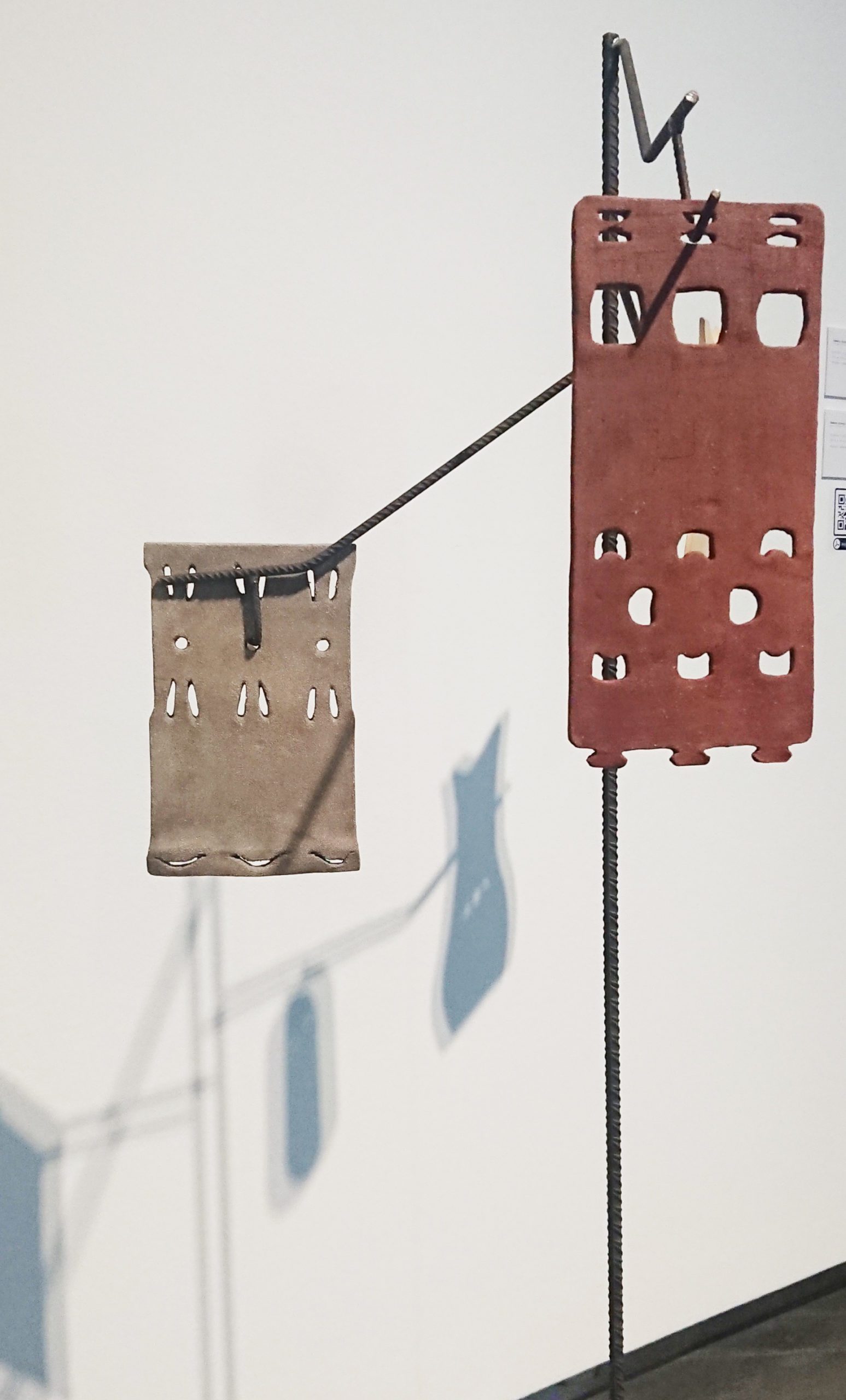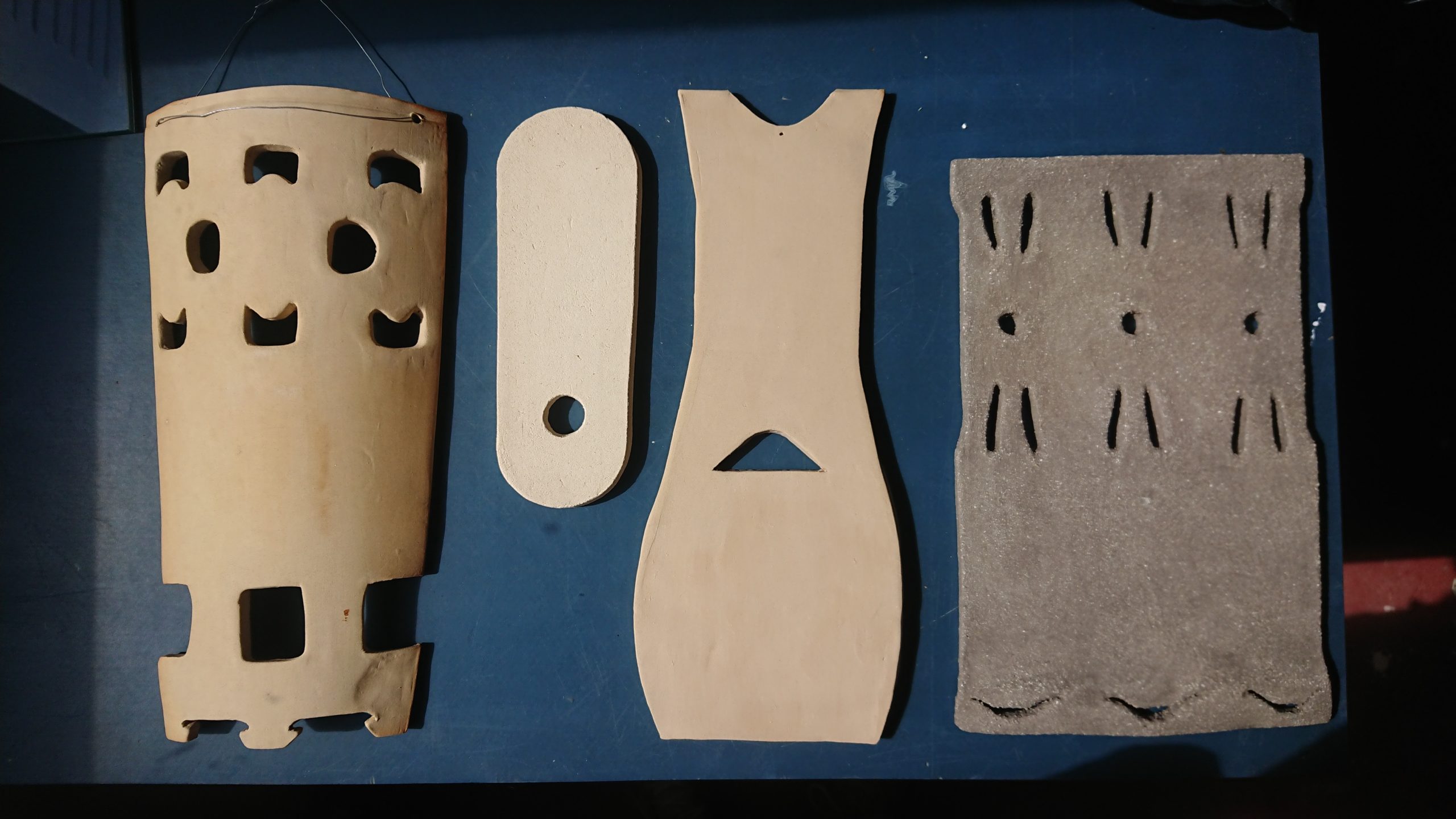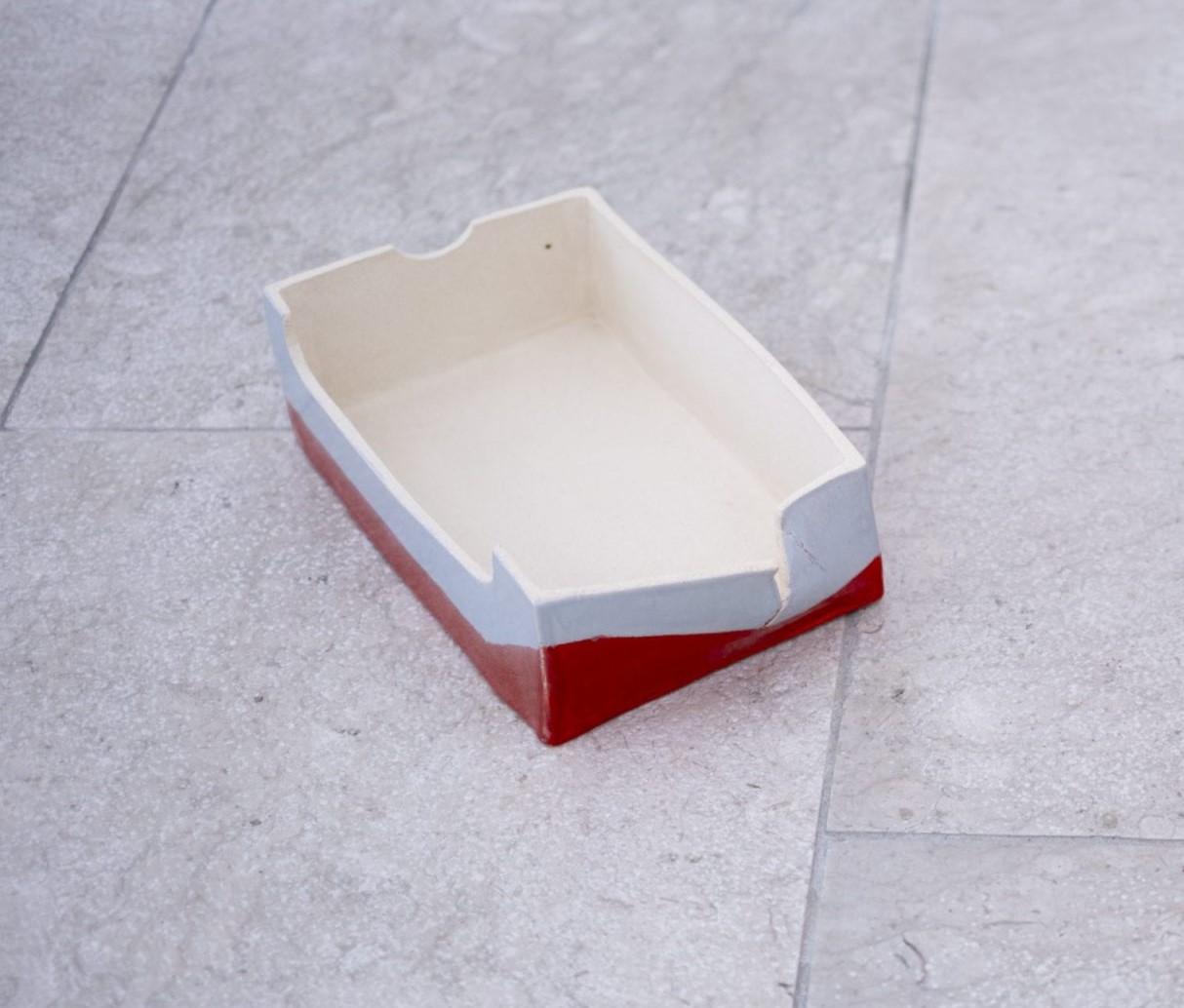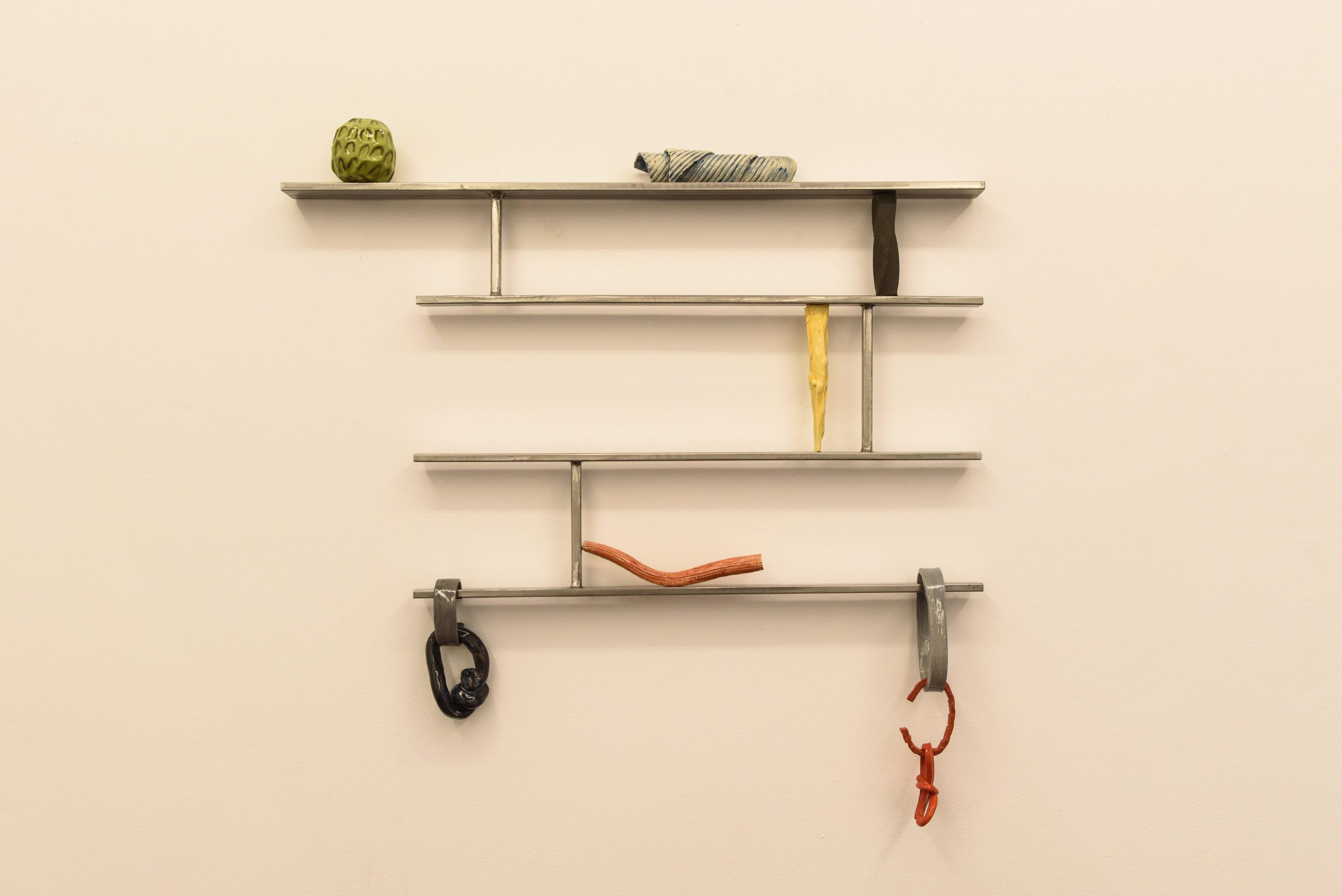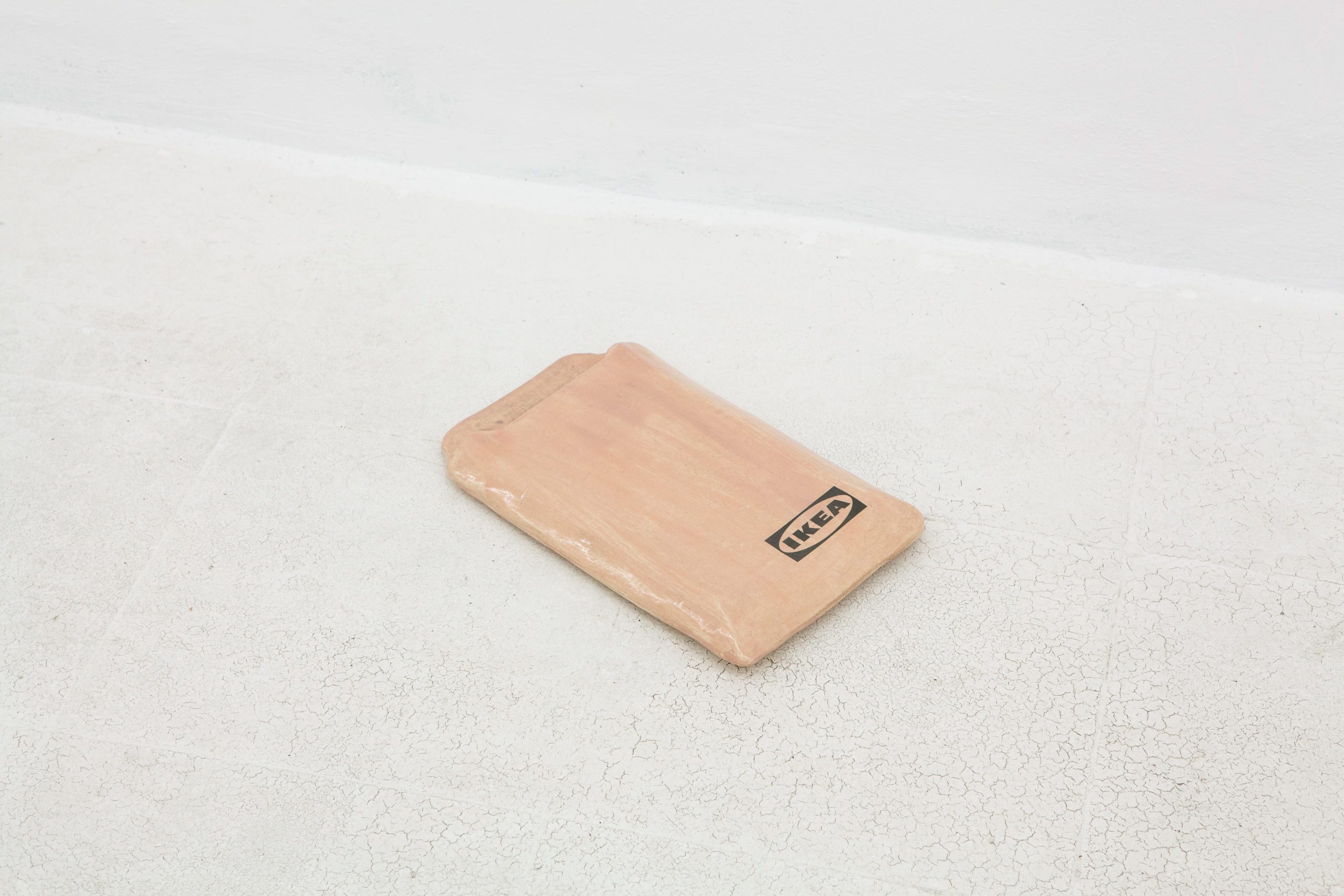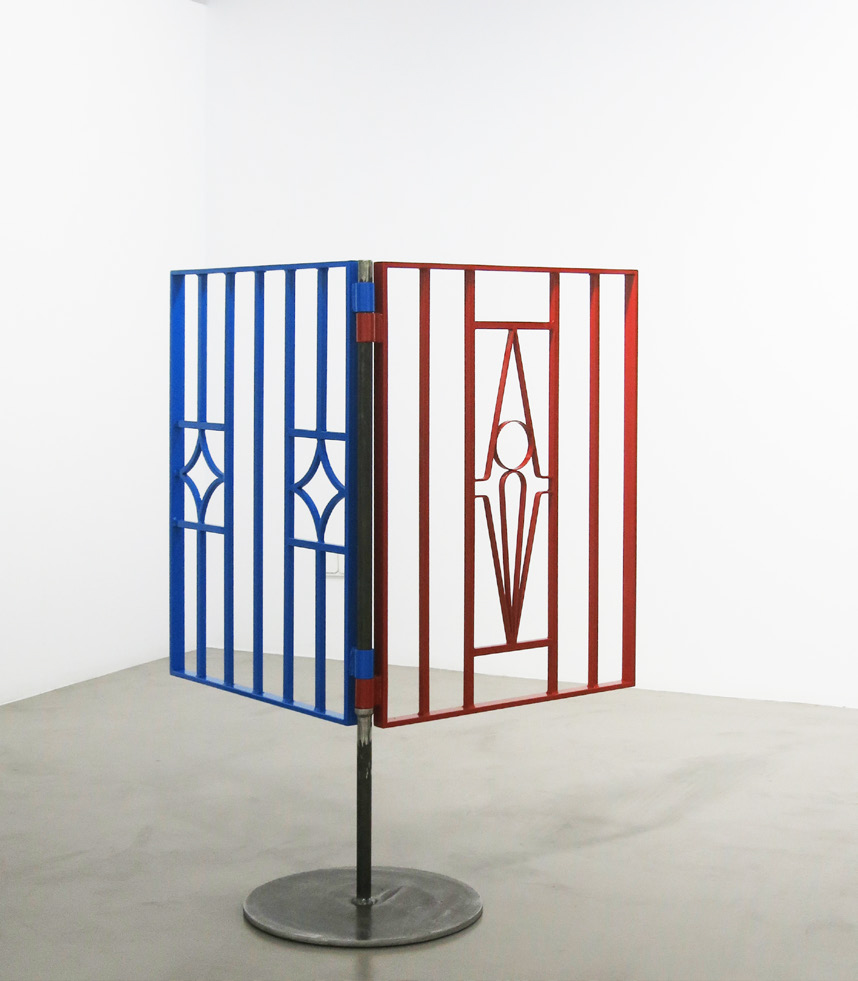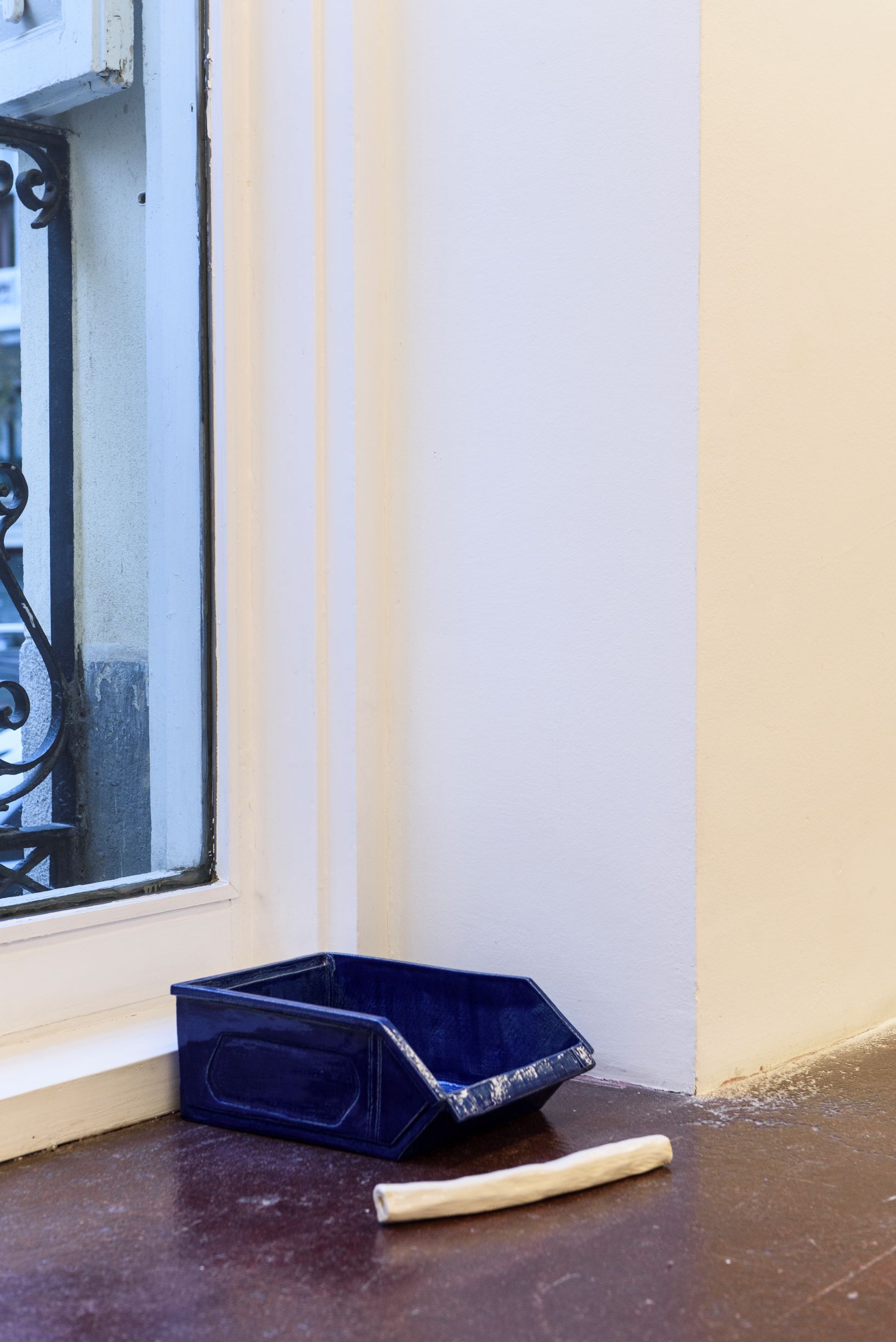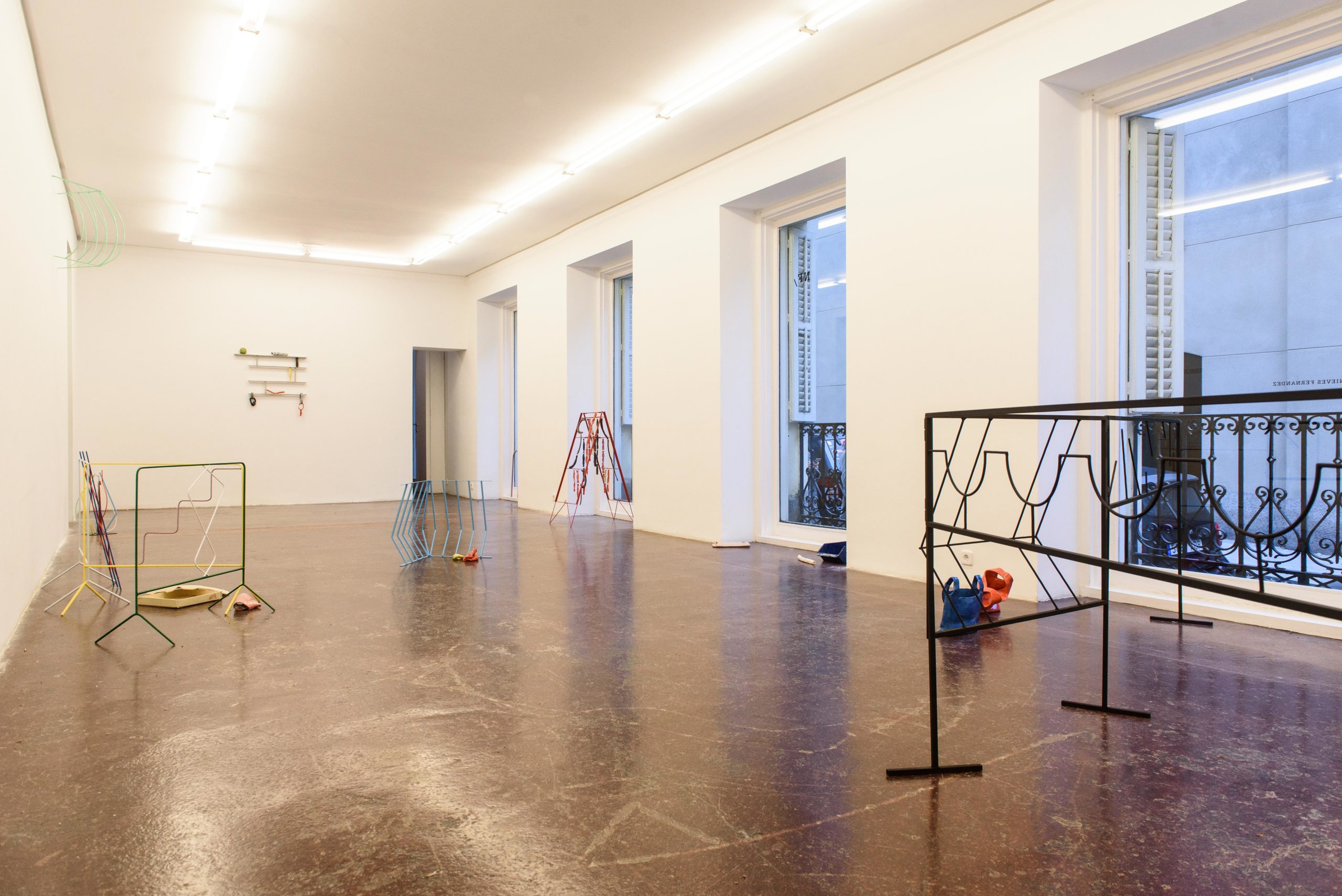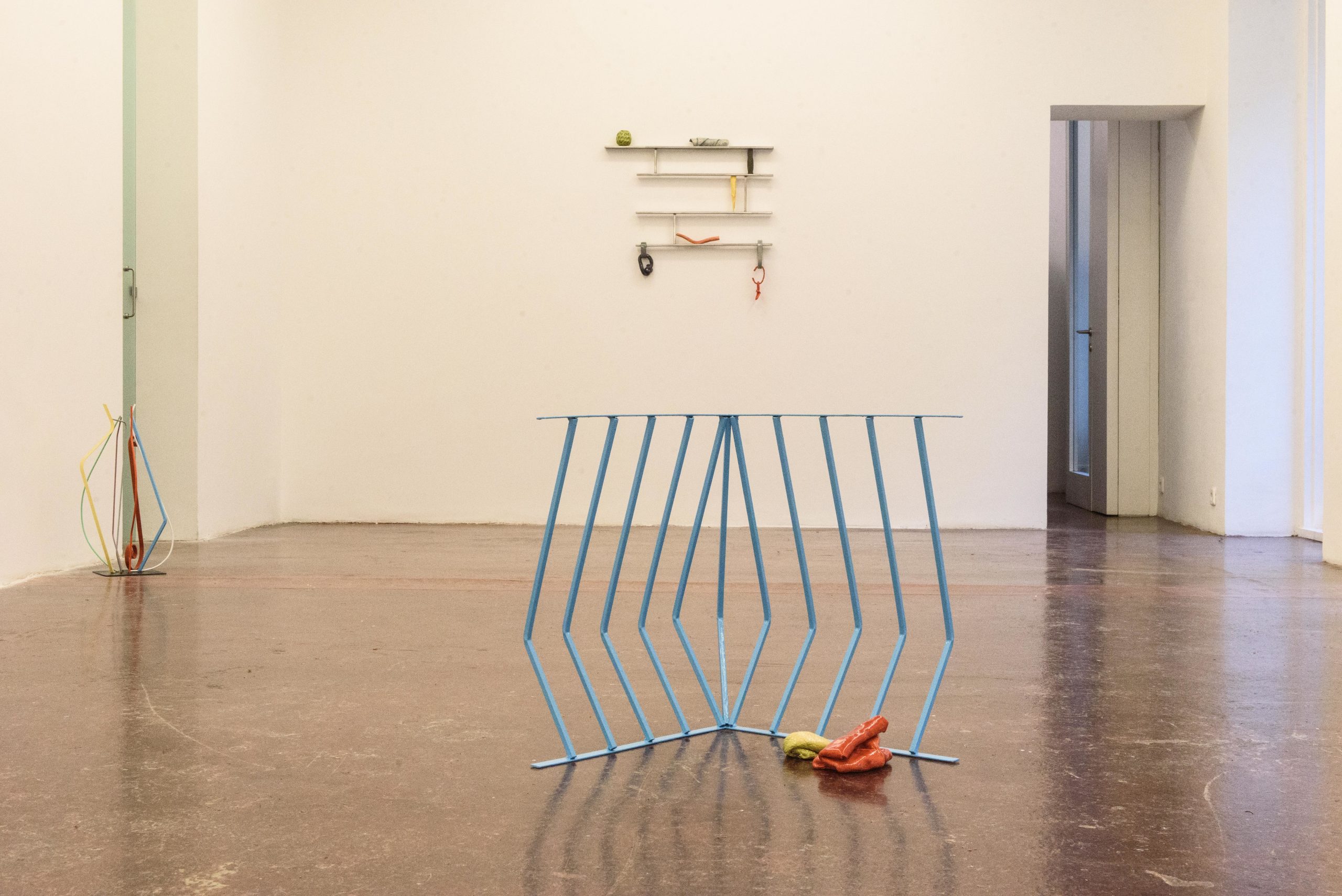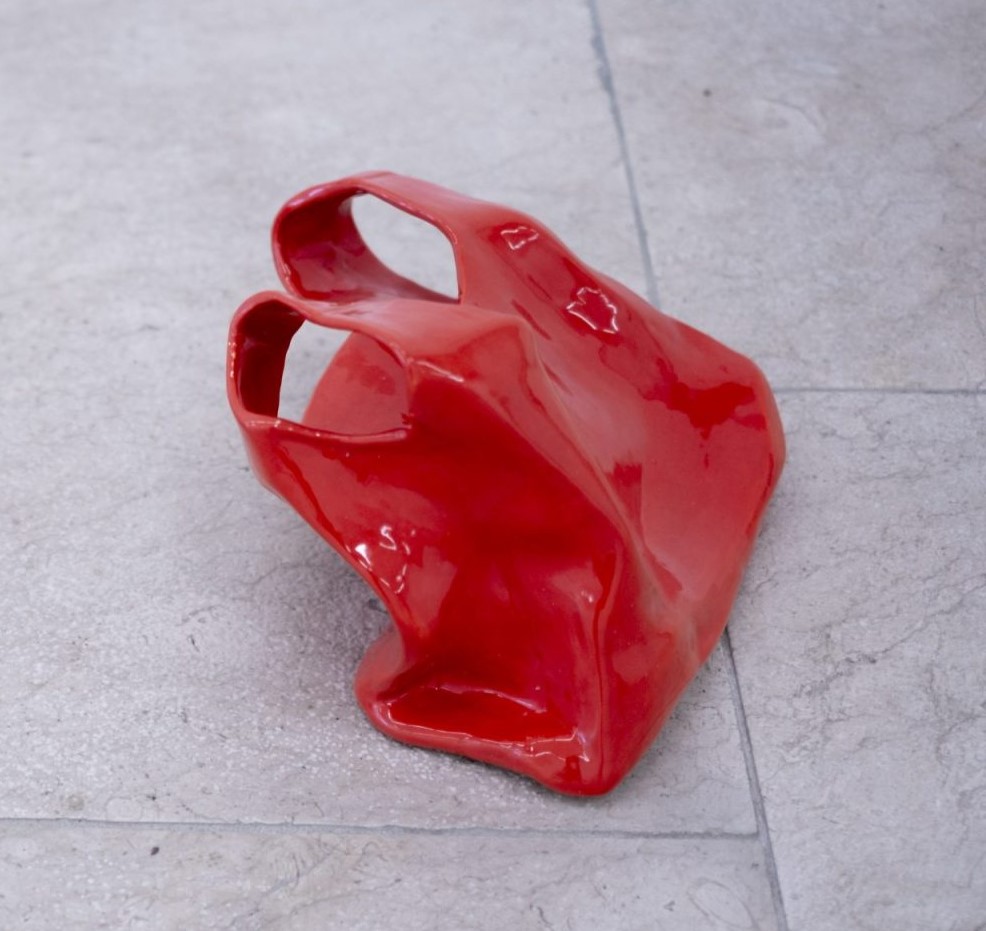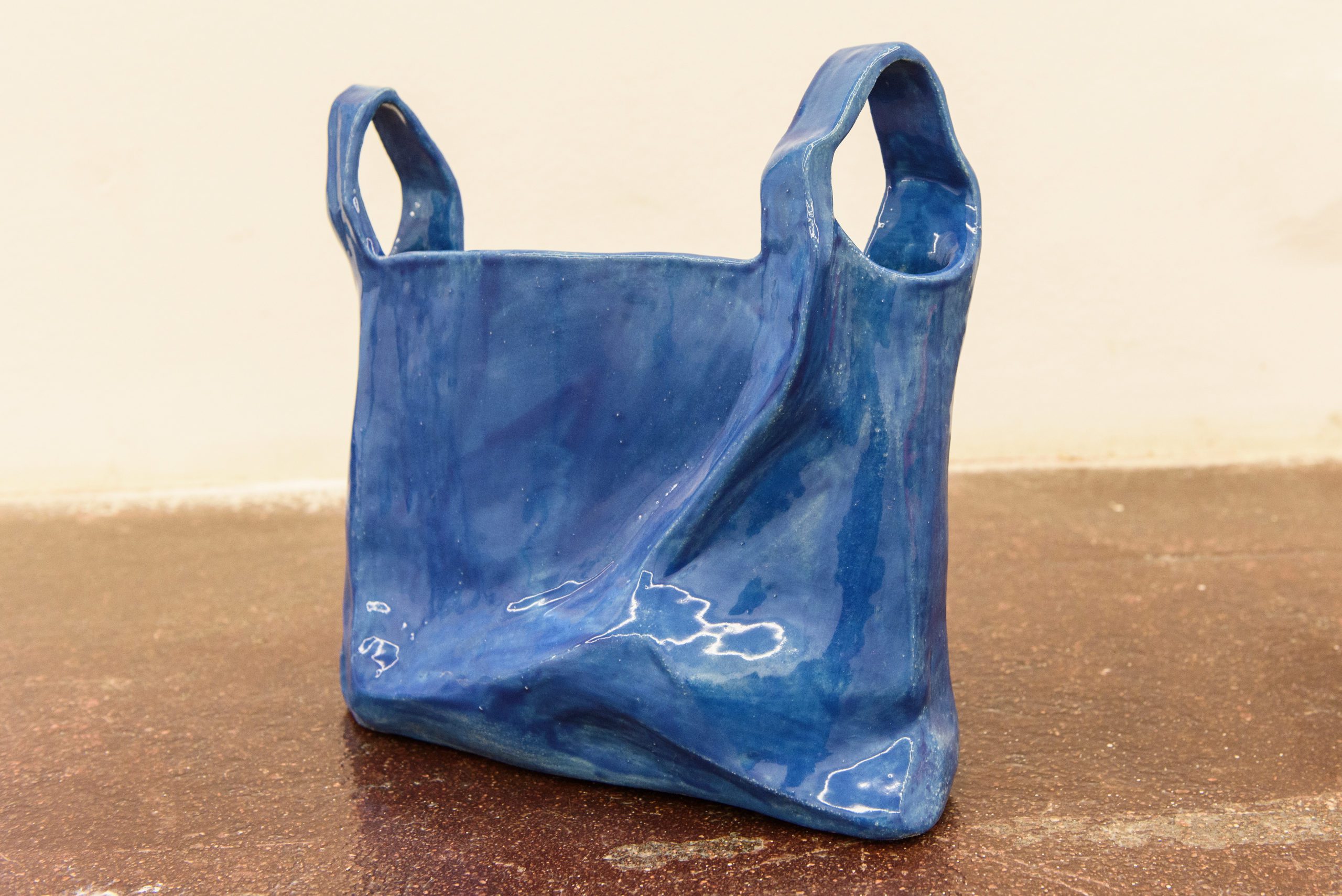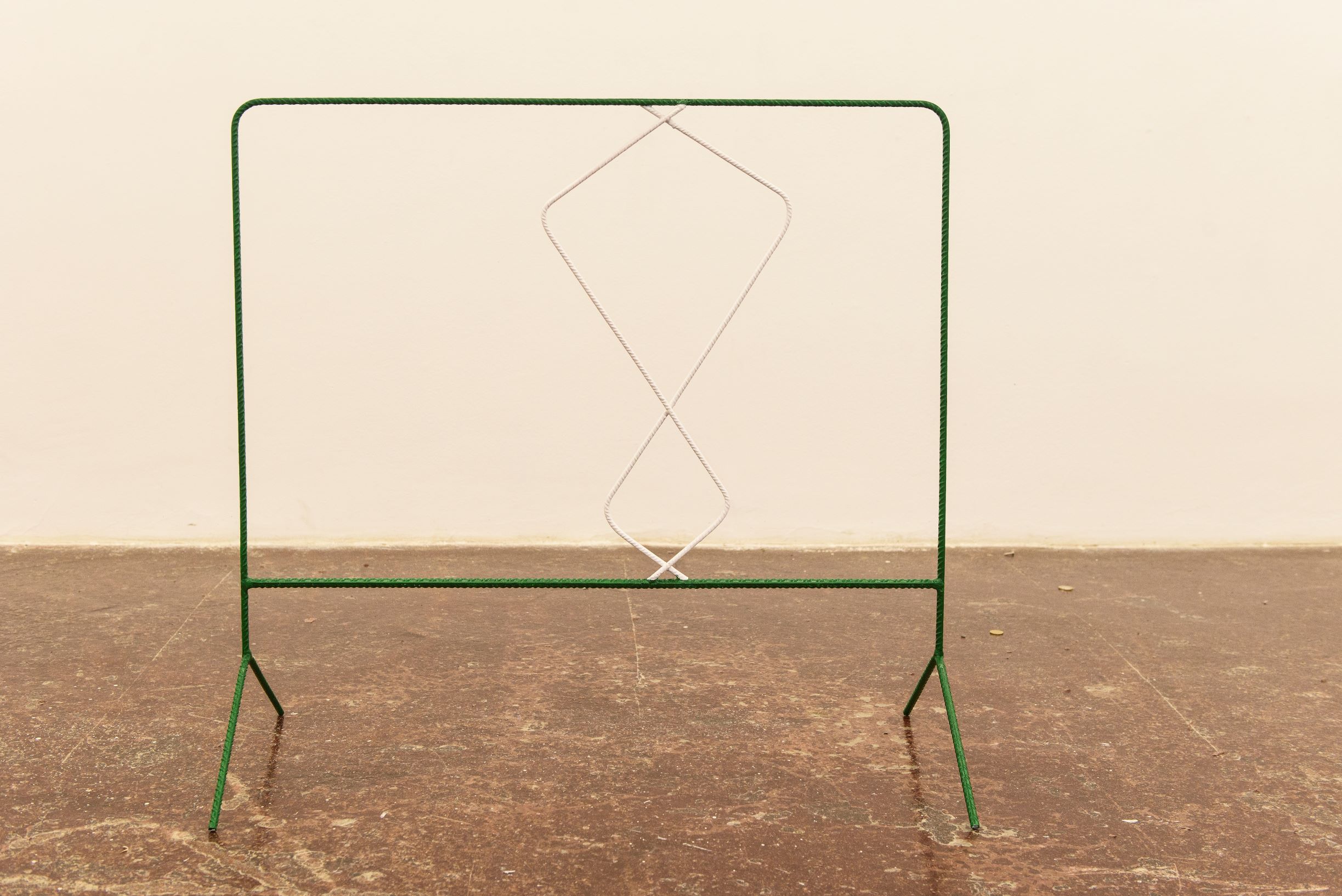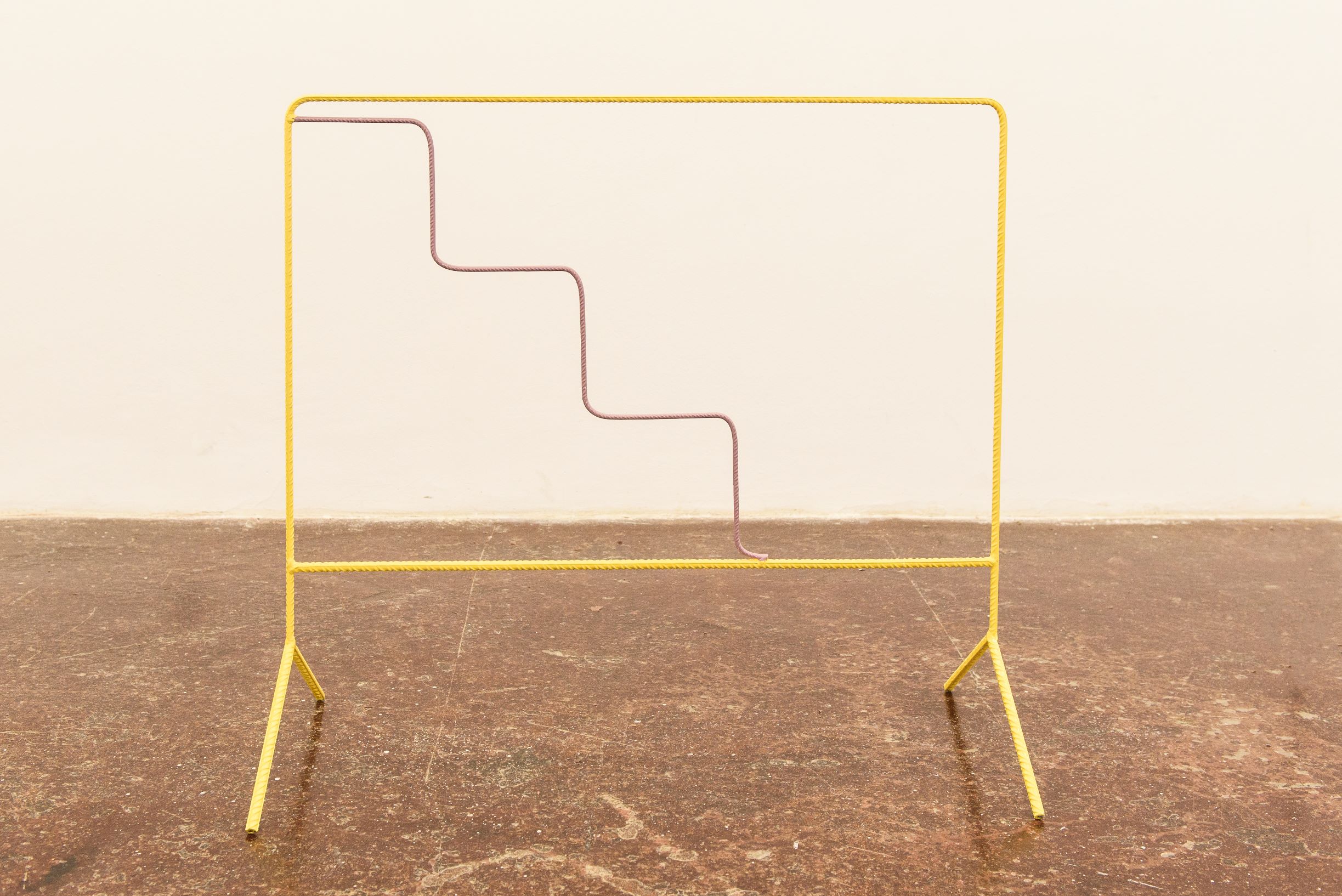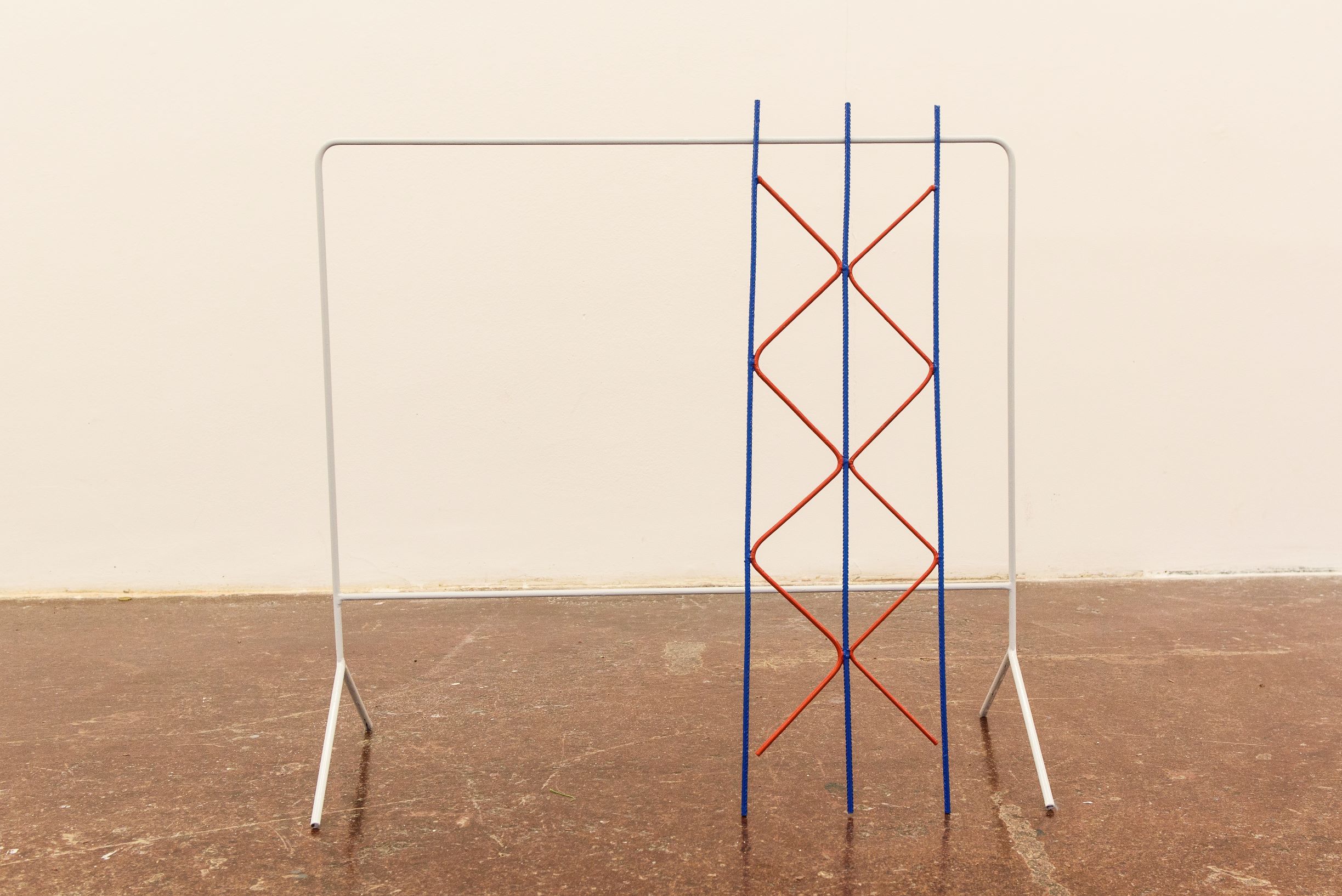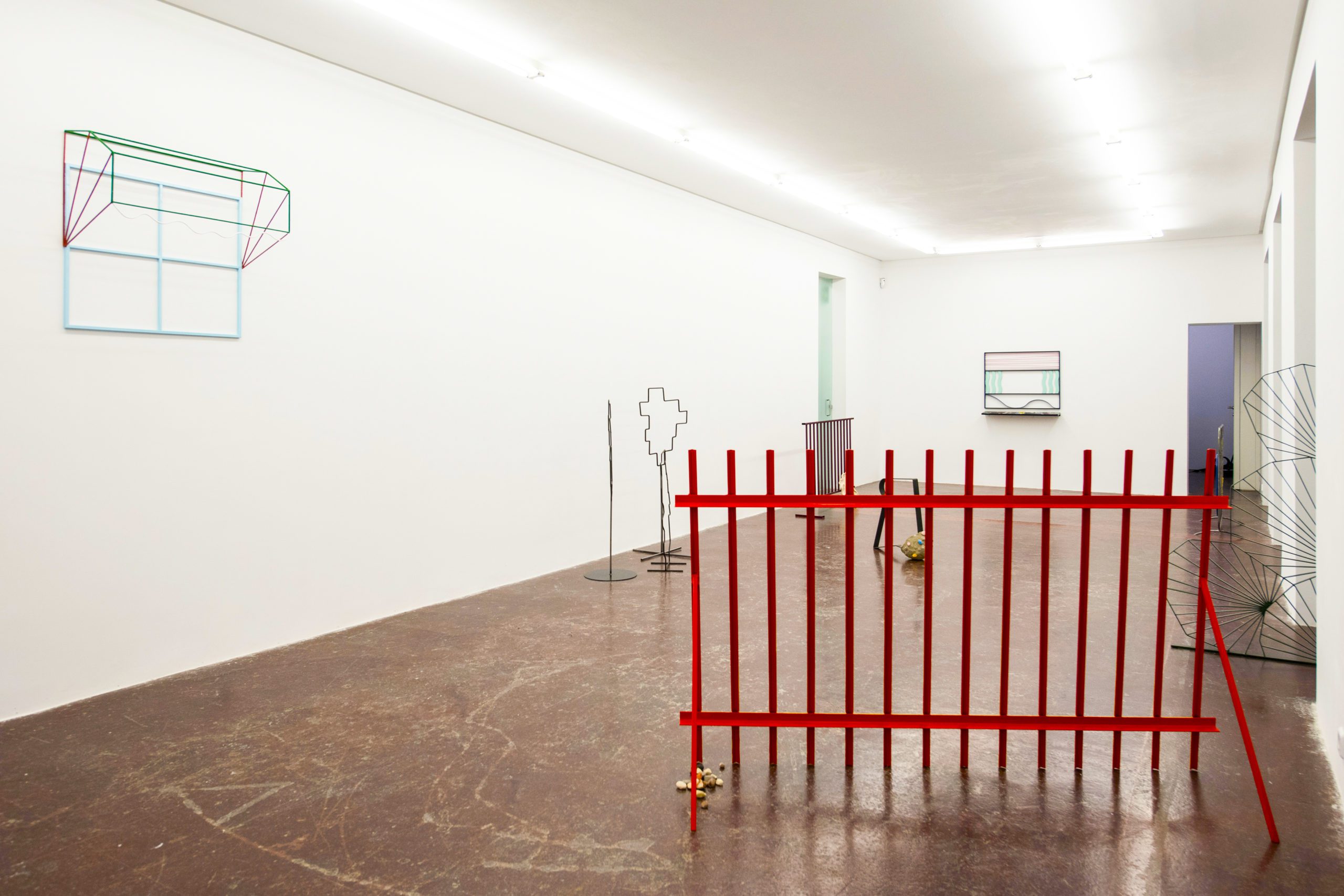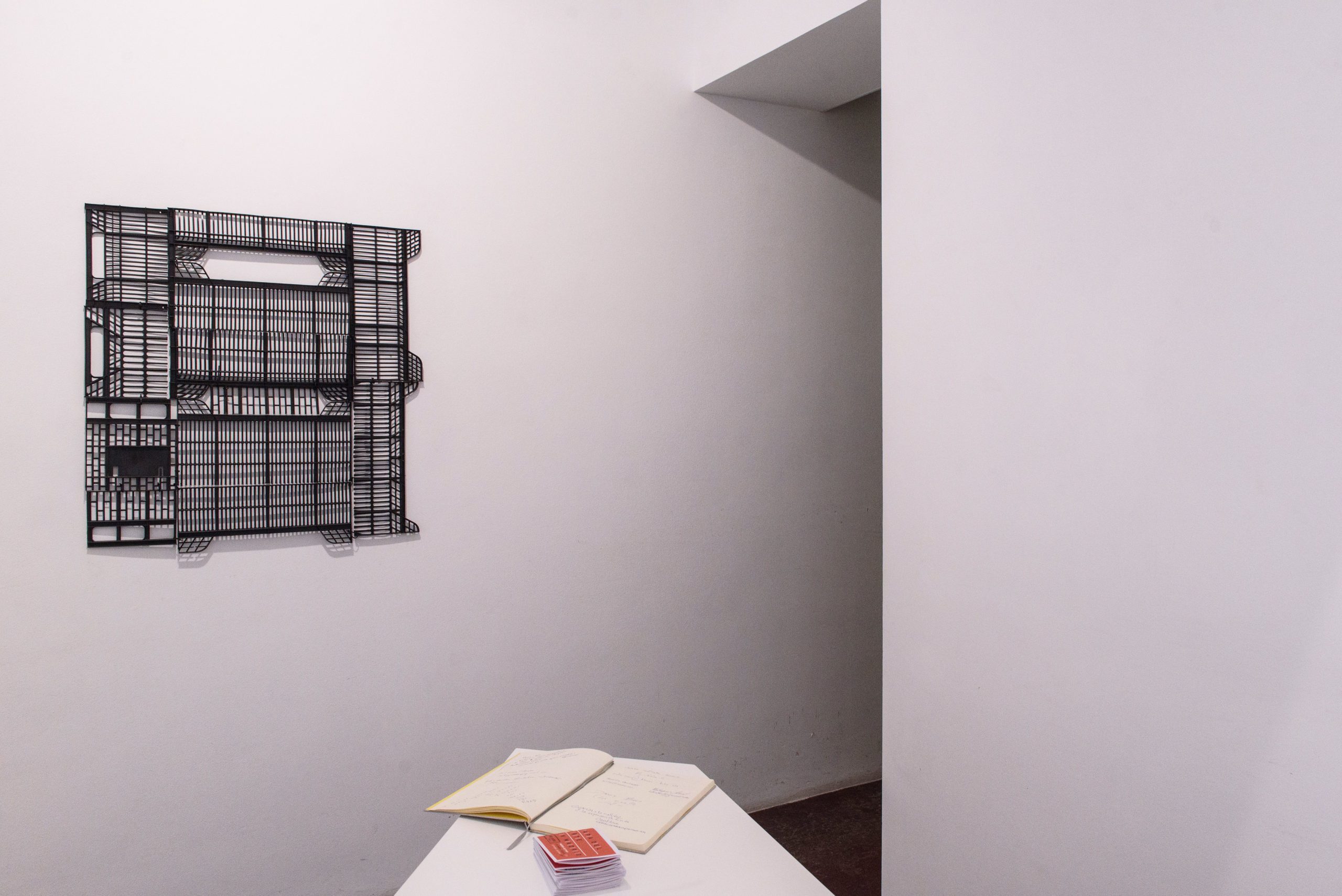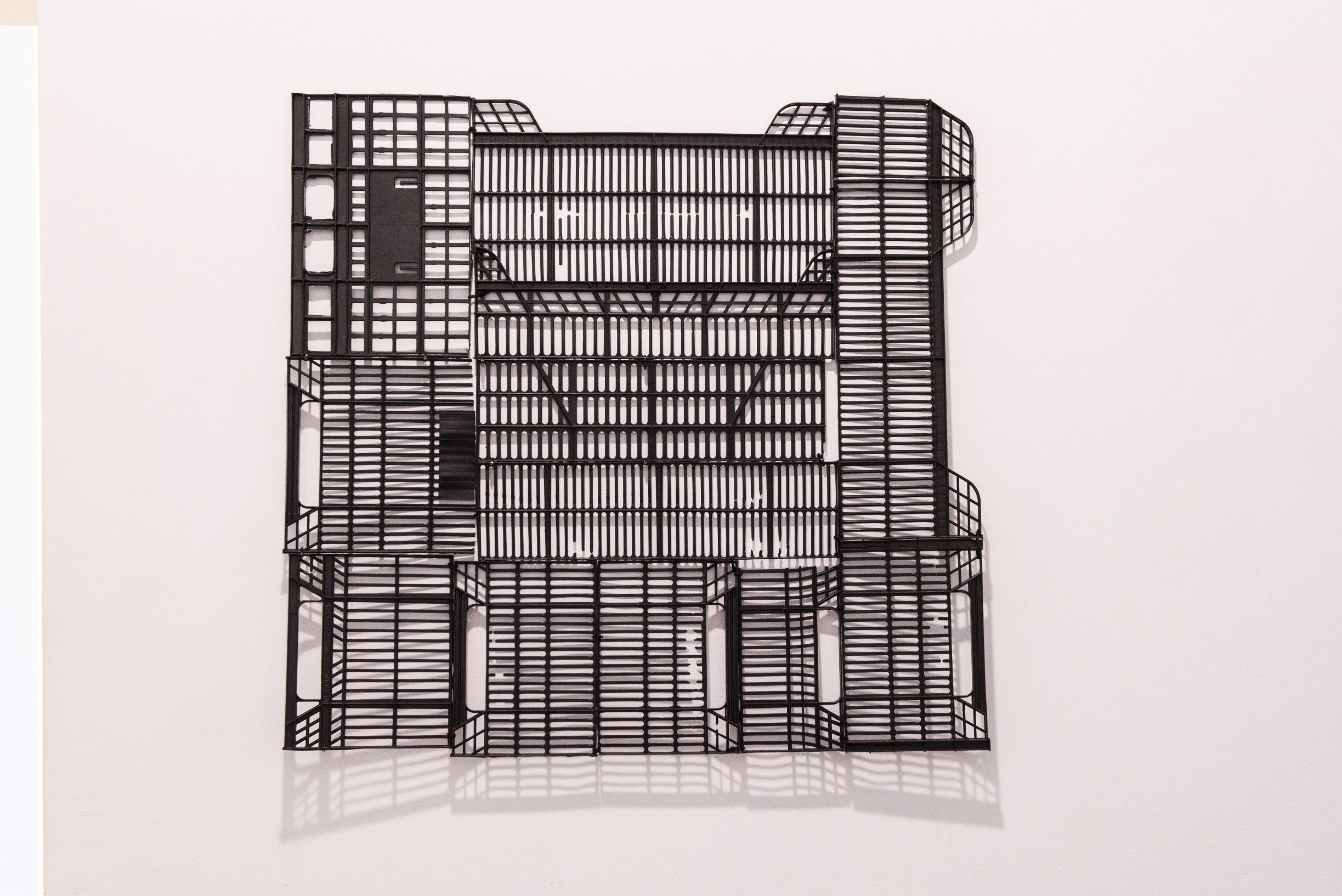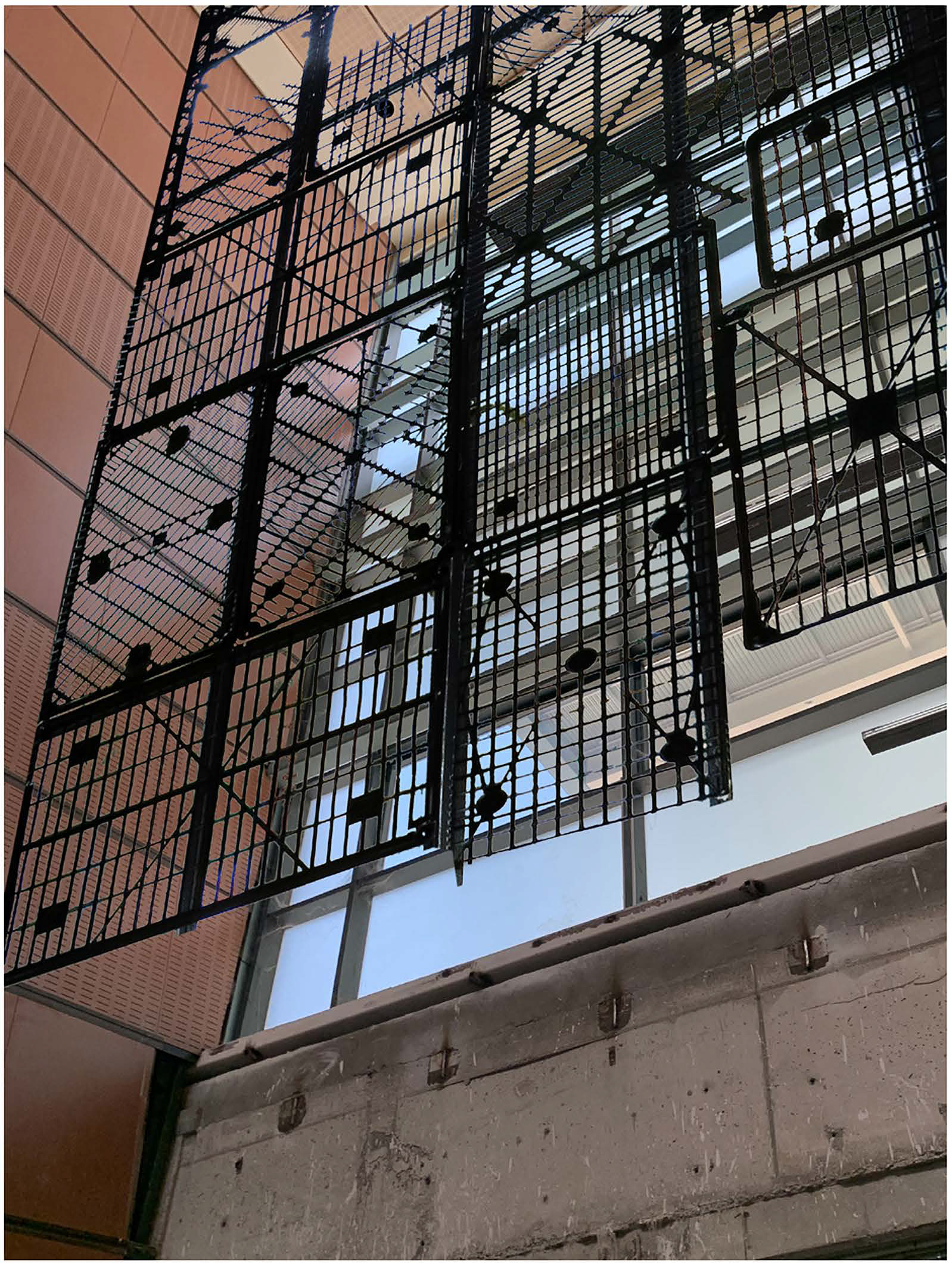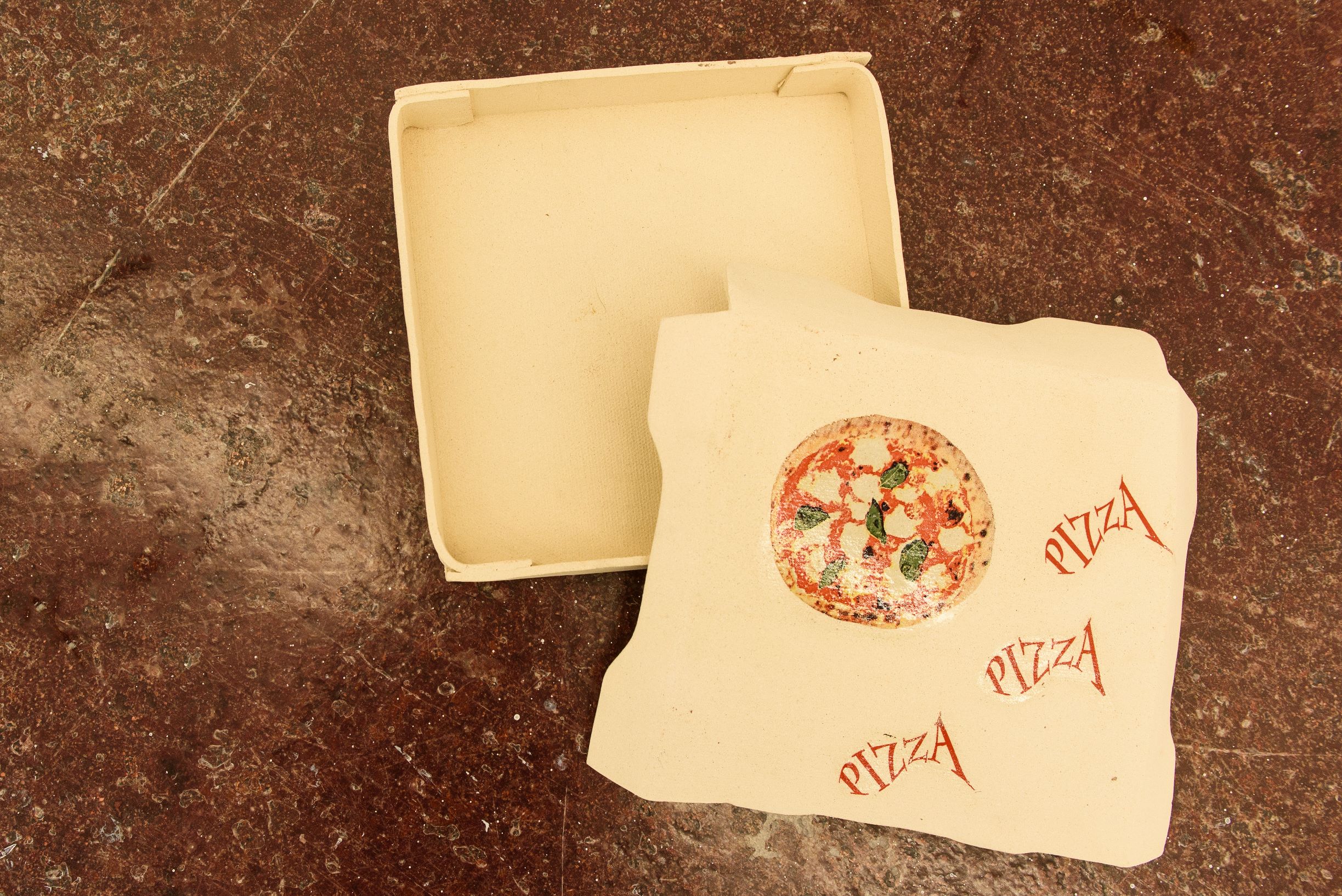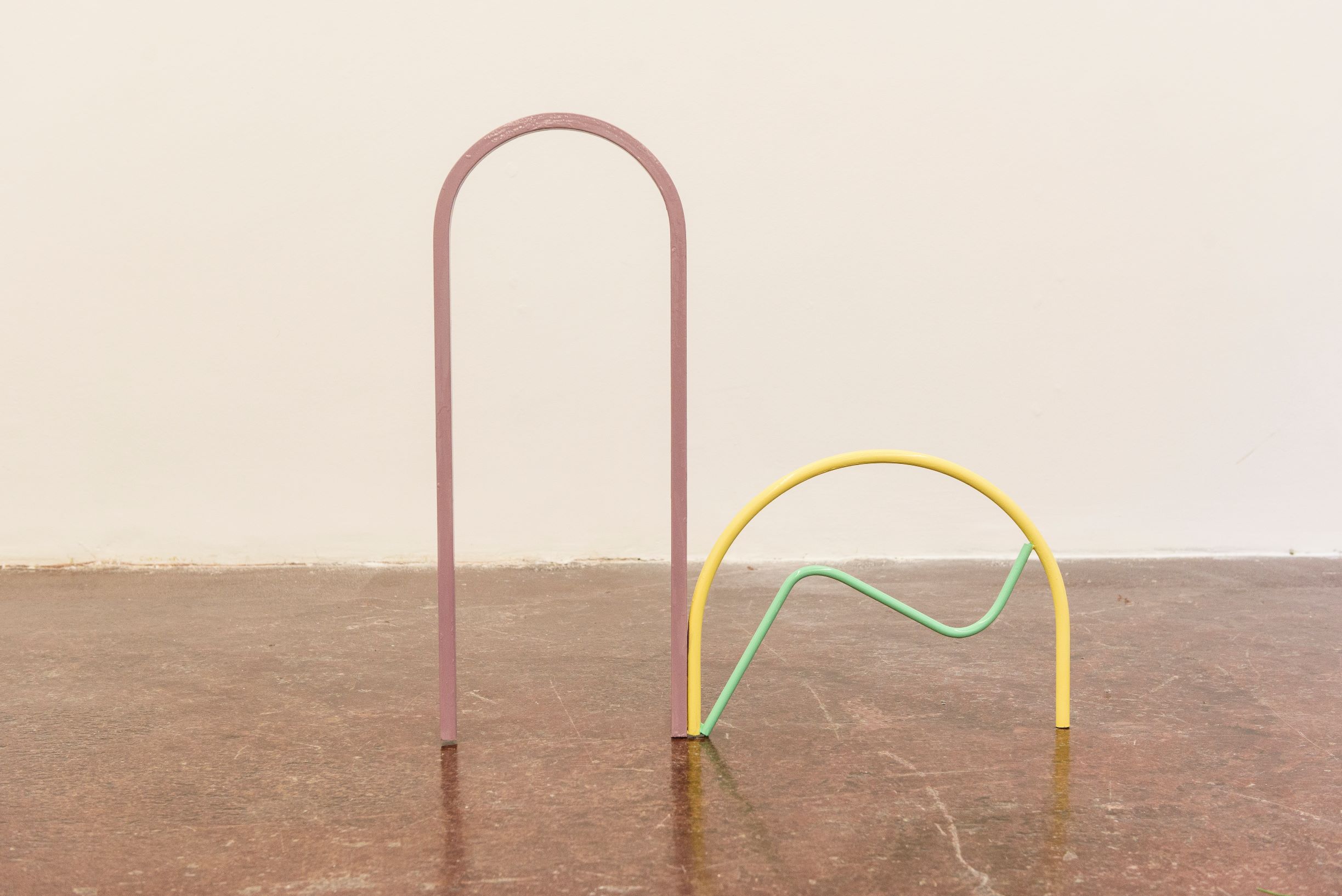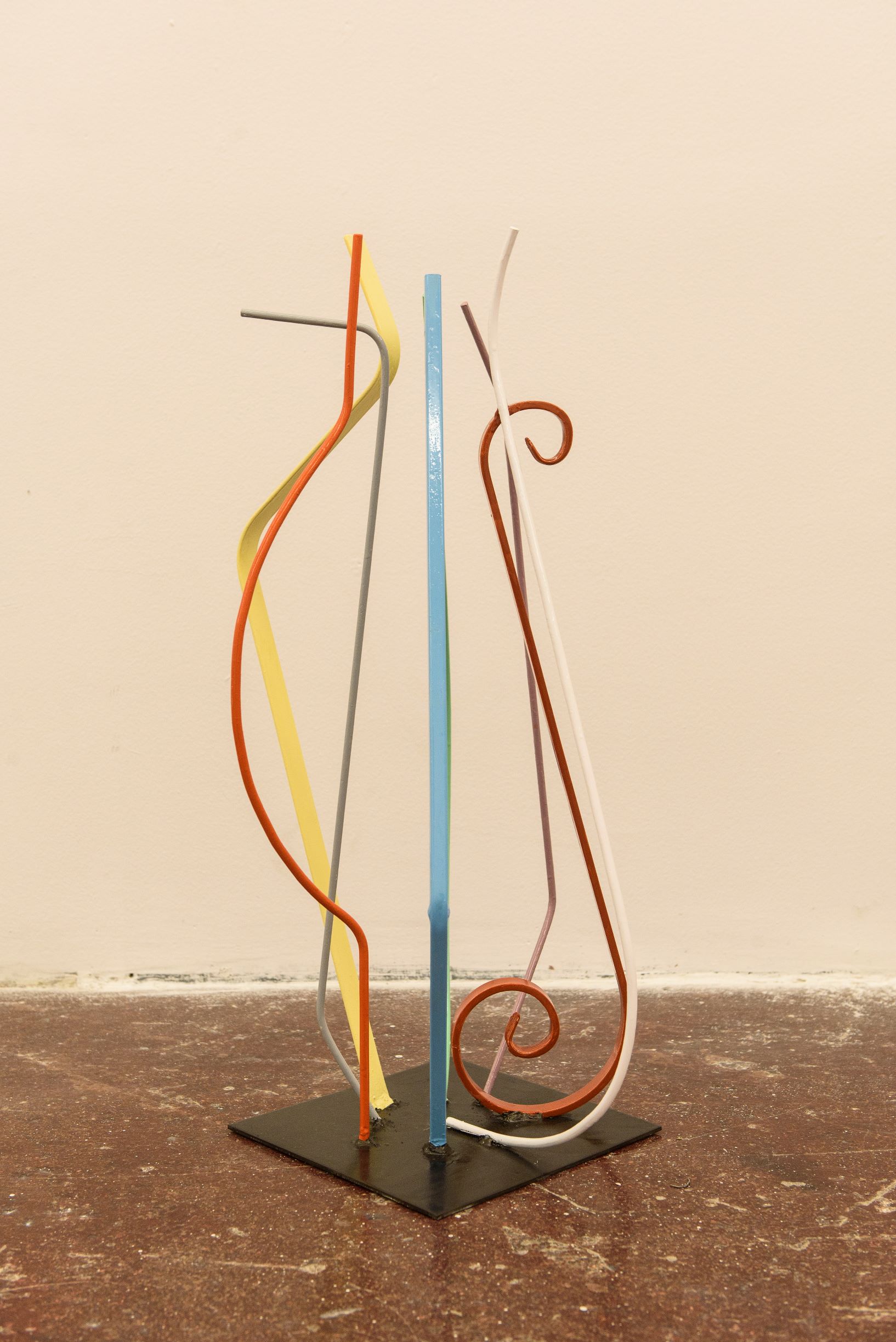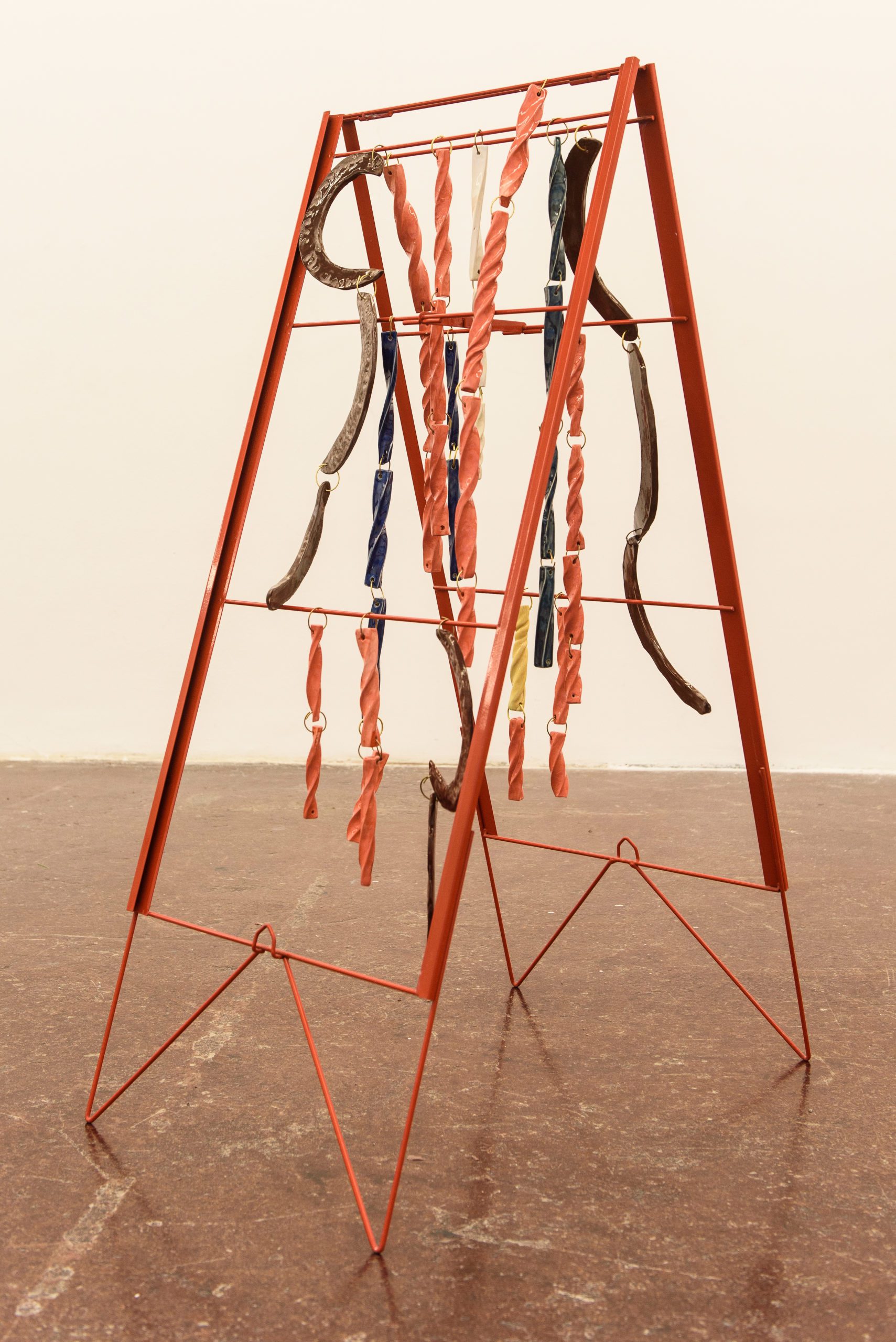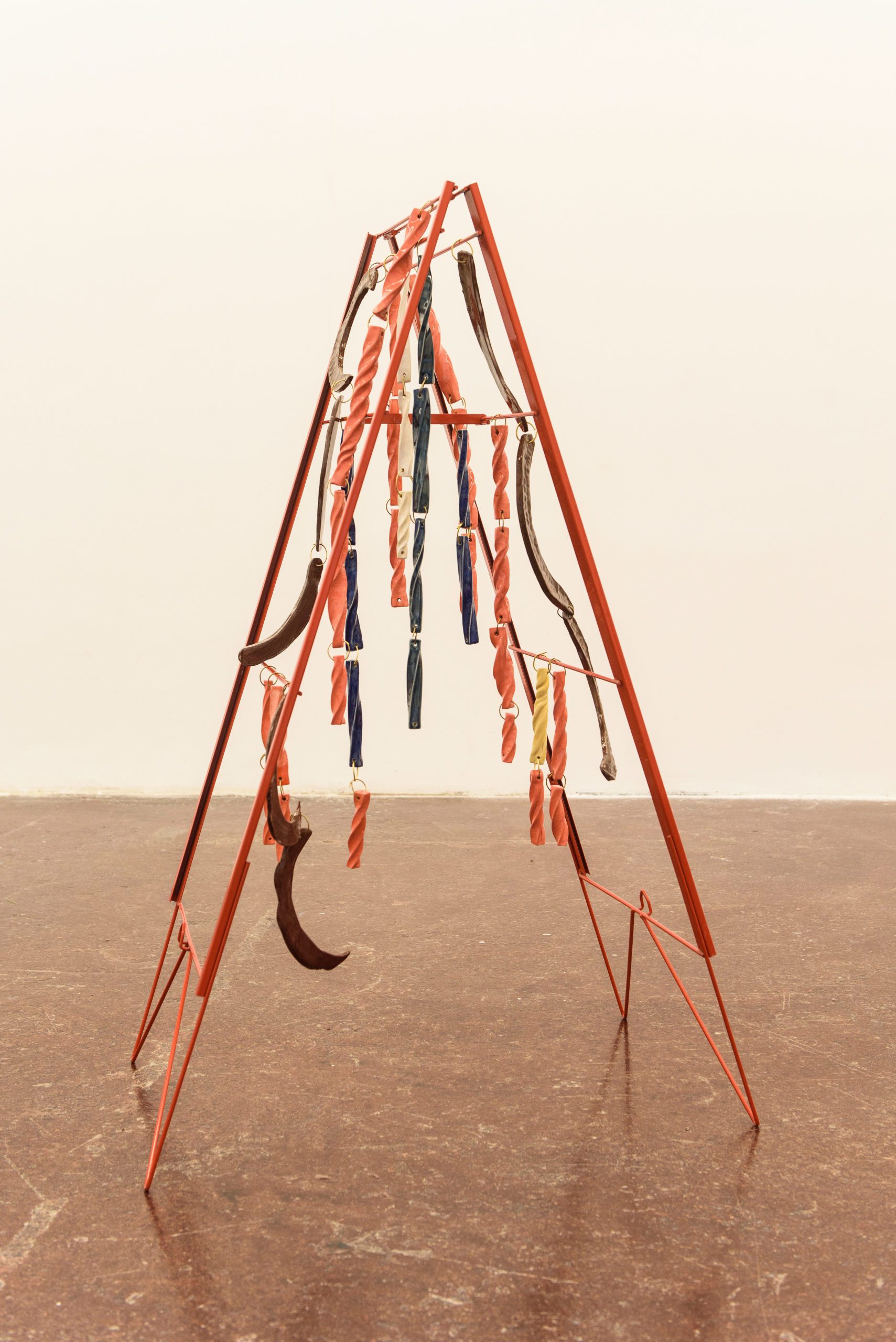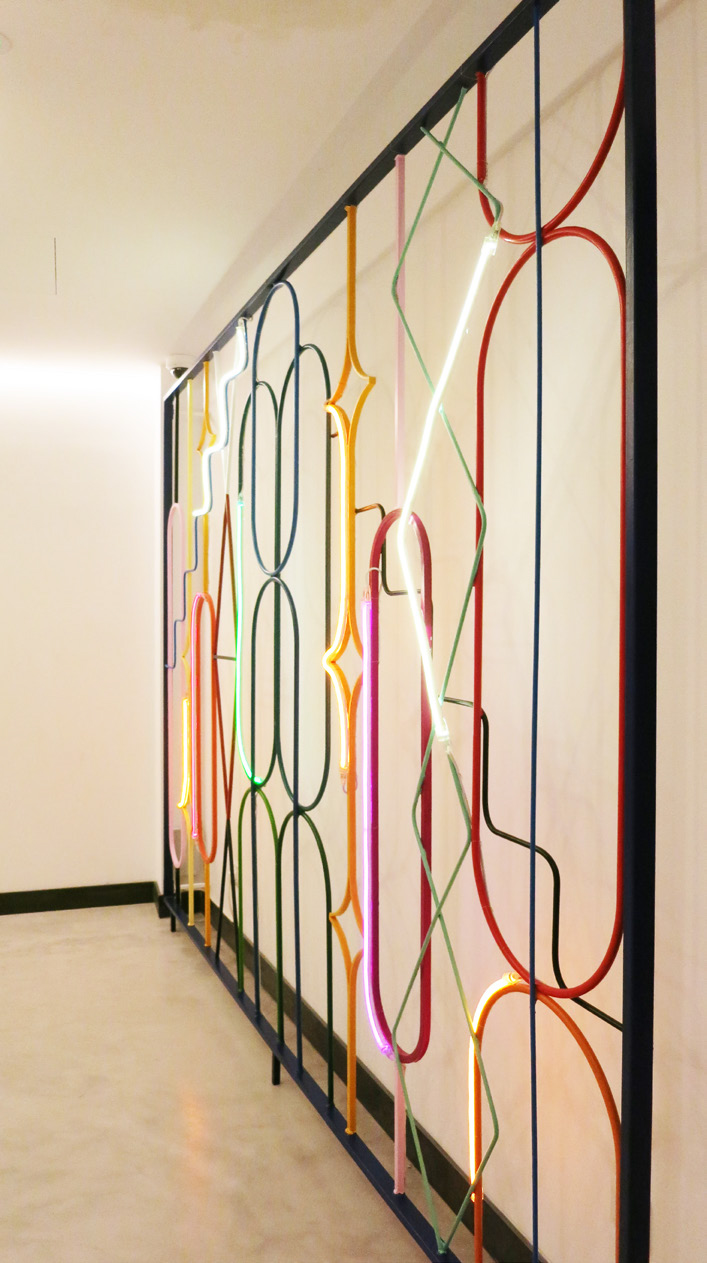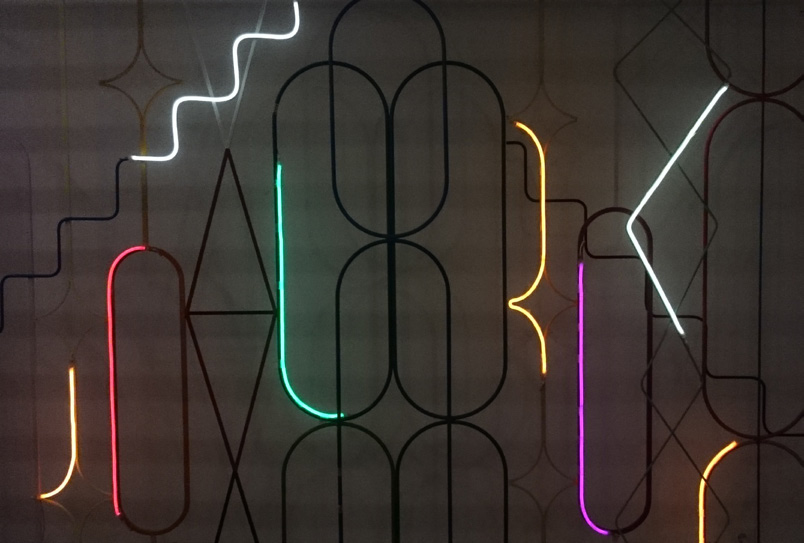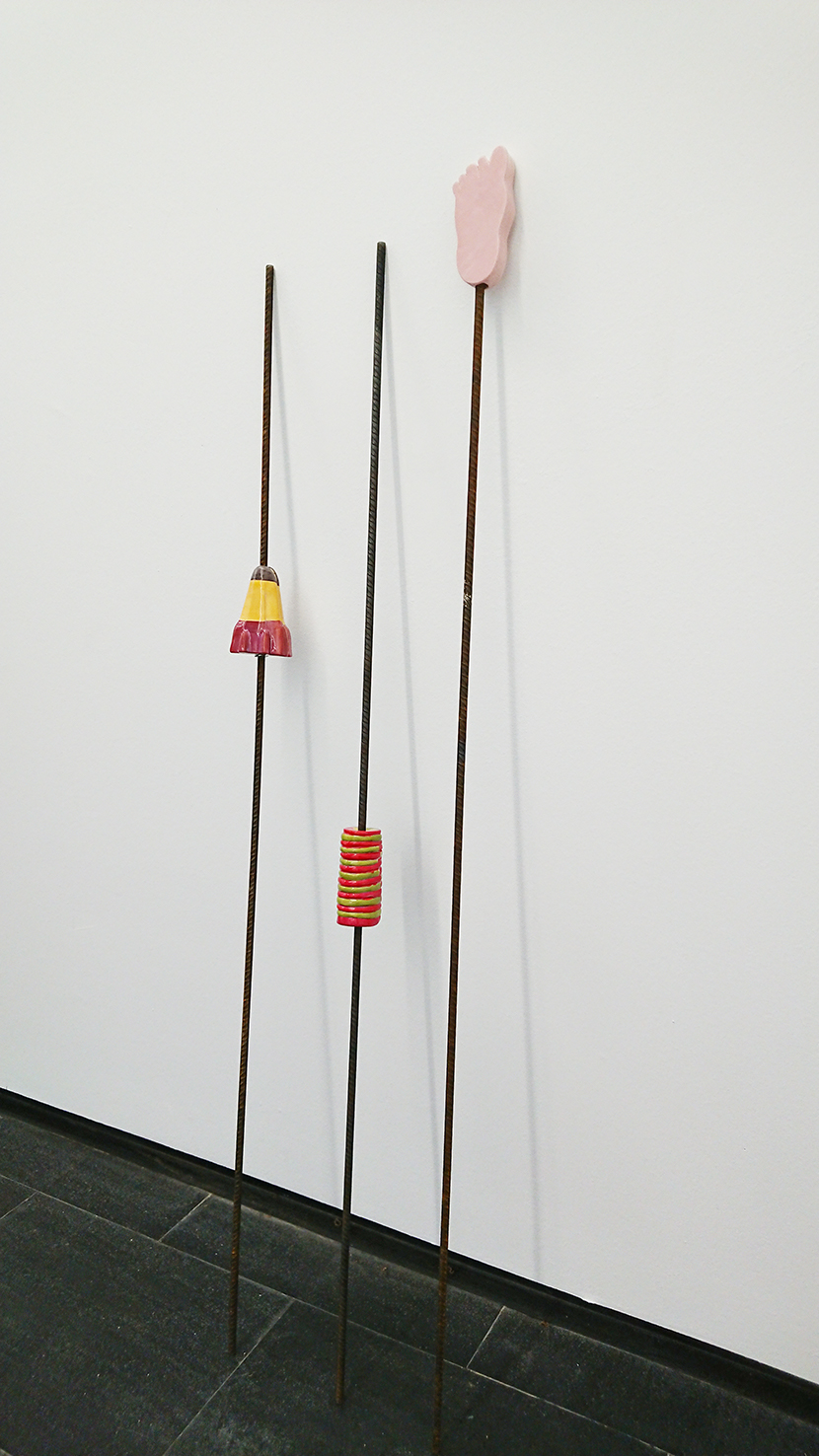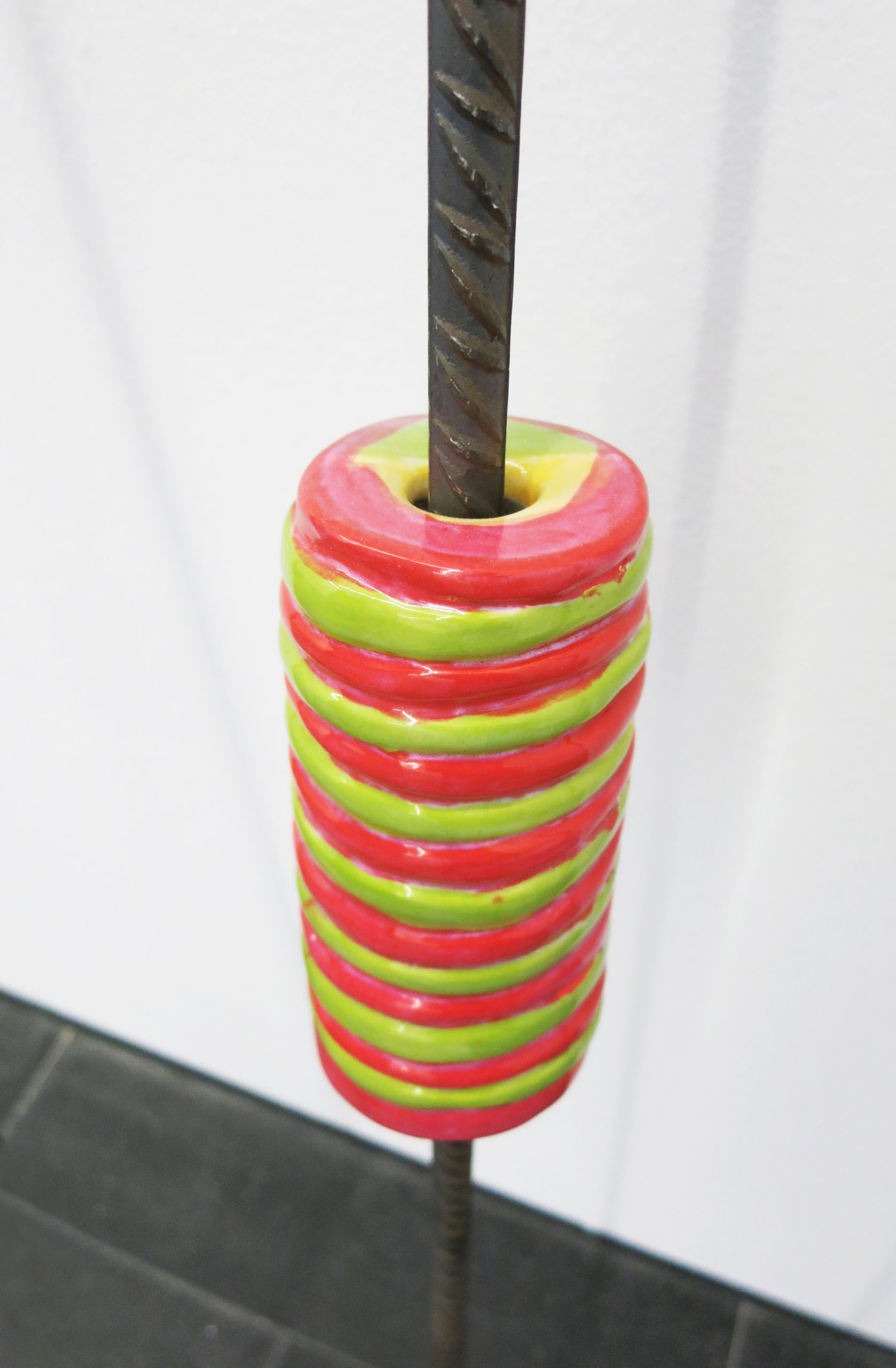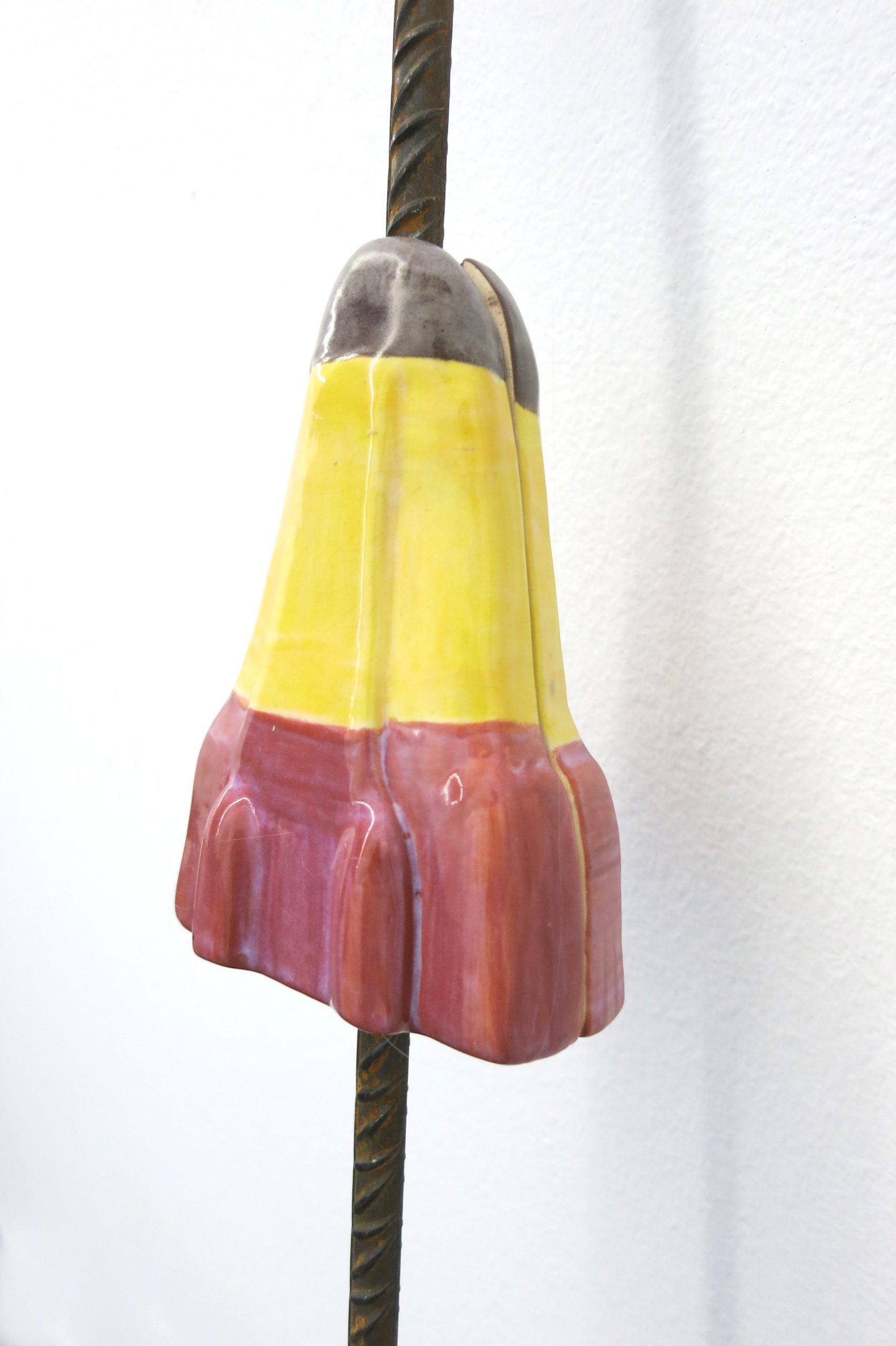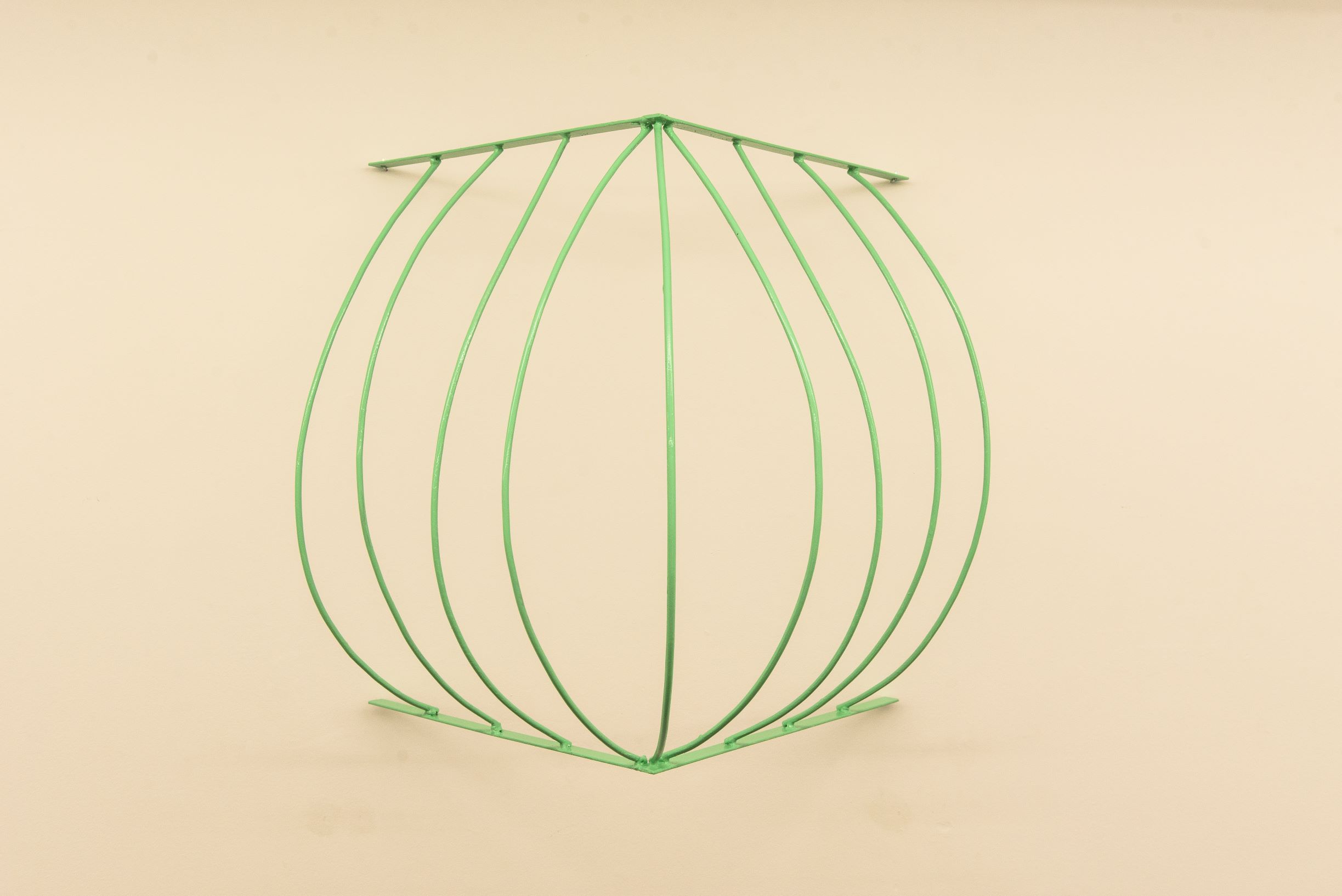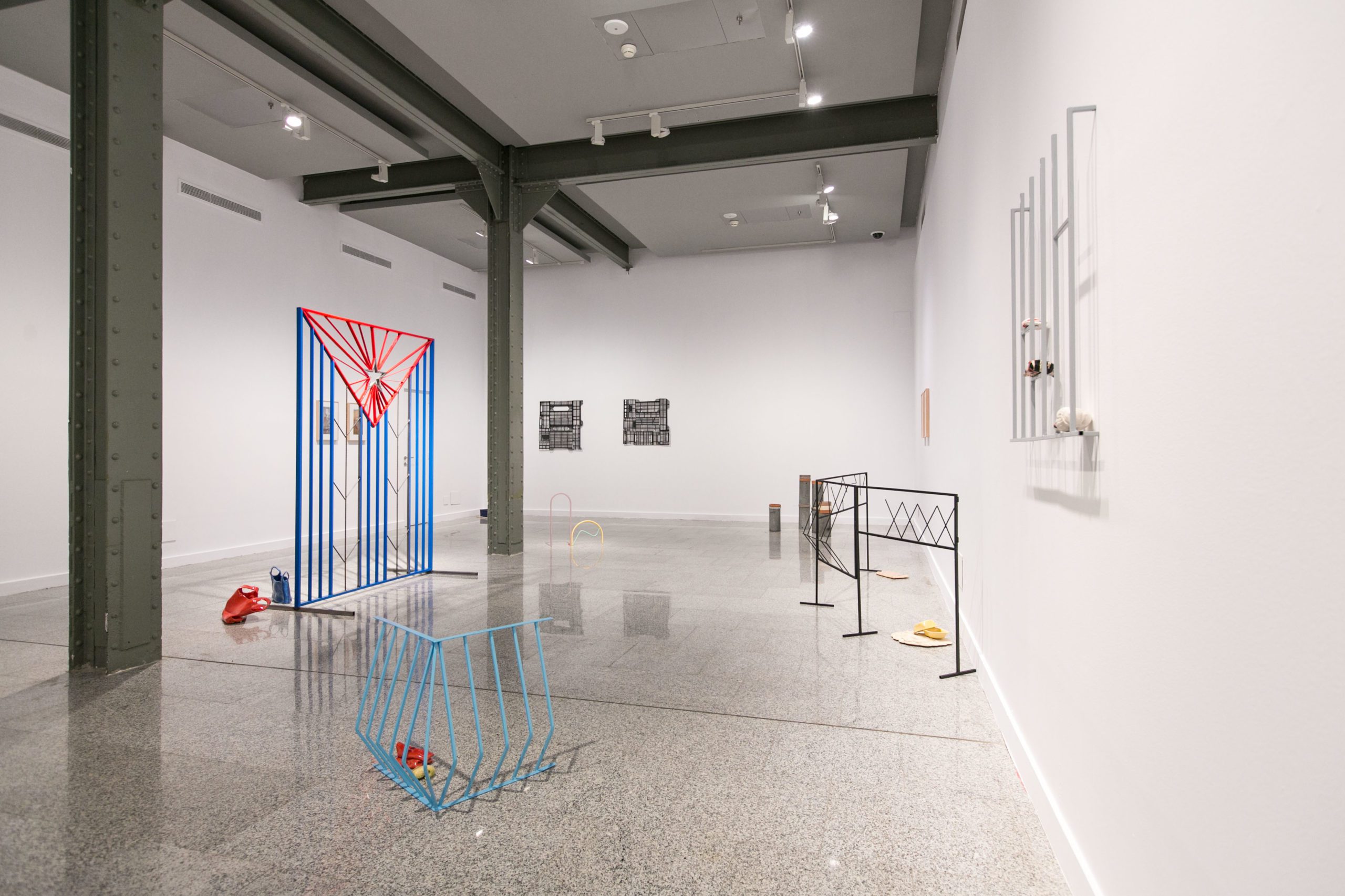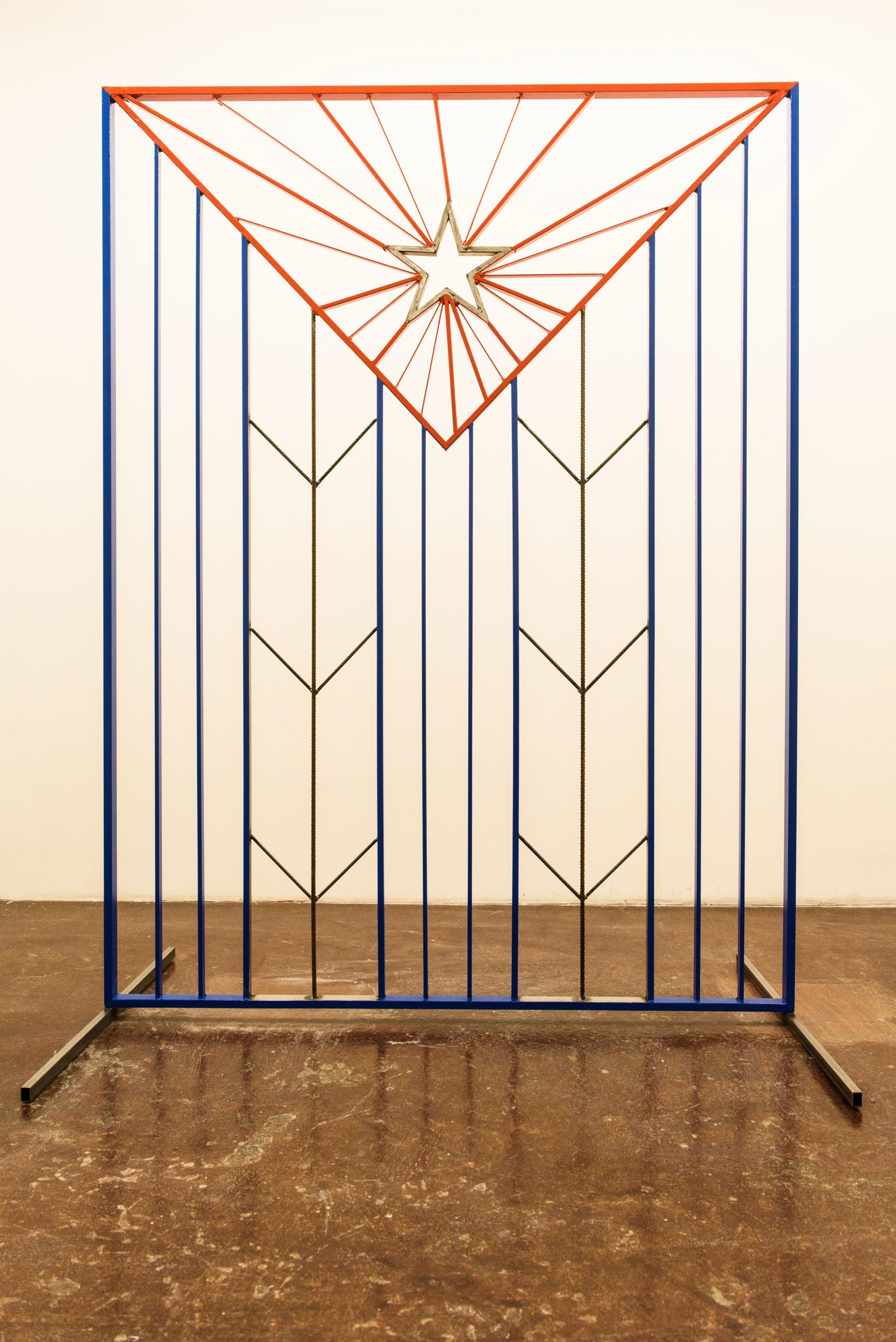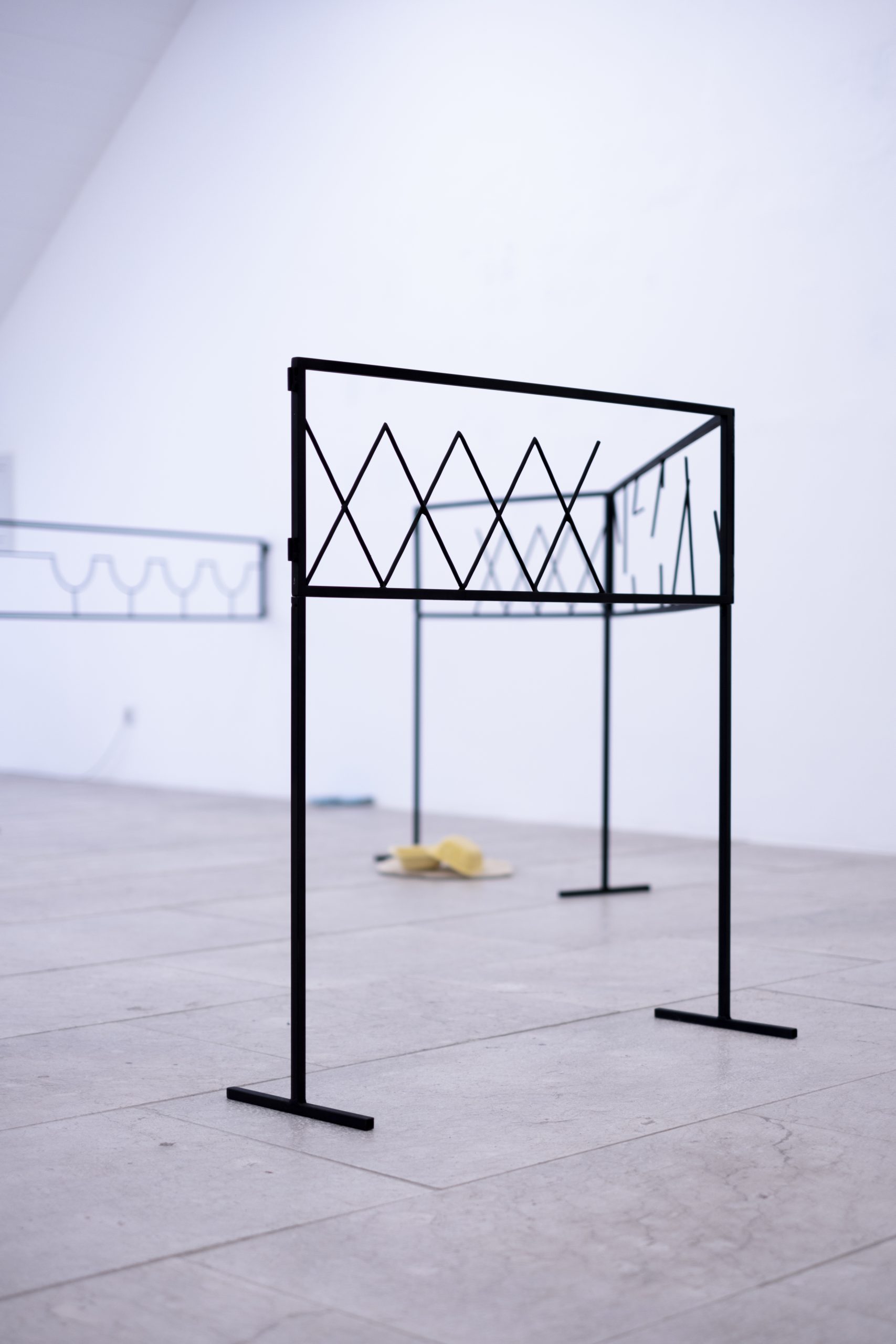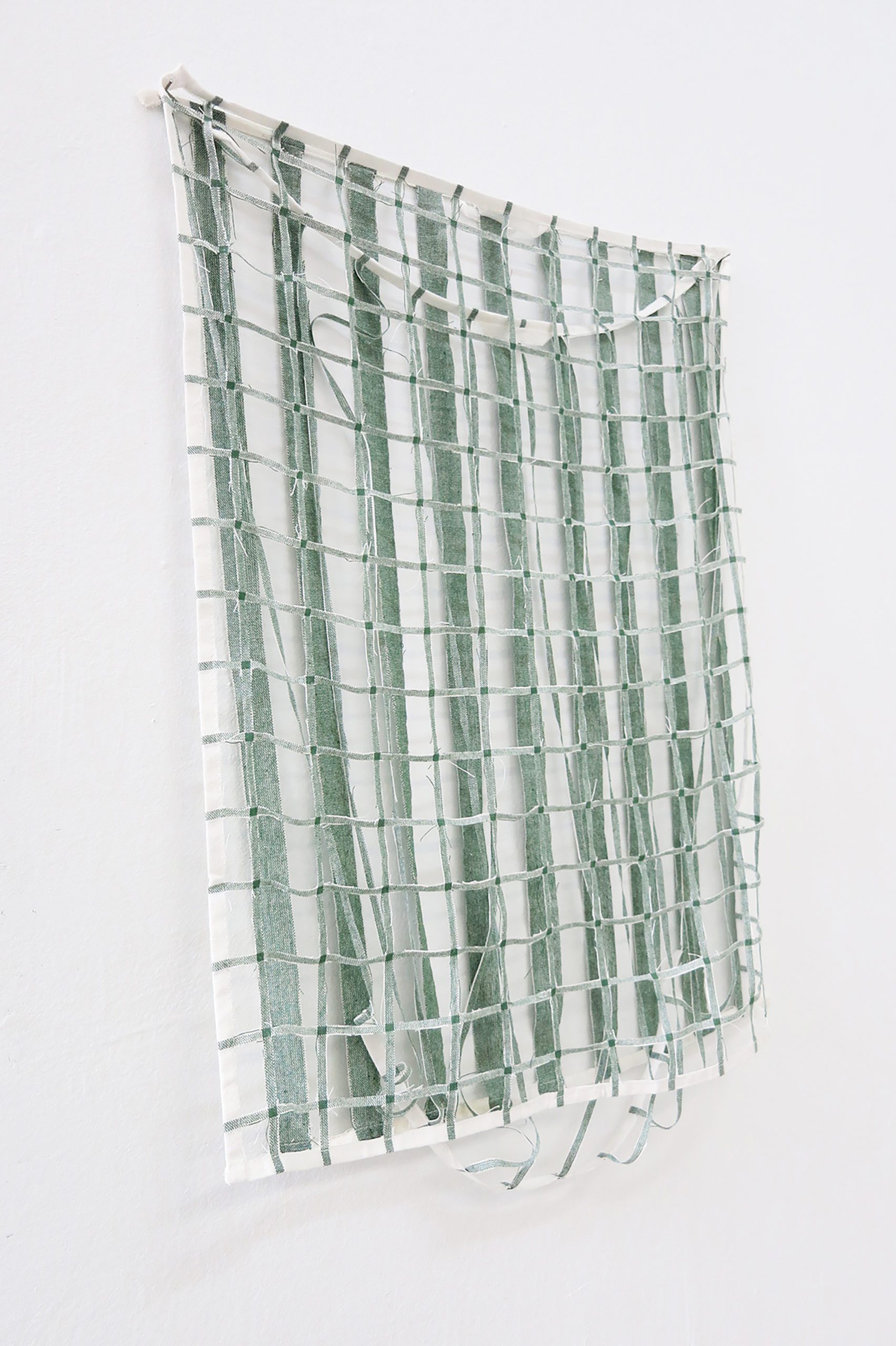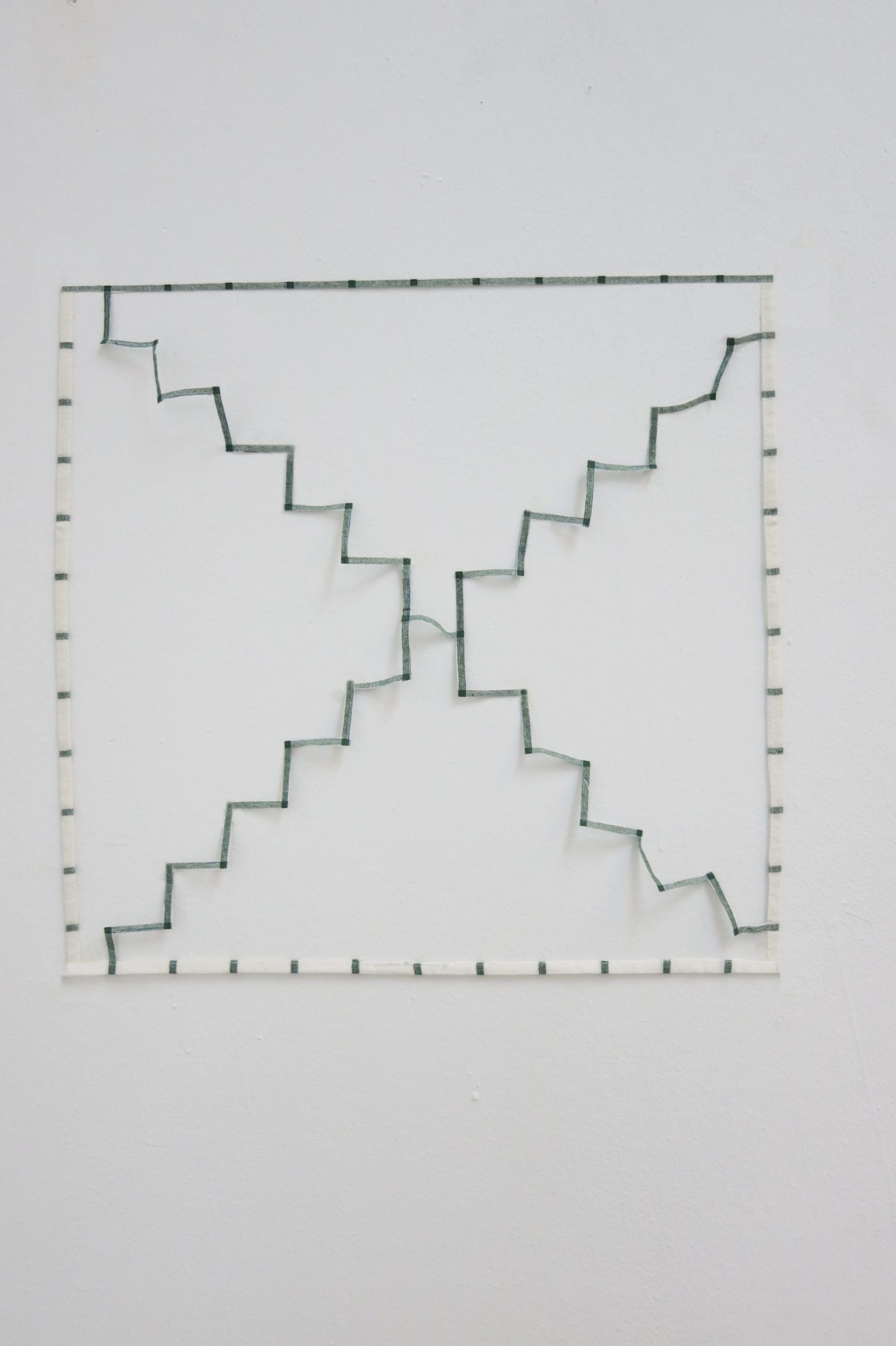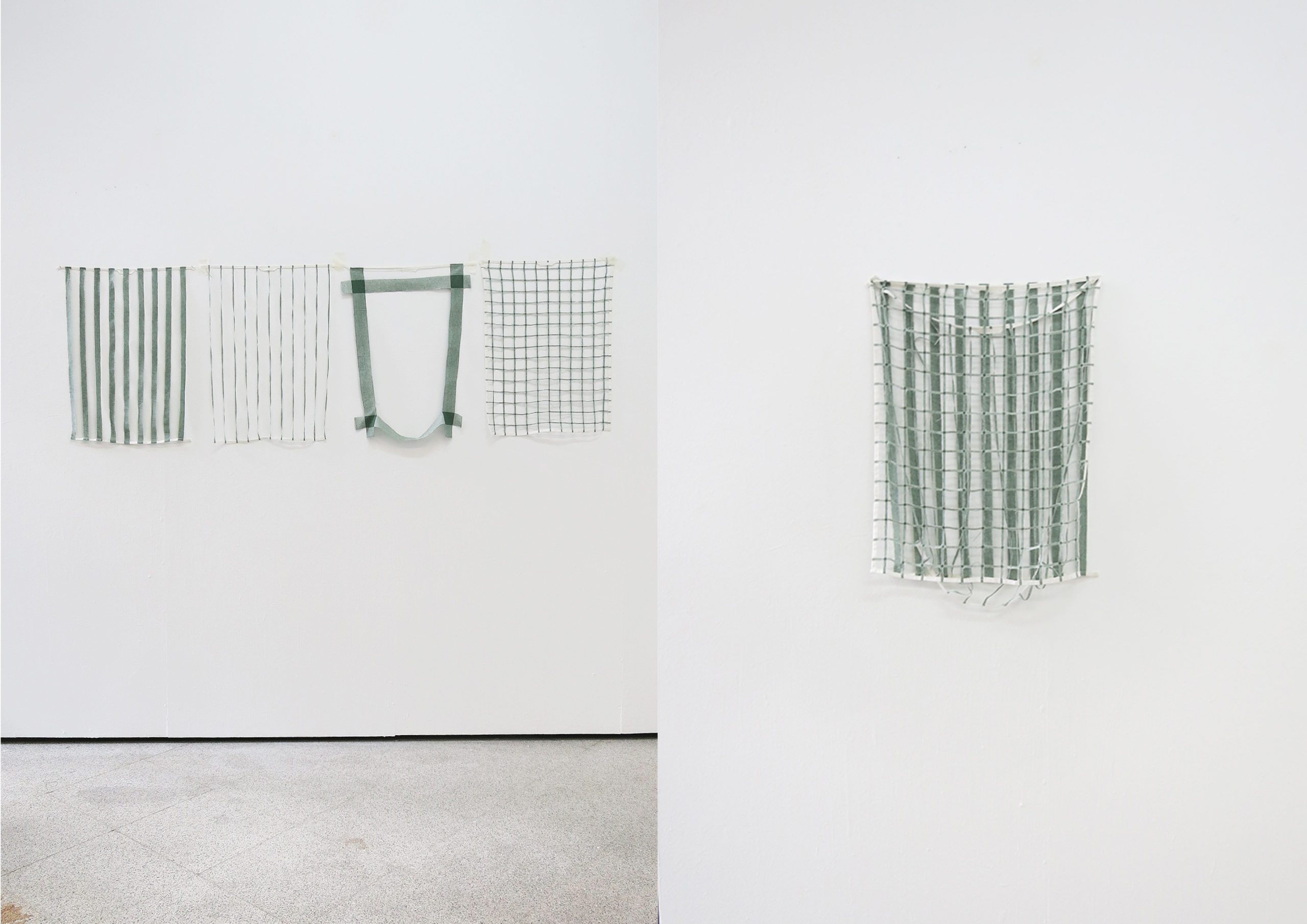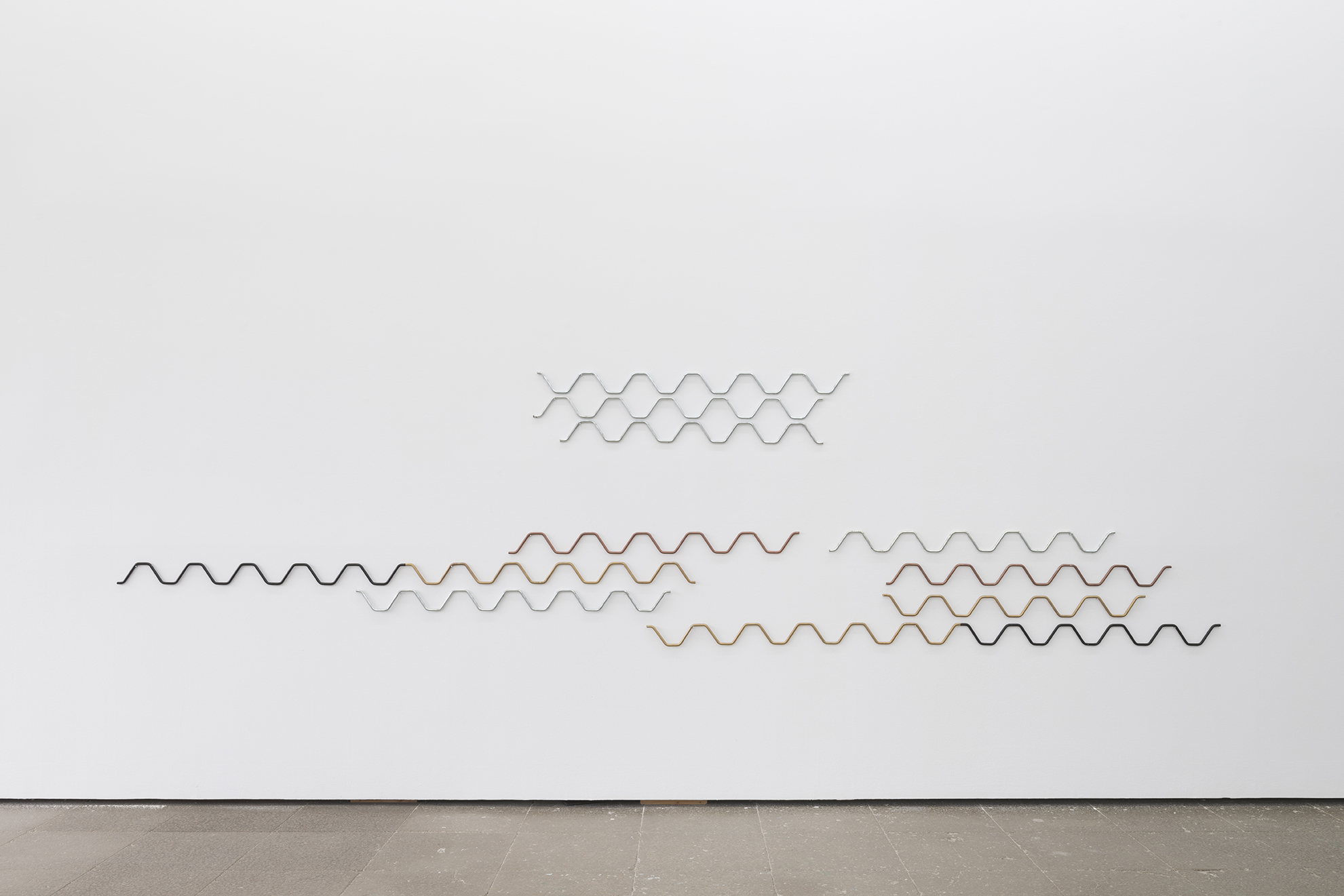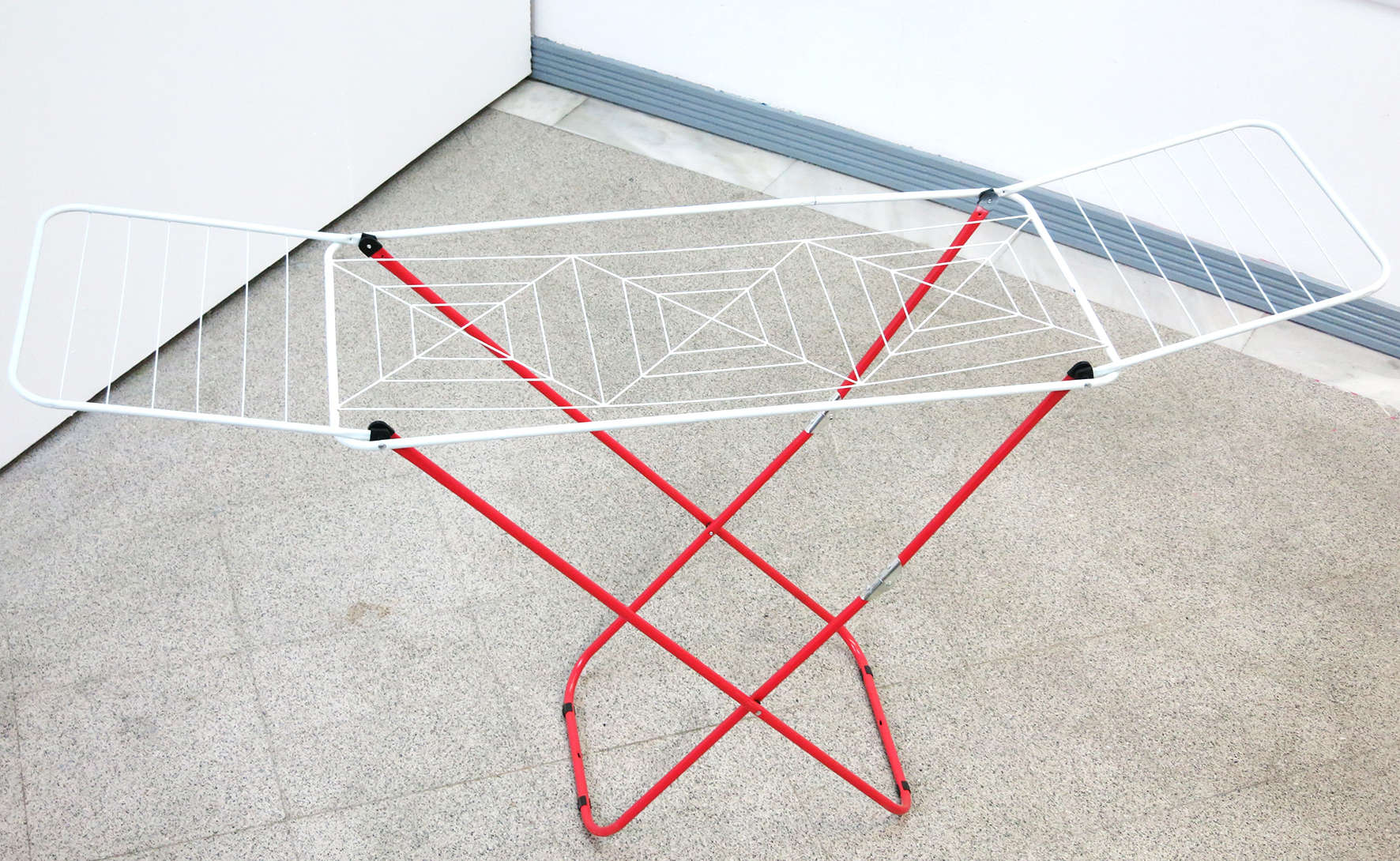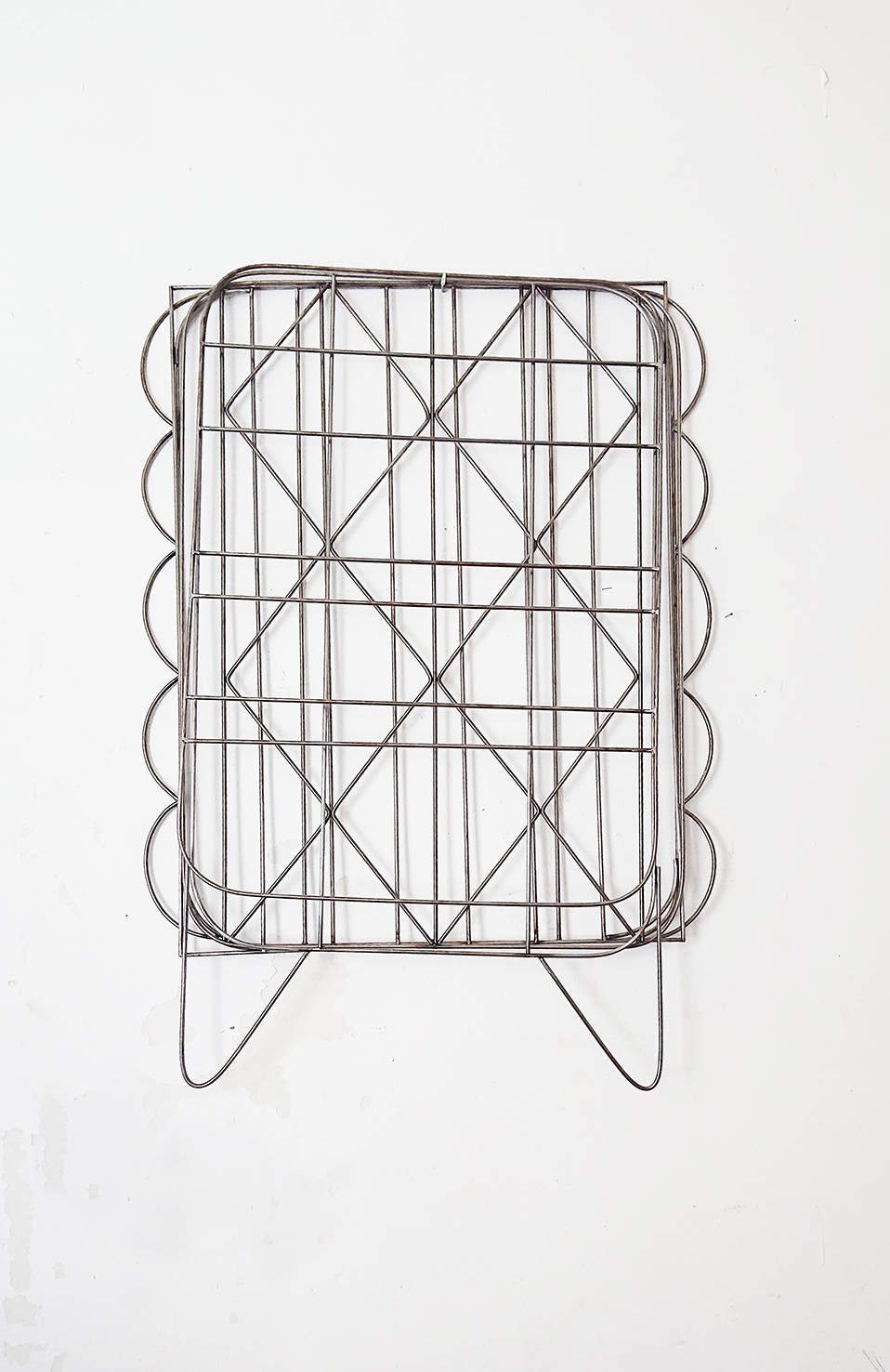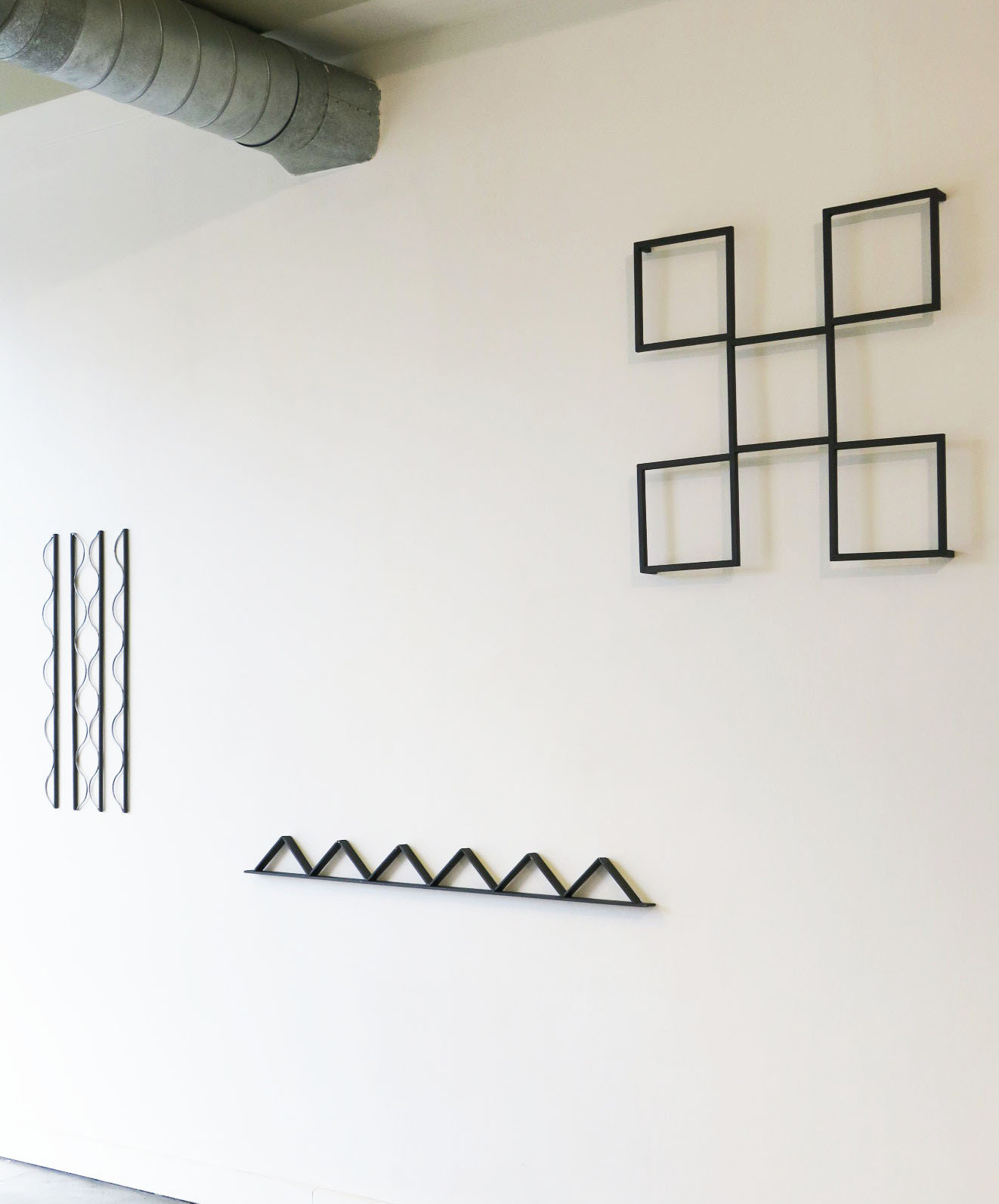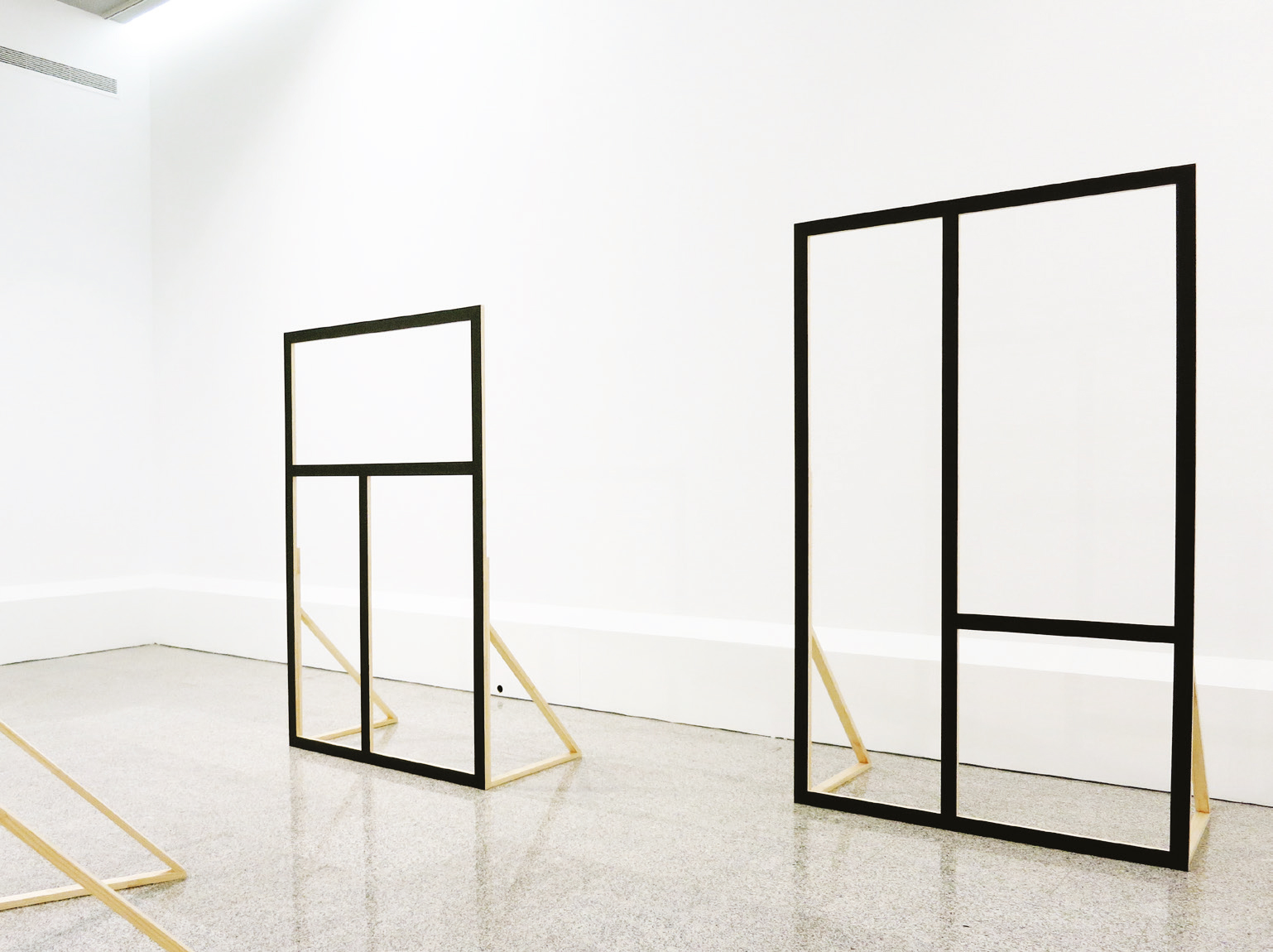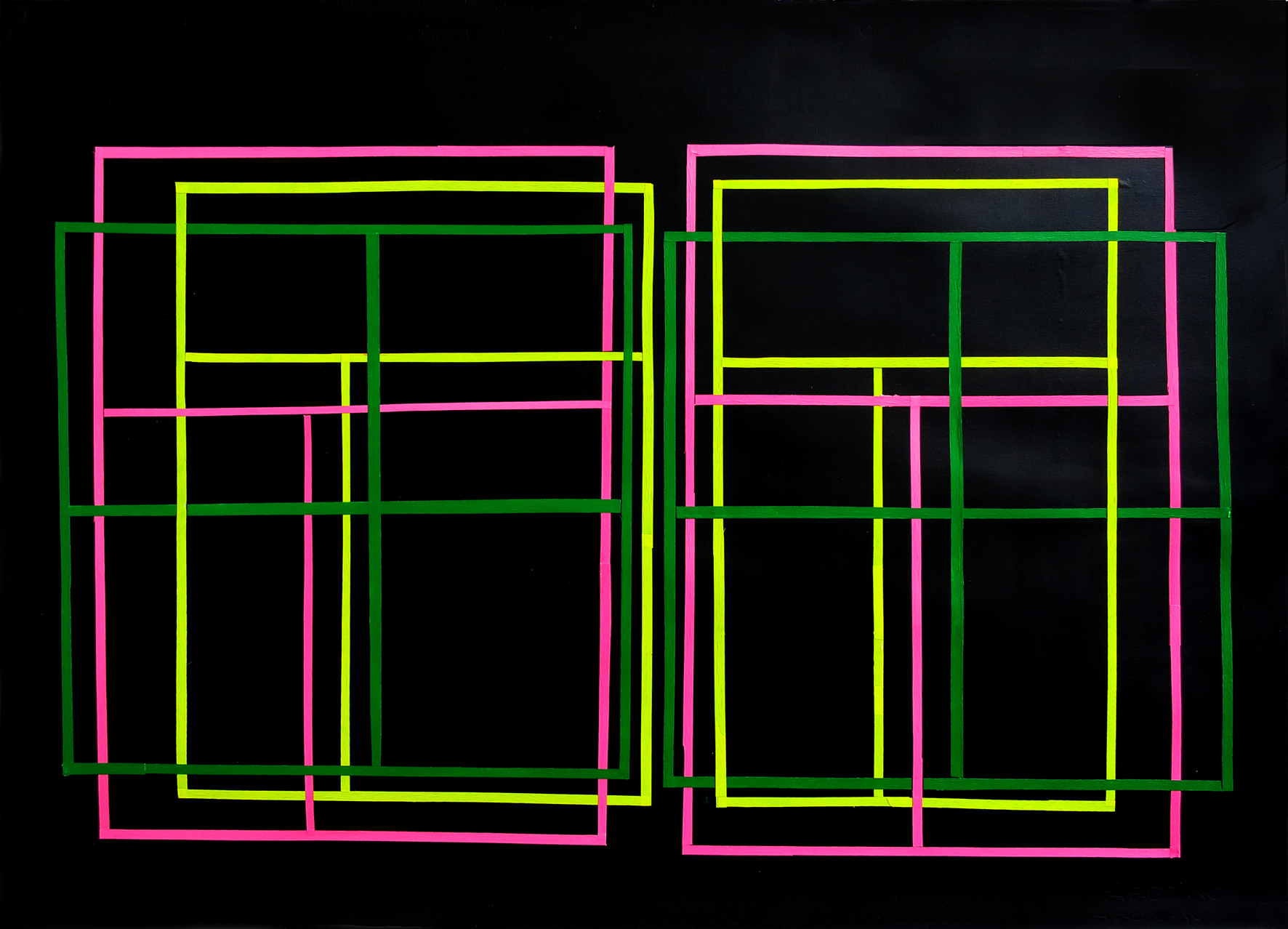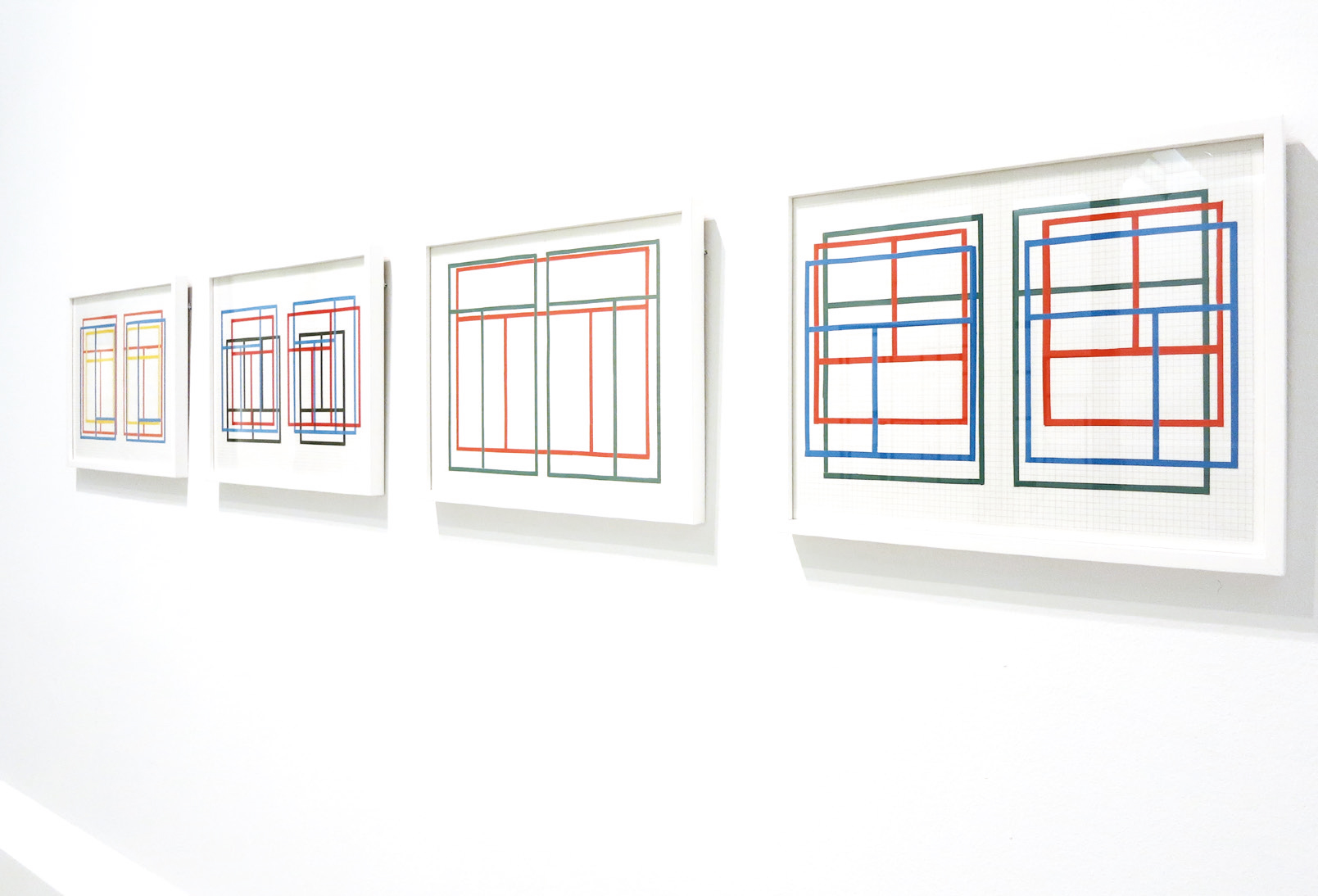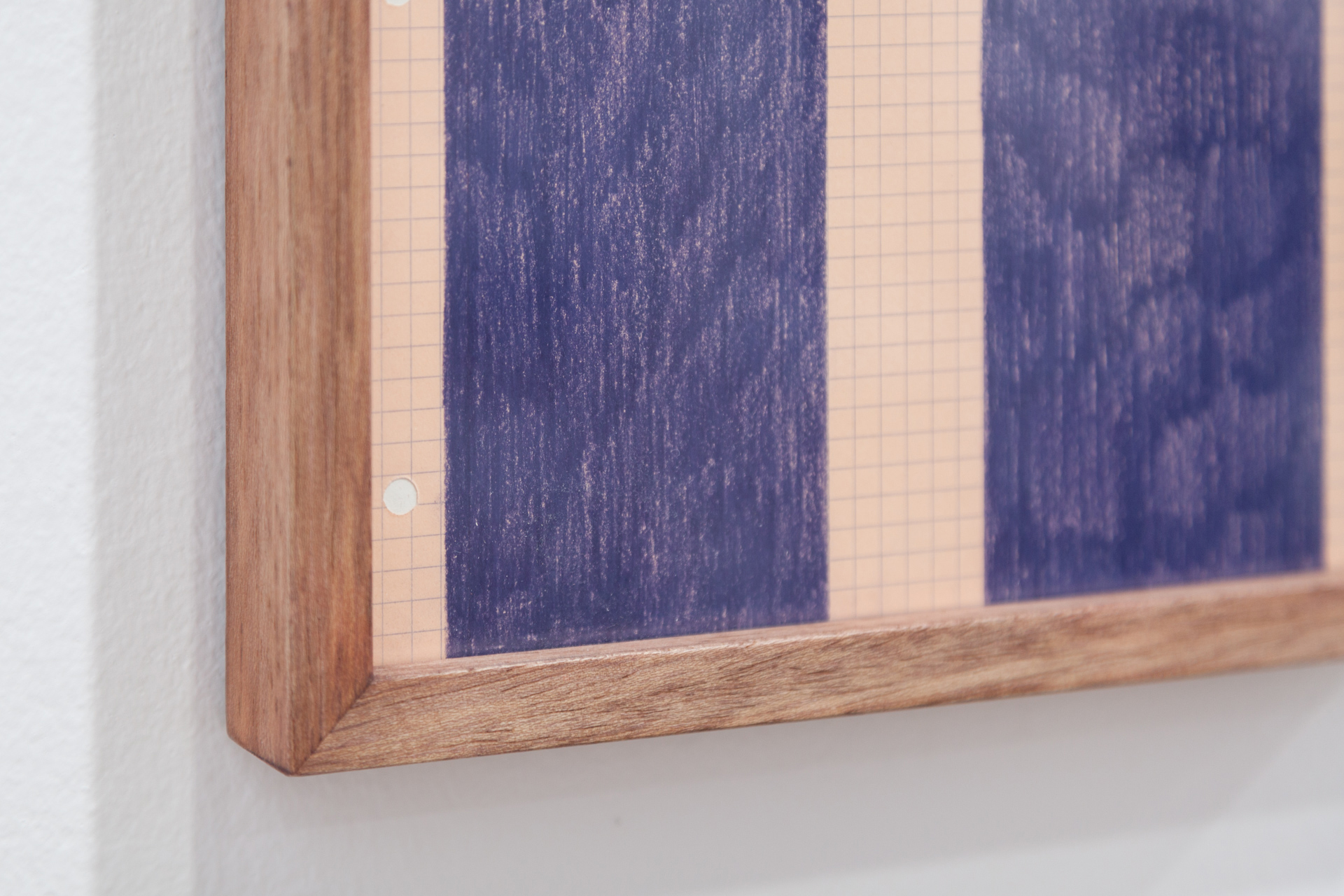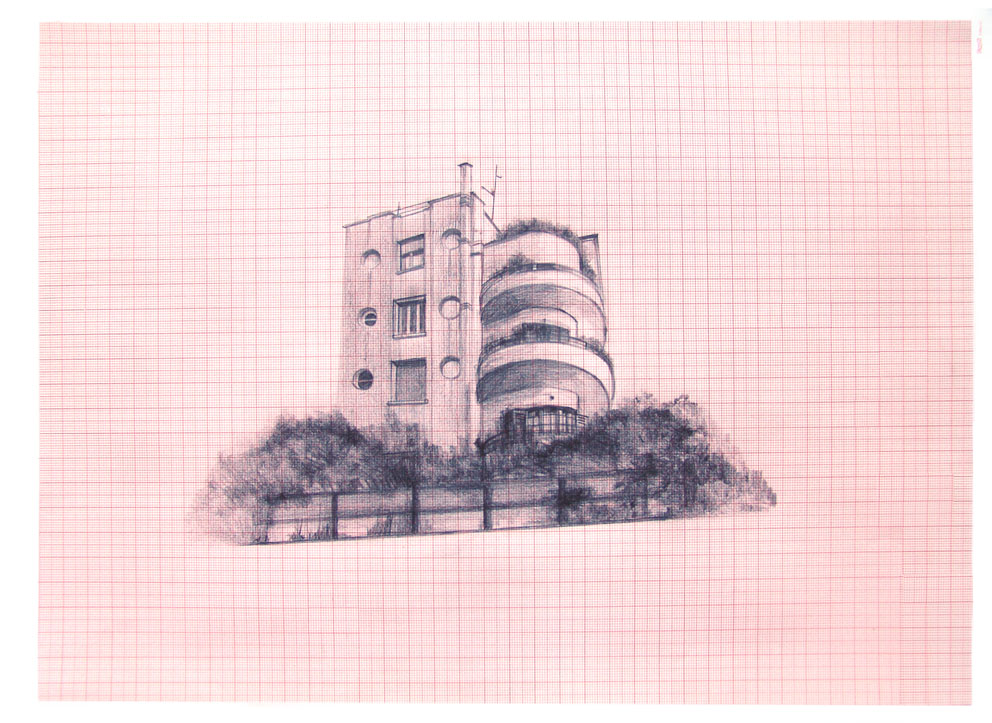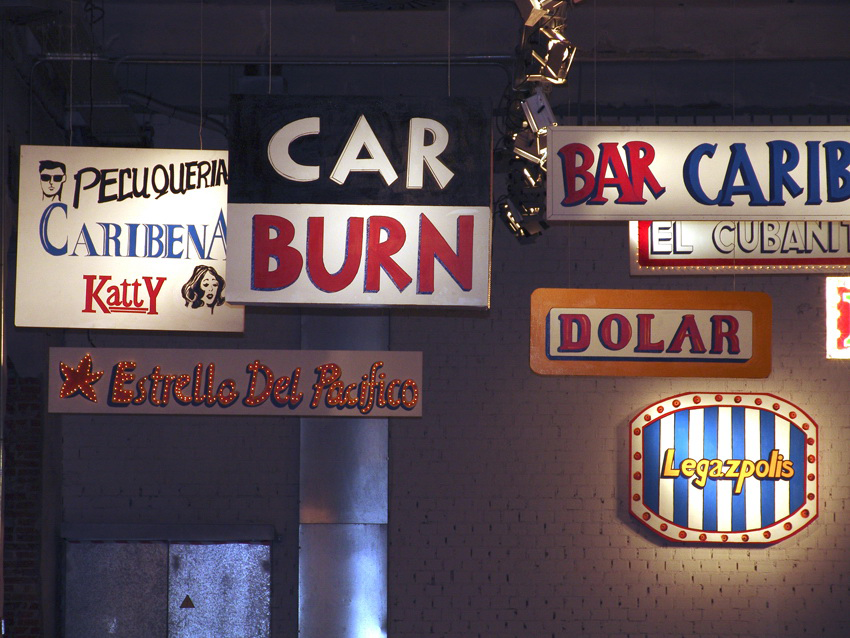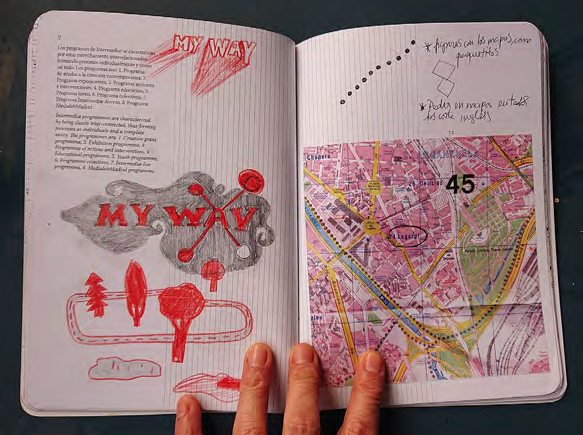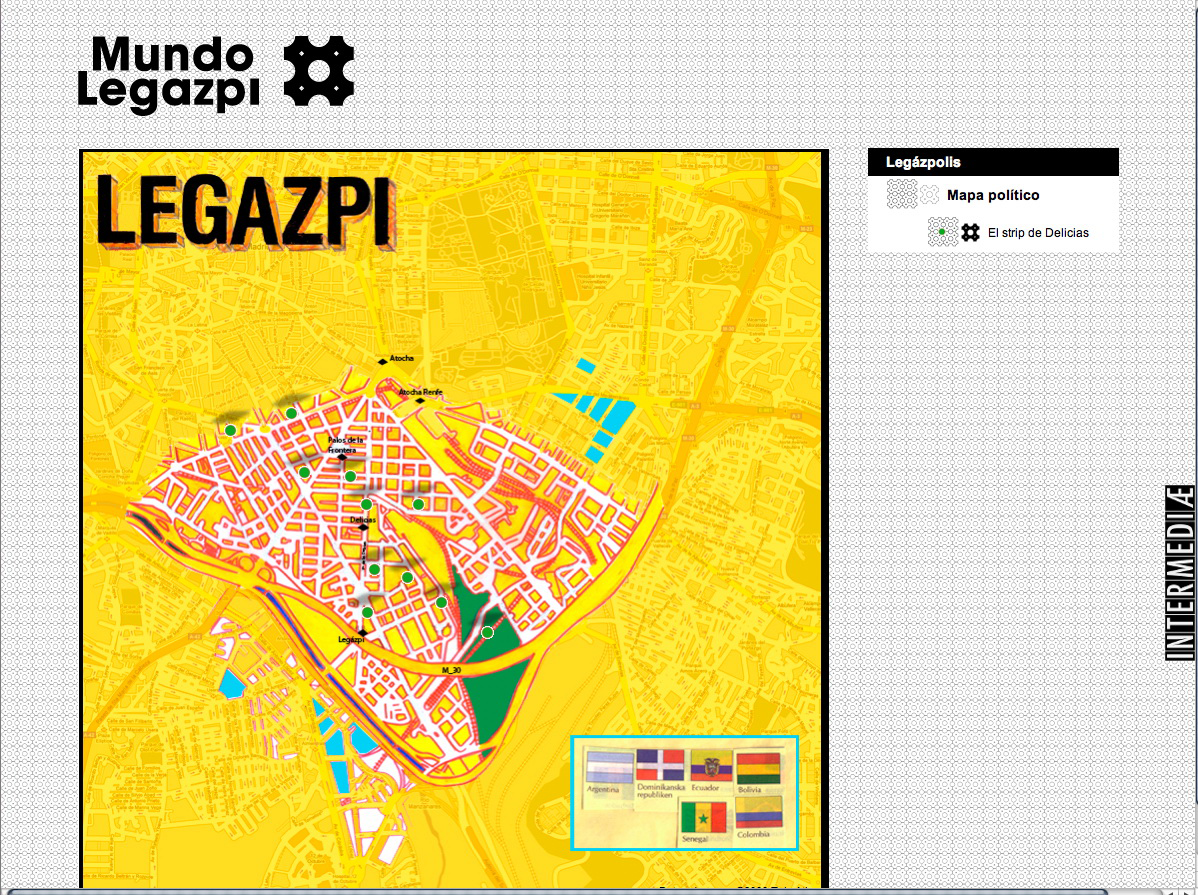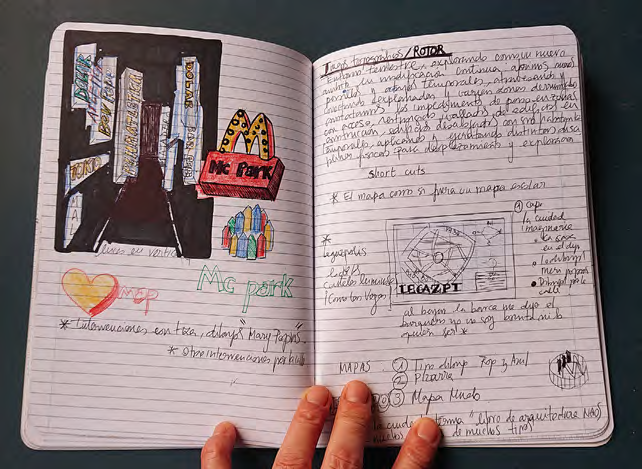ta.en
Tamara Arroyo
Spain, 1972
Tamara Arroyo’s body of work reflects a persistent inquiry into the habitability of spaces. She questions the «domestication» of the modern inhabitant and the consumption of certain formal elements and objects within contemporary living spaces. The autobiographical references in her work serve to articulate a discourse on both individual and collective memory.
Through her recurring engagement with images of the spaces she appropriates, the city and public space emerge as privileged settings of everyday life, marked by their distinctive identities and vast creative potential.
Through various formal approaches, her works explore how our surroundings and architecture influence us, distinguishing between lived, experiential, and existential spaces—those that operate on an unconscious level.
The artist emphasizes different intellectual states that arise in our relationship with our immediate environment, such as the emotional need for a sense of belonging to a place or the importance of peripheral vision, which integrates us into space. The latter allows us to notice details and situations that might otherwise go unnoticed, shifting us from mere spectators to active recipients of new stimuli.
She has exhibited at institutions such as Museo Centro de Arte Dos de Mayo, La Casa Encendida, Matadero Madrid Centro de Creación Contemporánea, CentroCentro, Es Baluard Museu, the Royal Academy of Spain in Rome, and the Instituto Valenciano de Arte Moderno, among others.
Her work is part of the collections of Museo Nacional Centro de Arte Reina Sofía, Centro de Arte Dos de Mayo, Museo de Arte Contemporáneo de Madrid, Colección DKV, and Colección Banco Sabadell.
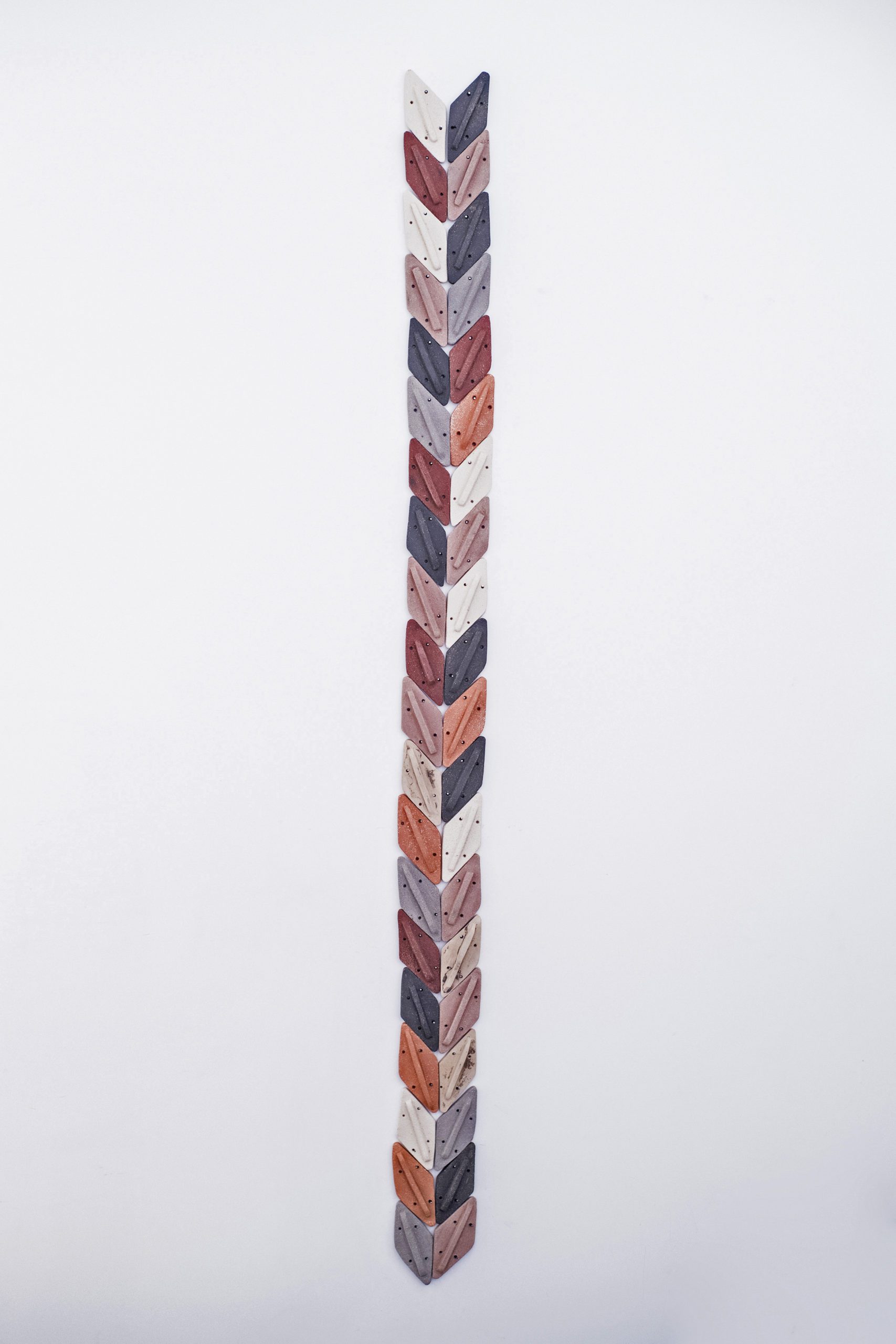
Tamara Arroyo
Pared maciza como fondo para elementos ornamentales
2023
Stoneware ceramic
157 x 11 x 2 cm
Tamara Arroyo. La sustancia del ser. El apartamento, Madrid, 2024
Tamara Arroyo
Un fatal descontento de lugar
NF/NIEVES FERNANDEZ. 2023
Un fatal descontento de lugar [A Fatal Discontent with Place] is Tamara Arroyo’s second solo exhibition at NF/NIEVES FERNÁNDEZ. The show presents previously unseen yet significant pieces within the artist’s trajectory—ideas that remained on the margins of past projects and needed to take shape. Some of these works directly stem from previous commissioned pieces created for public spaces.
The exhibition’s title is drawn from a concept described by Jane Jacobs in her book The Death and Life of Great American Cities, which, in its strange or awkward translation, proves highly fitting here: A Fatal Discontent with Place. Jacobs reflects on the contradictions between monofunctional urban policies and the multiple uses of the city, advocating for an urban life that ensures certain freedoms and choices.
Tamara Arroyo’s practice is rooted in her own experiences as a city dweller. She explores this both literally—by salvaging found objects from her walks and decontextualizing them within her works—and poetically and subjectively, through references to her personal experiences, her time in Havana, or the way light filters through the street furniture in her neighborhood, for example.
By recreating devices of order and separation, Tamara Arroyo speaks of identity, individuality, and freedom. Through her exploration of ornamentation, tiling, craftsmanship, and wrought ironwork—elements still present in working-class neighborhoods and social housing—she seeks to reclaim the diversity that capitalism erases.
This exhibition is a playground, a scaled representation of the city. It is a stage that demands effort and adaptation from the visitor, compelling them to reflect on their own experience within the complex and ever-changing urban environment. Ultimately, it is an assertion of personal identity—a manifesto for diversity in uncertain times.
Tamara Arroyo
De la serie Un fatal descontento de lugar 1
2023
Iron
127 x 53 cm (left)
87 x 70 cm (middle)
134 x 63 cm (right)
Tamara Arroyo. Un fatal descontento de lugar. NF/NIEVES FERNANDEZ, Madrid. 2023
Studio visit. 2025
Tamara Arroyo
Mezcolanza
2023
Enamelled iron
97 x 120 x 40 cm
Tamara Arroyo. Encuentro con el objeto. Escultura contemporánea. Red Itiner, Madrid, 2024
Tamara Arroyo
Pata de banco
2019-23
Iron, ceramic, stones, cement
60 x 57 x 21 cm
Tamara Arroyo. Un fatal descontento de lugar. NF/NIEVES FERNANDEZ, Madrid. 2023
Tamara Arroyo
Palmera
2017-2023
Iron and enamel
146 x 96 x 36 cm
Tamara Arroyo
Untitled
2019-23
Enamelled iron, stoneware
97 x 140 x 30 cm
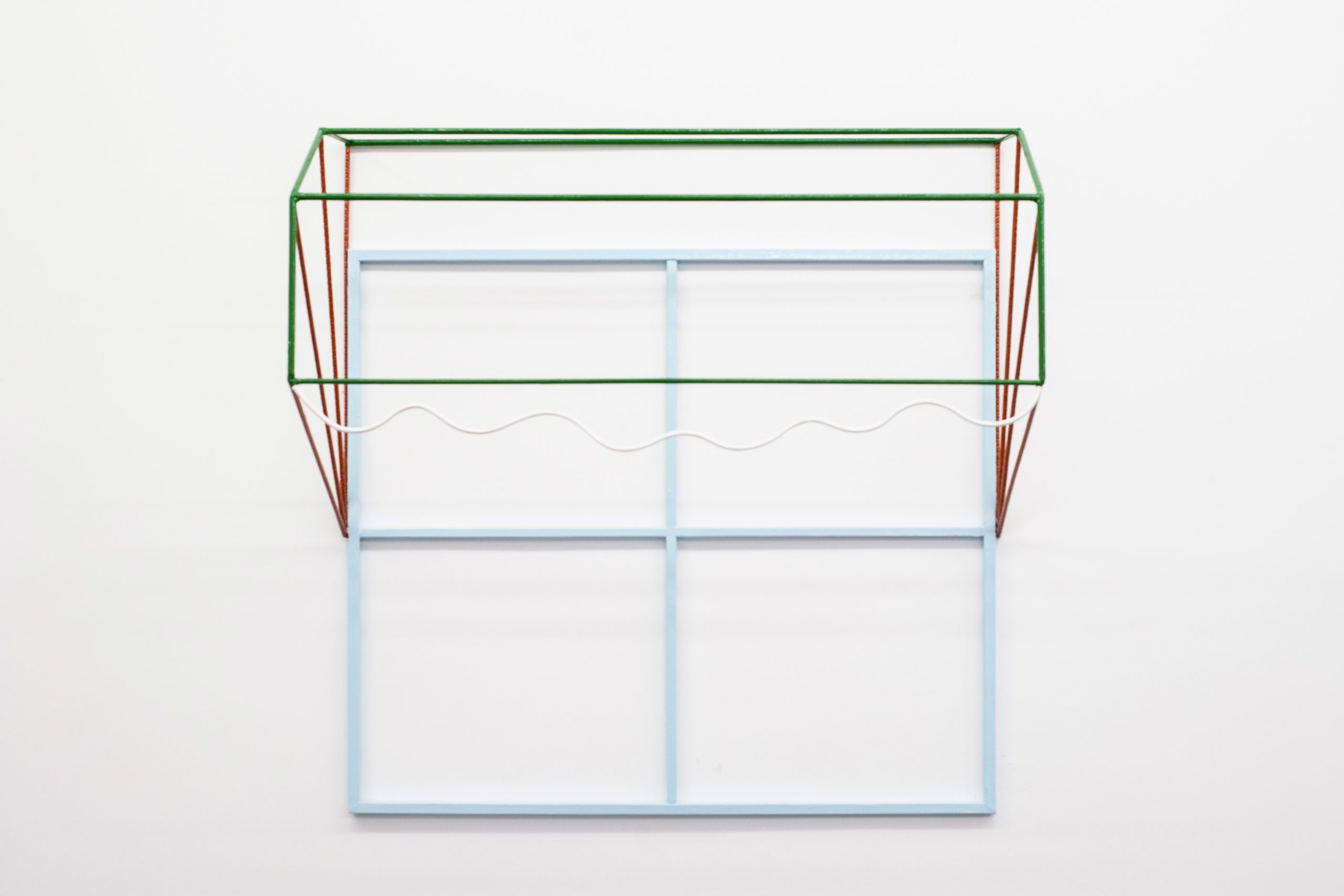
Tamara Arroyo
Condición urbana
2023
Enamelled iron
85 x 81 x 43 cm
Tamara Arroyo. Pura calle. NF/NIEVES FERNANDEZ. 2019
Tamara Arroyo
Ciclo vital
2023
Iron, enamel, stoneware ceramic
122 x 188 x 22 cm
Tamara Arroyo. Un fatal descontento de lugar. NF/NIEVES FERNANDEZ, Madrid. 2023
Tamara Arroyo
De la misma condición
2023
Enamelled iron and found tiles with enamel and varnish
75 x 95 x 3 cm (window) y 21 x 95 x 4 cm (shelf)
Tamara Arroyo
Haiku
2023
Enamelled iron, tiles, glass
150 x 110 x 3 cm
Sold. Private collection
Tamara Arroyo
Vida comunitaria
2023
Iron, enamel, stoneware
230 x 23 x 23 cm
Tamara Arroyo
Espacio y lugar
2023
Ceramics, oxides, and wax
120 x 30 x 30 cm
“In this debate between ‘Space and Place’, the piece—shaped like a column or totem—responds to the idea of ‘Place’ as space enhanced by experience. During my residency at Casa Wabi, drawing from my own experience, I sought to capture the essence of the place and created this work inspired by a Toltec column, incorporating a series of ornamental elements from Mexican cultural heritage.
The title of the piece refers to the concept of ‘Place’ and ‘Space’ as something intrinsically connected to the senses and experience. To construct an image of place, one must imbue it with character or personality. Based on my perception, I focus on specific details and, through my work, seek to convey a ‘sense of place’, emphasizing my relationship with the space—a relationship shaped by mobility.
This bond is mutual: I project affection onto a place, and in turn, the place imparts its qualities onto me—and consequently, into my work.”
—Tamara Arroyo
Tamara Arroyo
Antropología urbana II
2022
Sculpture. Glazed ceramic and packing box
75 x 35 x 35 cm
Tamara Arroyo
Antropología urbana
2021
Glazed ceramic
2 x 25 x 20 cm
Tamara Arroyo
Eudaimonia (Parque San Isidro) Zig-zag
2021
Sculpture. Enamel on iron
70 x 92 x 2 cm
Tamara Arroyo. Galería Ana Más. 2021
Tamara Arroyo
Trampantojo
2019
Print on fabric
350 x 560 cm
Starting from a material that is inherently symbolic — brick — the curatorial team at DILALICA invited Tamara Arroyo to explore its interpretative potential for the project POSTCRISIS, which brought together architecture, visual arts, and contemporary thought.
In response, and considering the specificity of the Ni-gredo space — which features a sliding door running along the length of the room — Arroyo created a digitally printed curtain showing various methods of laying bricks, inspired by the façades of houses she encountered during her daily walks.
This everyday observation led to the creation of Tram-pantojo, a work that reflects on the haptic dimension of vision through architectural material. The resulting effect evokes a kind of «trompe-l’œil-trap», reminiscent of the mesh tarps used to cover buildings under renovation, while simultaneously referencing the rhythmic patterns found in the architecture of working-class neighborhoods.
Tamara Arroyo. PANORAMAMADRID. CentroCentro, Madrid. 2021
Tamara Arroyo. Mutaciones. Casa Museo Lope de Vega, Madrid, 2024
Tamara Arroyo
De la serie «Un fatal descontento de lugar»
2021
Iron and ceramics
63 x 16 x 16 cm (left)
81 x 16 x 16 cm (right)
Tamara Arroyo. Massimo Dutti ArtInProgress. 2025
Tamara Arroyo
Un fatal descontento de lugar
2021
Inkjet print on Hanemühle 308 gr paper
35 x 20 cm
Tamara Arroyo
Un fatal descontento de lugar
2021
Inkjet print on Hanemühle 308 gr paper
35 x 20 cm
Tamara Arroyo
Un fatal descontento de lugar
2021
Inkjet print on Hanemühle 308 gr paper
35 x 20 cm
Tamara Arroyo
Un fatal descontento de lugar
2021
Inkjet print on Hanemühle 308 gr paper
35 x 20 cm
Tamara Arroyo
Un fatal descontento de lugar
2021
Inkjet print on Hanemühle 308 gr paper
35 x 20 cm
Tamara Arroyo
Un fatal descontento de lugar
2021
Inkjet print on Hanemühle 308 gr paper
35 x 20 cm
Tamara Arroyo. PANORAMAMADRID. CentroCentro, Madrid. 2021
Tamara Arroyo. Del tránsito y lo transitorio. Galería Espacio Olvera. 2020
Tamara Arroyo. Aragon Park. Madrid. 2020
Tamara Arroyo. Pura calle. NF/NIEVES FERNANDEZ. 2019
Tamara Arroyo
Pura calle
NF/NIEVES FERNANDEZ
2019
Pura calle is Tamara Arroyo’s first exhibition at NF/NIEVES FERNÁNDEZ, bringing together both previously unseen pieces and a selection of works that represent her artistic trajectory over recent years.
This selection engages in dialogue with the different themes the artist explores in her work—rooted in her lived experiences—such as her daily walks through the city, where she encounters residual elements from the processes of «domestication» of the modern inhabitant.
In this sense, the body of work presented questions the mechanisms of consumption related to certain formalizations and objects within contemporary living spaces. It is articulated through some of the artist’s autobiographical references, which ultimately construct a discourse on both individual and collective memory.
The urban locus from which these works emerge serves as a reference point for the artist to observe the architectural processes shaped by social conditions in the construction of space.
Public space, as a privileged site of everyday life, becomes a repository of identity markers and creative potential. Tamara Arroyo, therefore, explores the friction between architecture and the environment in their ability to shape their inhabitants. Through different artistic formalizations, her works evoke these issues, distinguishing between lived, experiential, or existential space—operating unconsciously—and physical, geometric space.
Her work highlights the mental states that emerge from our relationship with our immediate surroundings, such as belonging, integration, and critique. Through this, she seeks to encourage the viewer to develop new sensations, perspectives, and interactions.
Tamara Arroyo
Balcón (Azul)
2019
Enamel on metal and glazed ceramic
56 x 68,5 x 54 cm
Tamara Arroyo
Untitled
2021
Five ceramic pieces and iron
160 x 115 x 70 cm
Tamara Arroyo
Antropología urbana
2021
Glazed ceramic
10 x 37 x 20 cm
Tamara Arroyo
Socks I
2019
Enamel on iron and glazed ceramic
81,5 x 90 x 10 cm
Tamara Arroyo
Estantería
2019
Glazed ceramic and metal grid
90 x 83 x 10 cm
Sold. Private collection
Tamara Arroyo
Caja de IKEA
2019
Glazed ceramic
3 x 30 x 19 cm
Tamara Arroyo
Genalguacil Moderno
2019
Painted iron
Variable dimensions
Tamara Arroyo
Caja de herramientas
2019
Glazed ceramic
12 x 30 x 22 cm
Tamara Arroyo + Nuno Sousa Vieira. Canhoto As Zurdo. Nadie Nunca Nada No, Madrid. 2024
Tamara Arroyo
Rutina, experiencia acumulada
2021
Ceramic. 6 pieces of different sizes
Tamara Arroyo. Pura calle. NF/NIEVES FERNANDEZ. 2019
Tamara Arroyo. Pura calle. NF/NIEVES FERNANDEZ. 2019
Tamara Arroyo
Bolsas de Senegal
2019
Glazed ceramic
30 x 27 x 4 cm
Sold. Private collection
Tamara Arroyo
Bolsas de Senegal
2019
Glazed ceramic
Sold. Private collection
Life in urban spaces transforms our worldview and our habits. Urban anthropology studies the sociocultural processes that take place within cities as a consequence of population growth and urban expansion. In recent decades, public spaces have been increasingly subdued, and many free practices and spontaneous actions that were once commonplace have been pushed out. As these activities vanish, the streets become filled with the remnants of our consumption: cardboard, plastic bags, discarded furniture.
Tamara Arroyo’s works, Bolsa de Senegal and Urban Anthropology, are inspired by the study of urbanization processes, city life, industrial modes of production, and the phenomenon of globalization.
Bolsa de Senegal was inspired by a bag the artist found in Senegal, whose color and size particularly caught her attention. She was also struck by how families would wash, dry, and reuse plastic bags, giving them a new life.
Urban Anthropology draws from the image of a green bag resting on a packing box, seen by the artist on the streets of Madrid.
Tamara Arroyo
Vallas ornamentales (Verde)
2019
Enamel on metal
75 x 80 x 37 cm
Tamara Arroyo
Vallas ornamentales (Amarilla)
2019
Enamel on metal
75 x 80 x 37 cm
Tamara Arroyo
Vallas ornamentales (Gris)
2019
Enamel on metal
80 x 80 x 37 cm
Tamara Arroyo. Pura calle. NF/NIEVES FERNANDEZ. 2019
Tamara Arroyo. Pura calle. NF/NIEVES FERNANDEZ. 2019
Tamara Arroyo
Relaciones
2016
Deconstructed plastic box
75,5 x 80 cm
This intervention by Tamara Arroyo took place at the Ribera Market in Bilbao, where she established a relationship between a common market object and the building’s own architecture. Elements such as stackable plastic crates were repurposed as lattices or stained-glass-like structures, thus reinterpreting the architecture of the market itself.
By using the building’s grid structure, Arroyo created a network of crates that functioned as a kind of architectural screen. The idea behind using this utilitarian element as the core of the intervention was to draw a parallel between the functional aspect of the building—as a space for the exchange of goods—and its decorative elements, particularly its stained-glass windows.
By subverting the original function of the crates and turning them into decorative components, arranged in an endlessly repeating pattern, Arroyo plays with notions of functionality, ornamentation, and modular rhythm within public space.
Tamara Arroyo
Caja de pizza I
2019
Ceramic and collage
8 x 64 x 40 cm
Tamara Arroyo
Mancha de hamburguesa
2019
Ceramic and glazed ceramic
10 x 35 x 35 cm
Tamara Arroyo
Ochentas
2019
Enamel on metal
65 x 65 x 12 cm
Tamara Arroyo. Encuentro con el objeto. Escultura contemporánea. Red Itiner, Madrid, 2024
Tamara Arroyo
Jarrón
2019
Enamel on metal
68 x 30 x 25 cm
Tamara Arroyo
Expositor de helados
2019
Glazed ceramic and metal structure
112 x 46 x 78 cm
Tamara Arroyo
Light on light off
2018
Enamelled iron and flexible neon
300 x 350 cm
Tamara Arroyo
Untitled
2018
Glazed ceramic and iron
165 x 25 x 10 cm
Tamara Arroyo
Balcón (Verde)
2019
Enamel on metal
60 x 58 x 45 cm
Tamara Arroyo. PANORAMAMADRID. CentroCentro, Madrid. 2021
Tamara Arroyo
Año 59 de la Revolución
2017
Enamelled iron structure
223 x 165 x 100 cm
“AÑO 59 DE LA REVOLUCIÓN“ 2017
This project was developed by artist Tamara Arroyo during her residency at ArtistaXArtista in Havana, Cuba.
During her time there, Arroyo was able to witness firsthand the unique and unrepeatable architectural experience of the city of Havana, particularly that of the Instituto Superior de Arte (ISA), Cuba’s National Art Schools.
The project took shape as a painted iron sculpture in the form of a flag, accompanied by a video that documents a walk through the ruins of the art school—now partially reclaimed by the jungle that surrounds it. The ISA buildings were inaugurated in 1965 but abandoned shortly after, in 1968, as they conflicted with the prefabricated, utilitarian principles of Soviet functionalist architecture. These stood in stark contrast to the sensual, organic design of the schools, defined by their Catalan brick vaults and a deep integration with the natural landscape.
Tamara Arroyo
Estructuras IV
2017
Matte black paint on iron
Variable dimensions
This piece was created by Tamara Arroyo for the exhibition PRO-MOTORA, curated by Carlos Fernández-Pello at Can Felipa.
The curatorial premise invited a group of artists—who shared a common interest in repetition, pattern, and seriality—to adapt their production processes to the decorative resolution of specific locations within the exhibition space.
The aim was to produce standardized objects that could function both as samplers or formal repertoires of each artist’s practice, and as potential structures for large-scale production and wholesale distribution. In essence, the project proposed a model of collective promotion: a catalogue of site-specific interventions conceived for art institutions.
Tamara Arroyo
Relaciones (I)
2016
Fabric
72 x 65 cm
Relaciones
This series of drawings and sculptures by Tamara Arroyo is composed of various manufactured elements, whose grids and arrangements the artist uses to subvert their original meaning.
Arroyo strips these objects of their function, revealing an interest in the everyday and in their formal qualities, generating a tension between the useful and the beautiful, between objective purposes and those that are purely aesthetic.
Tamara Arroyo
Relaciones (II)
2016
Fabric
65 x 65 cm
Tamara Arroyo
Relaciones (III)
2016
Fabric
100 x 60 cm
Tamara Arroyo
Relaciones
2016
Thirteen pieces of an iron blind painted in gold, bronze, and black
Variable dimensions
Tamara Arroyo
Dibujos de metal
2016
Galvanized iron
96.5 x 69 cm
Tamara Arroyo + Nuno Sousa Vieira. Canhoto As Zurdo. Nadie Nunca Nada No, Madrid. 2024
Tamara Arroyo
Relaciones II
2019
Ceramic and brass
Variable dimensions
Tamara Arroyo
Estructuras II
2016
Bent precision-calibrated iron rods
150 x 25 x 3 cm
Tamara Arroyo
Relaciones
2016
Iron locksmith pieces painted in gold, black, and copper
Tamara Arroyo
Ventanales de lugares de estudio [Windows of Study Spaces]
2015
Wood and acrylic paint
Variable dimensions
This series of works by Tamara Arroyo is inspired by different types of windows found in study spaces she has frequented in recent years. Based on her own personal experience, the project reflects on how our environment and its architecture influence us.
Some of these windows belong to buildings constructed according to the pedagogical principles of the Institución Libre de Enseñanza, which emphasized the importance of workspaces.
The research began in 2014 and continued into 2015 during her residency at Espacio Oculto, taking the form of photographs, drawings, and installations.
Tamara Arroyo
Ventanales de lugares de estudio
2015
Tape on graph paper
100 x 70 cm
Tamara Arroyo
Ventanales de lugares de estudio
2015
Series of 7 drawings made with painted tape on grid paper, 70 × 100 cm each
Tamara Arroyo
Geometrías cotidianas
2015
Crayon on paper
27,9 x 21 cm each
Tamara Arroyo
Casas romanas II
2013
Series of 24 drawings, graphite on graph paper
30 × 42 cm each
«While working on the project Roma 1966–2013, I made several journeys through the city in search of the places my parents had visited. Roman Houses I and II emerged from these wanderings through the city, during which I deviated from the planned route and allowed myself to drift.
Along these paths, I came across houses that strongly captured my attention, despite not knowing who they belonged to.
As an exercise in imagining what the buildings my parents may have visited could have looked like, I created the following drawings.»
—Tamara Arroyo
Tamara Arroyo. Legázpolis. Intermediae, Matadero, Madrid. 2009
Legázpolis, 2009
Legázpolis is the first invited project of the Mundo Legázpi website (www.mundolegazpi.intermediae.es). The title is inspired by the book Zerópolis by Bruce Begout, about Las Vegas, as a metaphorical island in the middle of the desert.
Legázpolis consisted of drawing the map of the Legázpi neighborhood (Madrid) through interventions and routes that could be visited online. The new maps were based on cultural landscapes and aspects of urban life that transformed the geography of the area, blurring boundaries to evoke other times and places.
My project was divided into different levels, each corresponding to different ways of representing the neighborhood map:
I) Silent Map: Starting from the idea of the school «silent map,» as a metaphor for the blank page that must be filled—in this case, the one that must be traveled—and the silent map as an idea of a continent or island. Within this silent map, I carried out three types of activities. The first consisted of taking a walk through the abandoned railway tracks near the Delicias station. For the second activity, I worked with a group of children who became cartographers of their own neighborhood. They marked different routes, places, and interventions on silent maps, which reflected their daily life, movements, and paths within the «borders» of the neighborhood.
II) Political Map: This level referred to the immigrant population that has crossed the map to settle in the Legázpi neighborhood. One of the ways to make this population visible is through their commercial establishments, where place names and toponyms from distant locations are abundant, creating a new reading of the map of the city of Madrid. This level led to the installation «Strip Delicias,» created in one of the Matadero’s warehouses, where I recreated the commercial signs around Pº de las Delicias, as if they were part of the Las Vegas Strip, a street strip with its signs and neon lights, transporting us to distant and exotic places.
Tamara Arroyo
Legázpolis
2009
Installation
Collection of the Museum Centro de Arte Reina Sofía
Tamara Arroyo
Solo exhibitions
2023
A Fatal Discontent with Place, NF/NIEVES FERNÁNDEZ, Madrid
2021
Eudaimonia, Alimentación 30, Madrid
PANORAMA MADRID 01, CentroCentro, Madrid
2019
Pura calle, NF/NIEVES FERNÁNDEZ, Madrid
Relaciones, Nordes Gallery, Santiago de Compostela
2018
Series of Spaces, Guillermina Caicoya Gallery, ArteSantandeR, Santander
For Consumption, Casa de Cultura de Felanitx, Mallorca
2017
Ut-Pictura, 6+1 Gallery, Madrid
Everyday Geometries, Addaya Centre d’Art Contemporani, Alaró, Mallorca
Special Project, Set-up Contemporary Art Fair, Bologna
2014
Roman Houses, Ethall Gallery, Barcelona
2012
The Wrong Project, Fragil, Madrid
2010
The Art of Memory, José Robles Gallery, Madrid
2009
Legazpolis Intermedie, Matadero, Madrid
2008
Playgrounds, Estampa 2008, Madrid
From Casa Encendida to Pawn Shop, La Casa Encendida, Madrid
2006
Fridge, Fragil – A Place for Contemporary Art, Madrid
2003
PHE03. Playing Hide and Seek, Valle Quintana Gallery, Madrid
Drawing the House, Vacío 9 Gallery, Madrid
Visit Our Home, Youth Art Center of the Community of Madrid
Group exhibitions (selection)
2024
Canhoto como Zurdo, Kindred Spirits Projects, Lisbon
Canhoto As Zurdo, Nadie Nunca Nada No, Madrid
2023
Meeting with the Object. Contemporary Sculpture, RED ITINER
XV Unicaja Foundation Visual Arts Competition, Unicaja Museum Joaquín Peinado, Málaga
2022
A Recent History of Art (1960–2020), DKV Collection and Juan March Foundation, Cuenca Abstract Art Museum
Dialecto CA2M, Museum of Contemporary Art Dos de Mayo, Móstoles, Madrid
ZONA MACO, Mexico, NF/NIEVES FERNÁNDEZ Gallery
2021
Dialecto CA2M, CA2M, Móstoles
The Shortest Night, MACA Museum, Alicante – in collaboration with NF/NIEVES FERNÁNDEZ and Aural Gallery
Aragon Park, Madrid
VEGAP Proposals, CentroCentro, Madrid
2020
Light No Longer Dances in My Smile. Chapter II, Ana Más Projects, Barcelona
New Paths at MAC: Pulse and Impulse of a Collection, Museum of Contemporary Art, Madrid
2019
Postcrisis, various venues, Madrid
Forging Identities, Creating Scenarios, MAC Genalguacil, Málaga
Swimming, Gresite, Paracuellos de Jarama, Madrid
Feitizo, Galileo Cultural Center, Madrid
INTRUSO, Salón, Madrid – curated by Bernardo José de Souza and Isabella Lenzi
2018
Wanting to Look Like Night, CA2M, Móstoles, Madrid
Permanent Collection, Es Baluard, Palma de Mallorca
WORKING GLASS, MAVA Glass Art Museum, Alcorcón, Madrid
2017
Ut-Pictura, 6+1 Gallery, Madrid
DELIKADO PELIGROSO, Ranchito Cuba, Philippines and Japan, Matadero Madrid
Interrupted Linearity, ArtistaxArtista, Havana
Felanitx Art Competition, Mallorca
PROMOTORA, Can Felipa, Barcelona
Fictional Narratives, 6+1 Gallery, Madrid
2016
Open Studios, BilbaoArte Foundation, Bilbao
Learning from Can Felipa, Can Felipa, Barcelona
House-Studio-Street-Neighborhood, CentroCentro, Madrid
In Situ, Casal Son Tugores, Alaró, Mallorca
Possible Models, OTR Art Space, Madrid
Paper, Paste and Thread, La Eriza, Madrid
2014
Station XV, Royal Academy of Fine Arts of San Fernando, Madrid
2013
Freestyle, Cajamurcia Foundation, Cartagena
Station XV, Spanish Academy in Rome
Drawing Competition, Centenera Jaraba Foundation, Matadero, Madrid
2012
Gregorio Prieto Drawing Competition, Madrid
Turning the Page, traveling exhibition across Catalonia
Reflections, OTR Space, Madrid
2011
Intervened Library, Espacio F, Madrid
Reflections, OTR Space, Madrid
2010
Drawing Pages, Columpio Gallery, Madrid
47th International Visual Arts Prize, Pollença, Mallorca
Explum Visual Arts Prize, Puerto Lumbreras, Murcia
2009
Daydreaming Is a Frightening Contradiction, José Robles Gallery, Madrid
Anonymous Drawings, KASKADENKONDENSATOR, Liste, Basel
2008
One Plus One Crowd, Doméstico 2008, Madrid
Build, Inhabit, Think, IVAM, Valencia
Modern Tales, Max Estrella Gallery, Madrid
2007
PILOT 3, Venice Biennale, Giudecca
OASIS, CAC Málaga, Unicaja Art Collection
2006
Generaciones 2006, Obra Social Caja Madrid
10th Pamplona Biennale, Pamplona
2005
42nd International Visual Arts Prize, Pollença, Mallorca
2004
Nit Niu 2004. The Castaway’s Night, Cala Sant Vicenç, Mallorca
Generación 2003, Obra Social Caja Madrid
2003
Purificación García Prize, Royal Botanical Garden, Madrid
Meanwhile, Conde Duque Cultural Center, Madrid
2002
Seven Studios in a Warehouse, Doméstico 2002, Madrid
2001
13th Edition – Visual Arts and Photography Circuits, Community of Madrid
Grants, awards and residencies
2023
Casa Wabi Residency, Puerto Escondido, Mexico
2021
Art Production Grant, Spanish Ministry of Culture and Sport
2020
Art Production Grant, Community of Madrid
VEGAP Proposals 2020
2019
Acquisition Prize, Nebrija University
2018
Acquisition Prize, DKV
ABABOL Festival Residency
2017
Art Production Grant, Community of Madrid
ArtistaxArtista Residency (Ranchito-Cuba), Matadero Madrid
First Prize, III Ciutat de Felanitx Art Competition, Mallorca
2016
ArteShop Prize, Bilbao
BilbaoArte Grant, Bilbao
2015
ArteLateral – Open Studio Award
Addaya Residency, Alaró, Mallorca
2014–2015
Residency at Espacio Oculto, Madrid
2012–2013
Residency at the Spanish Academy in Rome
2008
2nd Runner-up, ABC Art Prize
2007
Madrid Process Grant – Popular Games
2006
Community of Madrid Grant – Sunset
First Prize, Antoni Gelabert Visual Arts Award, Palma
First Prize, Visual Arts, Provincial Council of Ourense
2002
Generación 2003 Project Grant, Obra Social Caja Madrid
2001
Photography Honorable Mention, INJUVE
First Prize, Architecture and Photography Prize, Ministry of Public Works
Collections
Museo Nacional Centro de Arte Reina Sofía, Madrid
CA2M – Centro de Arte Dos de Mayo, Móstoles
Es Baluard – Museum of Modern and Contemporary Art, Palma de Mallorca
Museum of Contemporary Art, Madrid
Galila Barzilaï Collection, Brussels
City Council of Felanitx, Mallorca
AECID – Spanish Academy in Rome
City Council of Puerto Lumbreras, Murcia
ABC, Madrid
City Council of Palma, Mallorca
City Council of Pamplona
Unicaja Foundation
Pollença Museum, Mallorca
Fundació Guillem Cifre, Mallorca
Obra Social Caja Madrid
Provincial Council of Ourense
El Brocense Art Hall, Cáceres
National Distance Education University (UNED), Madrid
INJUVE – Spanish Youth Institute
Spanish Ministry of Public Works
Government of Extremadura
RAJA Art Collection
Press
2025 – Tamara Arroyo. Massimo Dutti ArtInProgress – Issue 151
2020 – Babelia. El País – Tamara Arroyo: el mundo en una bolsa – by Bea Espejo
2019 – El Cultural. El Español – Tamara Arroyo, visión periférica – by Elena Vozmediano
2019 – Entrerayas, la revista de Arquitectura – La artista Tamara Arroyo gana (…)
2019 – PAC Plataforma de arte contemporáneo – Tamara Arroyo Premio Adquisición Universidad Nebrija


